






By Reine Juvierre S. Alberto

TThe Bureau of the

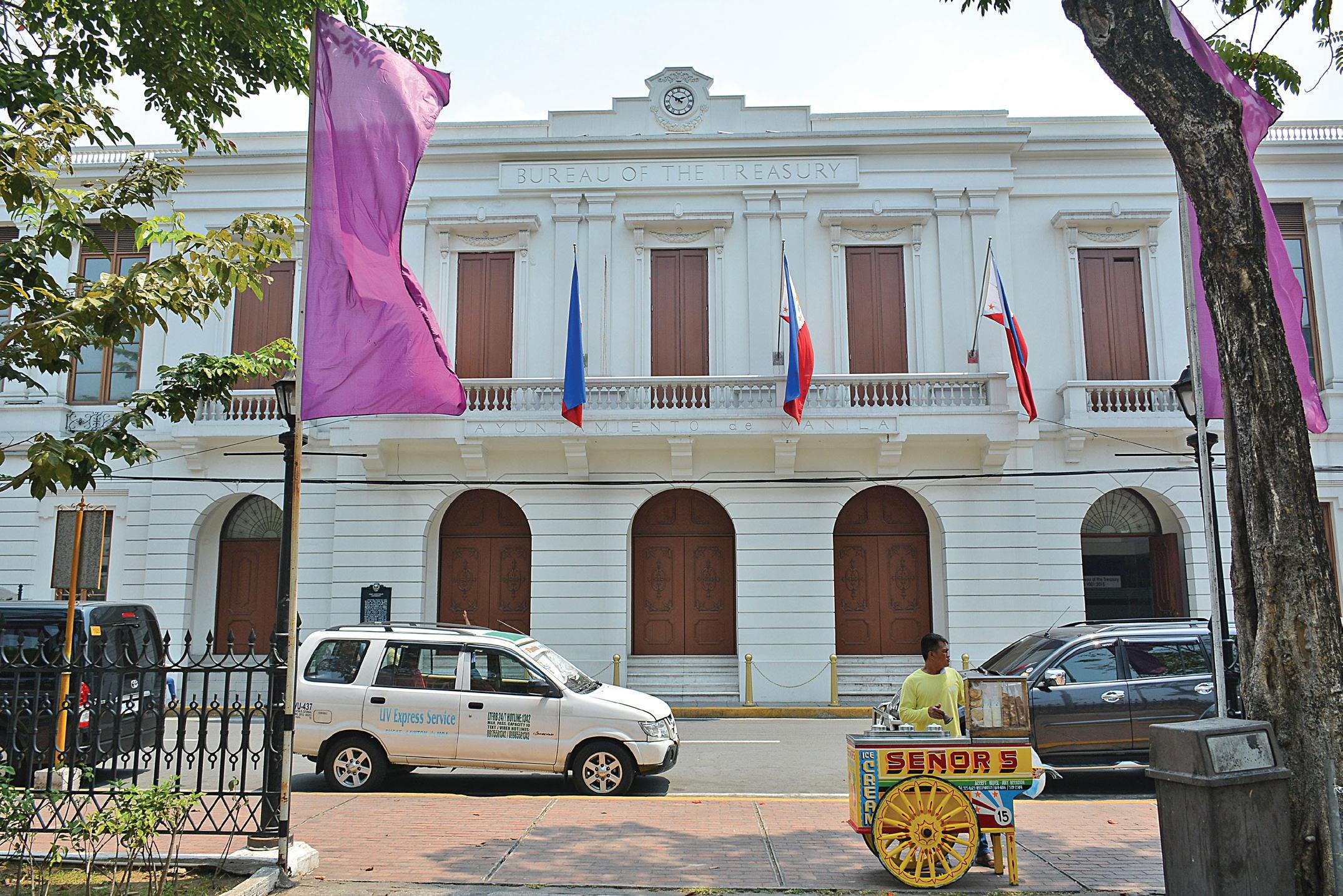

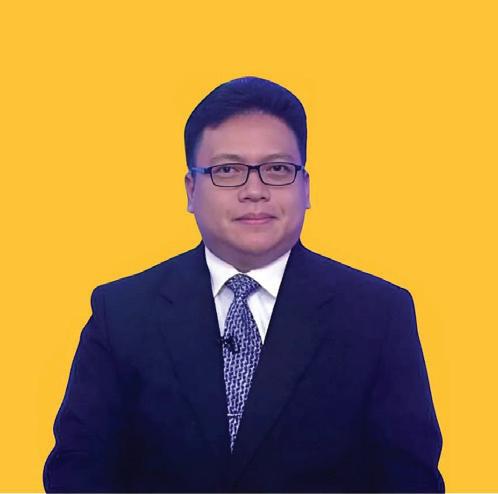
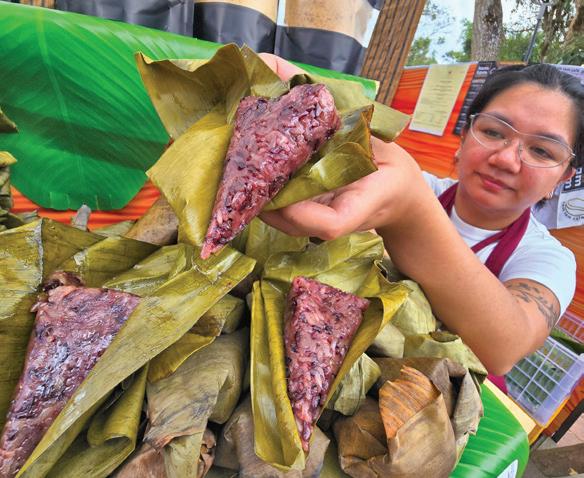

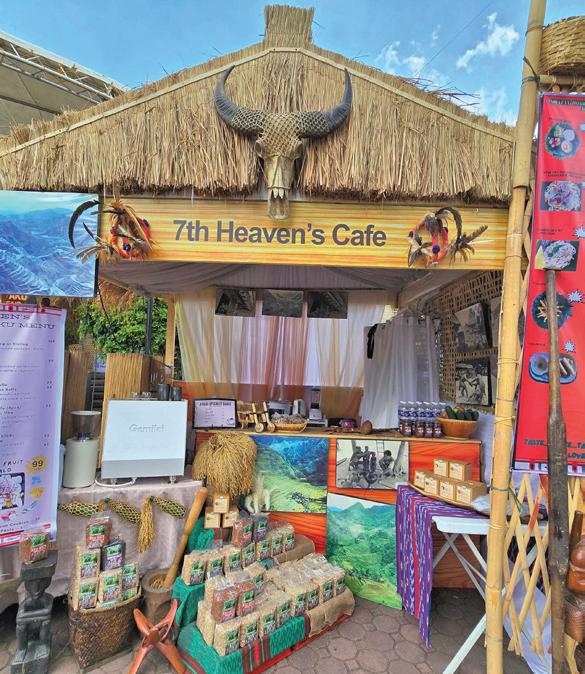


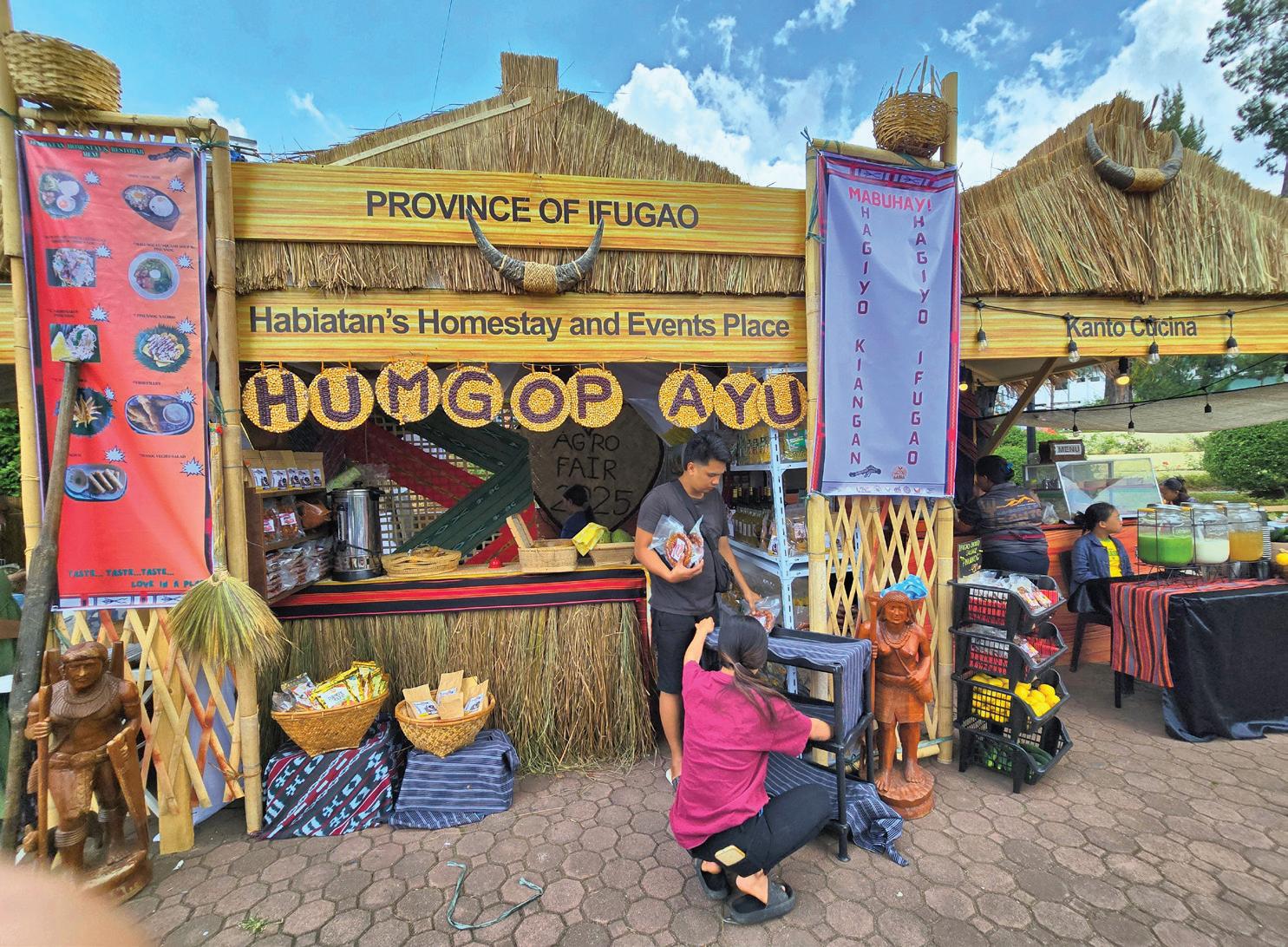

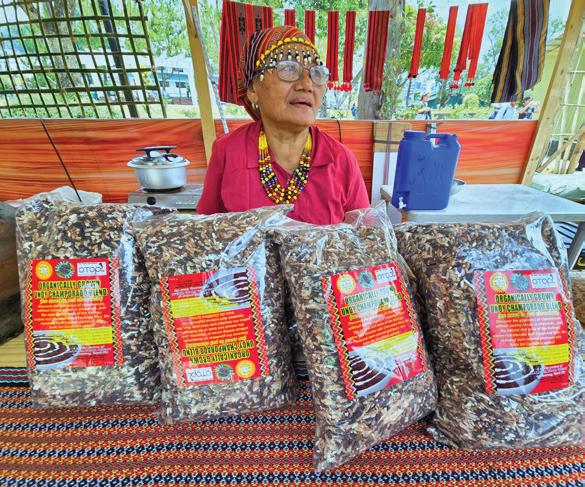

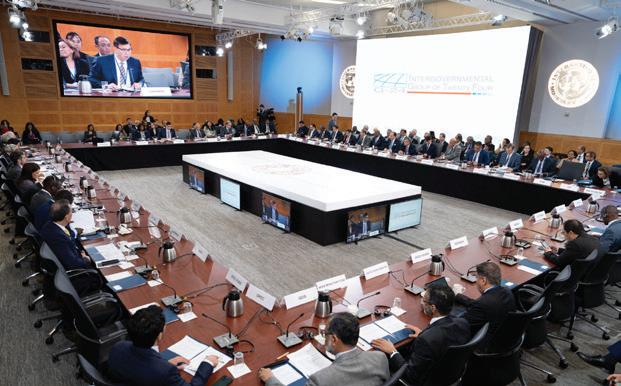
Balbosa
as the Philippines, are faced with economic shocks, constrained fiscal space, climate change and growing
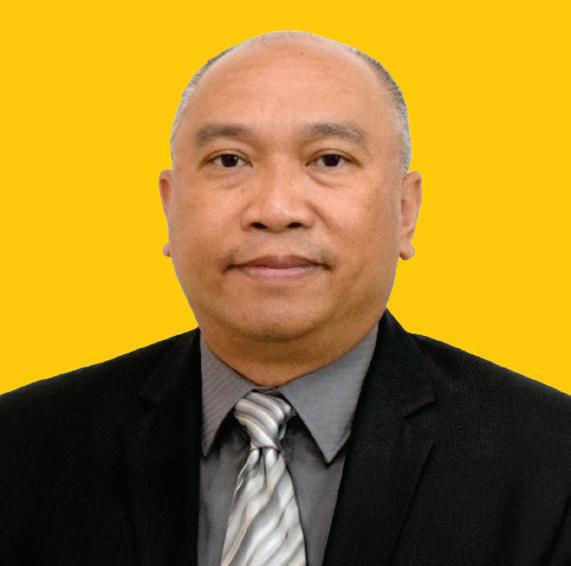
economies are necessary to the global supply chain.
Apart from international support, Balbosa said there is a need to implement sound fiscal and monetary policies aligned with the evolving dynamics of the global economy to ensure long-term economic resilience and stability amid global headwinds.
The World Bank and the IMF were also told to continue collaborating with other international financial institutions in supporting vulnerable countries and finding innovative ways to provide financing to programs and projects that contribute to global
growth and development.
For the World Bank’s part, Managing Director of Operations Anna Bjerde said the Bank’s Project Preparation Facility (PPF) can support developing countries overcome project preparation barriers. The facility can be tapped by both the International Bank for Reconstruction and Development (IBRD) and the International Development Association (IDA) clients.
“We think it will be very helpful in preparing good projects that are important for your development,” Bjerde said.
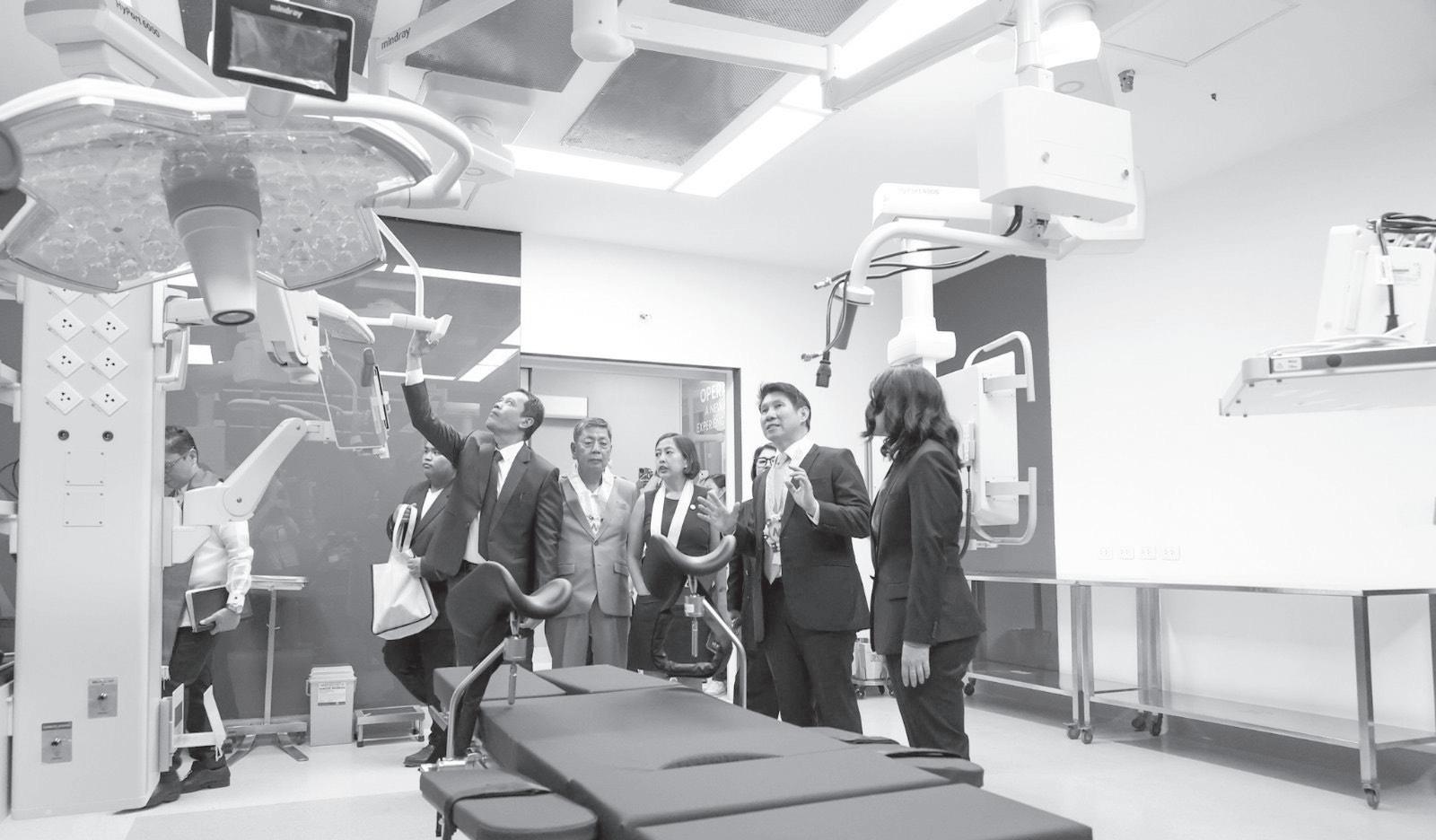
MAKATI Mayor Abby Binay on Friday led the full opening of Makati Life Medical Center, the Philippines’s first and largest Public-Private Partnership hospital project between the City Government of Makati and Life Nurture Inc. Mayor Abby received a scale model of Makati Life Medical Center (MLMC) from President and CEO Dr. Dennis Sta. Ana during the formal opening of the state-of-the-art healthcare facility, situated in the heart of Makati’s Business District.
This next phase of operations activates key hospital services including Emergency Care, Critical Care, Surgical Services, Admissions, and Women’s Health, while also making existing ancillary services available through inpatient care. The comprehensive healthcare facility offers a full spectrum of medical services, including advanced Imaging Services such as MRI, CT Scan, 3D Mammogram, Ultrasound, and X-Ray. Patients can also access Cardiovascular Exams including 2D Echo, ECG, and 24-hour BP Monitoring, alongside Comprehensive Laboratory Tests.
The medical center features an onsite Pharmacy with delivery options, as well as an Ambulatory Surgical Clinic performing procedures such as Colonoscopy, Arthroscopy, Mastectomy, Gastroscopy, and EGD. Consultations are available across multiple specialties, from Family Medicine to various specialist fields.
The hospital currently serves up to 800 outpatients daily and can now accommodate up to 100 patient admissions per day.
Mayor Abby was joined by Rep. Luis Campos, Congressman Kid Peña, Vice Mayor Monique Lagdameo, City Administrator Claro Certeza, City Health Officer Dr. Roland Unson, city councilors, and city department heads.
Also joining them were MLMC Chairman Dr. Alejandro Ramon Prieto, CFO Engr. William Russell Scheirman Jr., EVP and COO Dr. Ermin Edgardo Ona, SVP and Chief Medical Officer Dr. Brian Cabral, SVP and Chief Marketing Officer Josephine Aguilar; Chief Nursing Officer Beda Galicia, SVP & Head of Support Services Ma. Michaela Canlas.
By Justine Xyrah Garcia
THE Commission on Elections has cleared the Department of Agriculture’s P20-per-kilo rice program for rollout in the Visayas, exempting it from the election spending ban.

In Memorandum No. 2507984 released Friday, Comelec Chairman George Erwin M. Garcia approved the request of Agriculture Secretary Francisco P. Tiu Laurel Jr. to exempt the DA’s rice project from the prohibition on government spending during the election period.
“By virtue of the authority granted upon me under Comelec Resolution No. 11060, promulgated on 13 September 2024, as amended by Comelec Resolution No. 11118, promulgated on 21 Feb -
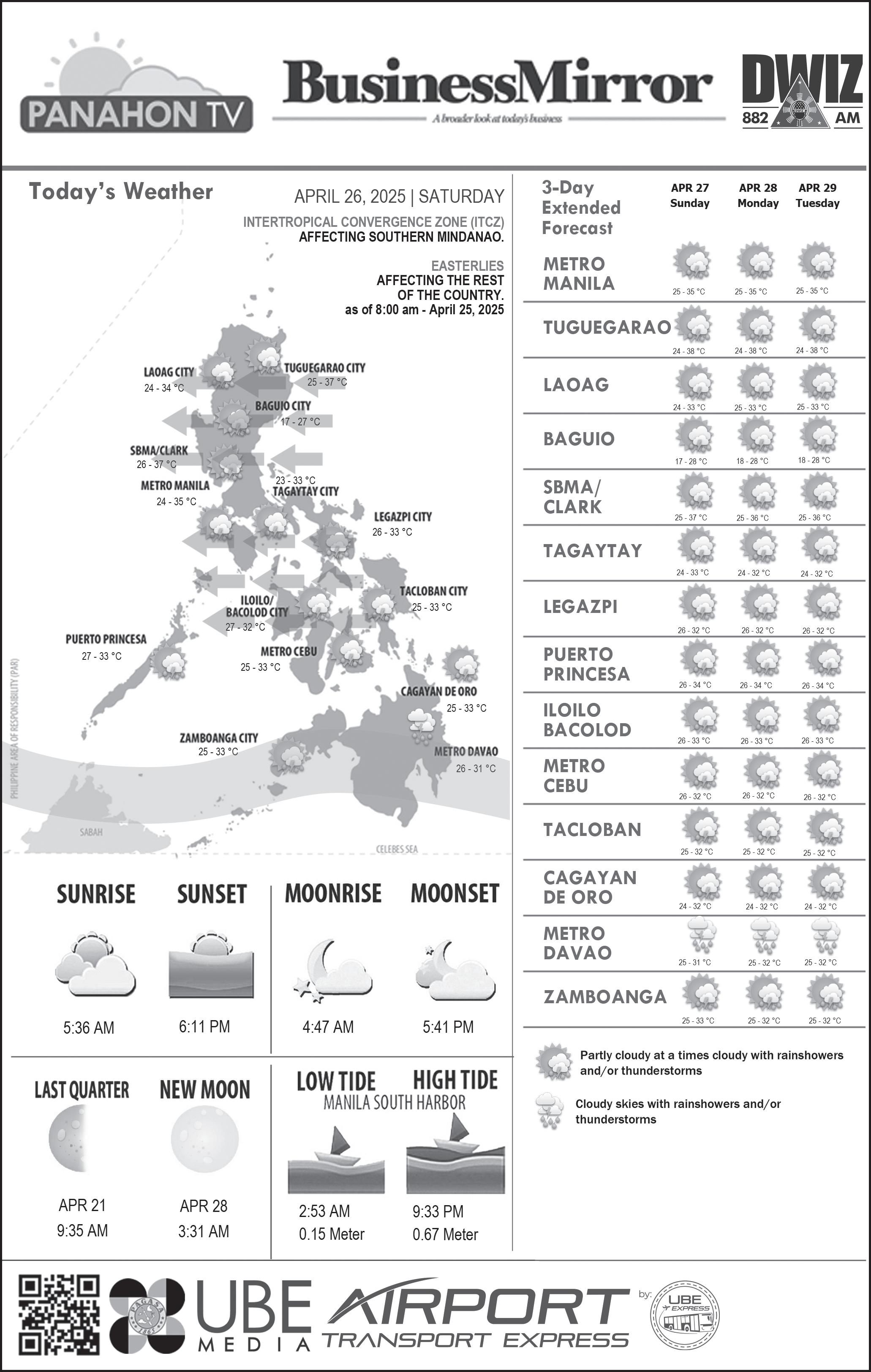
ruary 2025, the recommendation of the Law Department is hereby APPROVED,” Garcia wrote.
Comelec emphasized that the rice project must not include the distribution of social aid such as medical or burial assistance.
Under the conditions set, elected officials, candidates, and aspirants are also barred from being present at any distribution activity.
The DA is also required to submit periodic written reports of disbursements to the Office of the concerned Regional Election Director.
The poll chief added handwritten instructions to the memorandum, stating that local government units (LGUs) partnering with the
DA must also secure a separate exemption from the poll body if they plan to subsidize the rice price. He further noted that distribution should take place in public areas, with unrestricted access to media and concerned groups.
Speaking in an ambush interview at Manila Hotel, Garcia said the additional conditions were intended to ensure transparency and prevent misuse of the program.
“Just because the DA and the [National Food Authority] were granted an exemption doesn’t mean the LGUs are automatically covered. The DA will sell the rice to LGUs at P33. If an LGU brings that down to P20, that means it’s subsidizing P13—and that requires an exemption from us,” he said.
Asked about concerns of votebuying, especially in Regions 6, 7, and 8—considered vote-rich areas—Garcia said it is the Marcos administration’s responsibility to address those issues.
“From our end, the exemption was granted in line with the authority given to us. If someone questions it, that’s a separate matter. If the argument is that this is vote-buying, then does that mean all forms of aid are vote-buying?” he said.
The rice project has a total funding of P5 billion and is set to run until 2028.
Garcia clarified that Comelec’s jurisdiction only covers the period until May 11—the end of the election spending ban.
In a text message to the BusinessMirror, Garcia said it is the department’s “discretion” to determine how much of the P5-billion allocation will be used during the exemption period.
the exporters, and also with the importers,” Roque told reporters on the sidelines of the Franchise Asia Philippines 2025 Expo opening ceremonies.
Roque also noted: “And we want to get a consensus also, so when we decide, it’s not based on what we think, but based on the consultations with the different industries.”
“We want that whatever we negotiate there will be for the best of the industries of the Philippines,” the Trade chief emphasized.
Roque told this paper the particular industries that were consulted by the government in preparation for the talks with US government officials.
“There’s the group that sells coconut, coconut water, coconut cream, coconut milk. There’s also garments, semiconductors.... Most of what we export to them and then for the importers, we’re still gathering them so once we get that group—so that we are accurate—we will tell you [the concessions],” the Trade chief told this paper.
The Trade secretary also said DTI met with groups that import goods from the US. She said: “Because we can also leverage there.”
Roque cited the inputs they pooled from stakeholders, hinting: “Definitely, they want lower tariffs than our neighboring countries. Let’s put it this way. Because once our tariff is lower than our neighboring countries, then that gives us an edge in terms of business to the US, in terms of pricing, in terms of, I mean, overall business.”
Continued from A1 in borrowing costs, Ricafort said.
11.78 percent of the government’s borrowing program of P2.545 trillion this year. The Treasury is tasked to raise P2.037 trillion in gross domestic borrowings and $3.5 billion in global bond floatation.
Proceeds from the issuance of FXTNs will bankroll the government’s priority projects in the agriculture, infrastructure, education and healthcare sectors.
Rizal Commercial Banking Corporation (RCBC) Chief Economist Michael L. Ricafort said the P300 billion generated is a “prudent move” to hedge the national government’s financing requirements to manage interest rate risks amid the ongoing tariff war.
The US Federal Reserve (Fed) could pause monetary policy easing, which could be mirrored by the Bangko Sentral ng Pilipinas (BSP), if the higher tariffs imposed by the Trump administration lead to higher inflation in the United States.
This could make debt servicing more costly for the government, as there would be less of a reduction
“Risk on US Treasuries losing safe haven status would potentially lead to higher US Treasury yields that would lead to higher borrowing costs around the world,” Ricafort added, as investors lose confidence in Trump’s various decisions. US Treasuries are the benchmark for setting interest rate costs or spread/premium for both the government and corporate borrowers worldwide and locally.
“We should also lock in long while we can, just in case the interest rates go up, so that we can have, let’s say, a majority. It was more of a diversification strategy, which makes sense,” BDO Capital and Investment Corporation President Eduardo Francisco said.
“If the US rates go up, despite the economy improving here, the governor will have a hard time bringing the rates further down because there’s a big disparity. So that’s why we have this longer term,” Francisco added.
“Despite ongoing global economic uncertainties, the success of the FXTN offering highlights the strength of the domestic fixedincome market and investor con-
fidence in government securities as stable investment options,” the Treasury said.
By establishing liquid benchmarks, the Treasury said this will also provide reference points for price discovery and trading in the secondary market to boost liquidity and facilitate efficient capital mobilization.
“This inaugural public offering of the 10-year benchmark FXTNs is not only about raising funds— it’s about giving the market more ways to invest in their future and take part in the Republic’s programs and goals,” National Treasurer Sharon P. Almanza said.
The offering was made available to investors across various account types, including corporates, cooperatives, trust funds, retirement funds, provident funds and other institutional investors.
The settlement and listing on the Philippine Dealing & Exchange Corp. Fixed Income Board is scheduled on April 28, 2025.
The government has borrowed a total of P552.692 billion as of the end of February, while the government’s outstanding debt reached a new high of P16.632 trillion.
IFIs asked: Hike support for emerging
and developing economies
“I can assure you, we take our responsibility to buffer countries very seriously. Before we started this meeting at the Fund, we had a review of all countries’ degrees of vulnerability. What can we do? And I know the Bank does the same thing, and together, we actually can provide some assurances that countries are not on their
own in this more difficult time,” IMF Managing Director Kristalina Georgieva added. The G-24 was formed in 1971 to coordinate the positions of developing countries on international monetary and development finance issues to ensure that their interests are adequately represented in negotiations on international monetary matters. Though originally named af-
ter the number of the founding member-states, the G-24 now has 29 members, namely: Algeria, Argentina, Brazil, China, Colombia, Congo, Cote d’Ivoire, Ecuador, Egypt, Ethiopia, Gabon, Ghana, Guatemala, Haiti, India, Iran, Kenya, Lebanon, Mexico, Morocco, Nigeria, Pakistan, Peru, the Philippines, South Africa, Sri Lanka, Syria, Trinidad and
and
www.businessmirror.com.ph
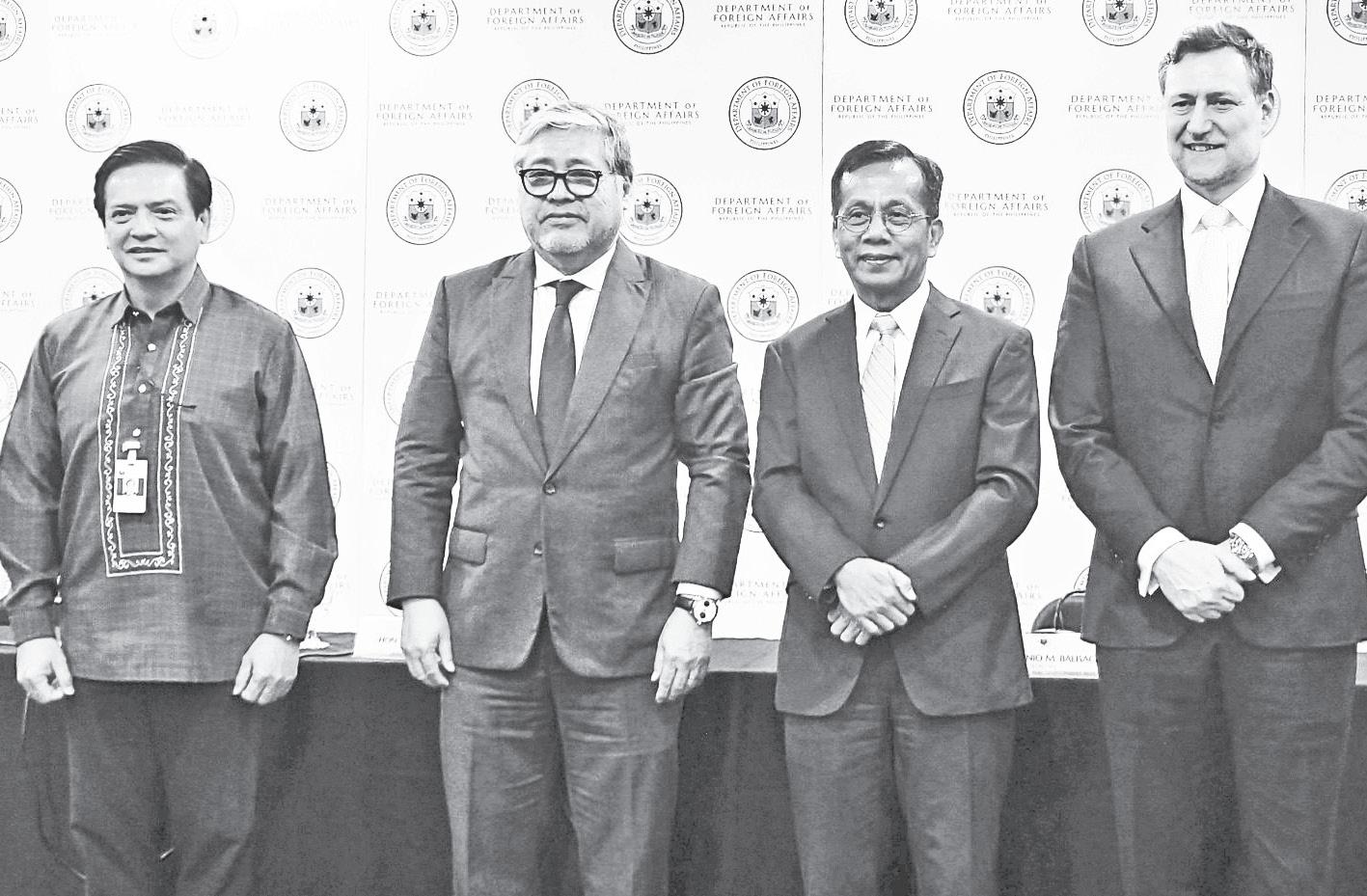
In shadow of trade wars, 200 senior officials from mid-income countries meet in Manila
By Malou Talosig-Bartolome
FOREIGN ministers and senior officials from 19 middle-income countries are gathering in Manila next week to formulate solutions in sustaining their growth as the global trade anxiety lingers following America’s potential return to protectionism.
In a joint press conference, the Department of Foreign Affairs (DFA) and the National Economic and Development Authority (NEDA) said they expect around 200 participants to attend the High-Level Conference of Middle-Income Countries at the Makati Shang-rila Hotel on April 28-29. There are more than 100 countries which are considered “middle income”— representing 75 percent of the world’s population.
In 2016, the Philippines and 18 other countries formed the so-called “LikeMinded Group for Middle-Income Countries” (LMG-MICs) in the United Nations in New York. The coalition have said they have needs and challenges that are distinct from those by low-income and developed economies.
Aside from the Philippines, the other members of the LMG-MICs are : Armenia, Belarus, Chile, Colombia, Costa Rica, Dominican Republic, Ecuador, El Salvador, Guatemala, Honduras, Jamaica, Lebanon, Mexico, Morocco, Namibia, Panama, Peru, and Uruguay.
The Philippines is the chair of the LMG-MICs at the United Nations this year, succeeding Morocco.
For this two-day conference, DFA Secretary Enrique Manalo will lead the high-level segment. Manalo said the LMG-MIC would like to tackle issues of middle-income countries such as inequality among nations, climate vulnerability, access to technology, financing, and innovation.
“Middle-income countries are victims of their own success in many ways. The
higher you reach in development, in income, sometimes you are penalized. For example in terms of access to development assistance, greater access to technology and financing,” he said.
Neda Secretary Arsenio Balisacan, who heads the Philippine delegation, added that participants of the conference may identify other financing schemes like the ODA. This includes getting access to higher credit ratings for the governments or companies which exhibit “good housekeeping” fiscal order.
The LMG-MICs will also push for the United Nations to review “outdated” formulas if they indeed reflect the economic growth and development of a country.
“We need to develop more accurate developing indicators and not rely on traditional measures such as GDP. We may need to take into account other factors,” Manalo said.
Balisacan said the Philippines expects to transition from lower middle-income to upper middle-income country by next year.
“As our economy expands and the middle class grows, we must rethink how we educate, invest, build, and collaborate to ensure that growth is both inclusive and sustainable. Otherwise, we risk falling into the so-called ‘middle-income trap,‘” Balisacan said.
Arnaud Peral, UN Resident Coordinator in Manila, hopes that the two-day conference will release concrete recommendations and strategies on how middle-income countries can achieve the UN Sustainable Development Goals (SDG) by 2030.
Asked if the tariff war will be reflected in the final outcome document, Manalo replied, “I think this will be reflected in a general way...Certainly, in our efforts to promote greater free and open trade, I think those issues that you mentioned will be addressed in an indirect manner in the Makati Declaration.”
By Ma. Stella F. Arnaldo Special to the BusinessMirror
CLOSE to 60,000 bakasyonistas
flocked to Boracay Island during the Semana Santa (Holy Week), confirming videos that went viral on social media of the packed main white beach especially at sunset.
Data from the Municipal Tourism Office of Malay, Aklan showed that total daily tourist arrivals on the island reached 59,317 from Palm Sunday (April 13) to Easter Sunday (April 20), up 5.7 percent from the Semana Santa (March 24-31) in 2024. However, daily departures this Holy Week fell by some 12 percent to 47,210 from last year’s 53,526, which left more tourists on the island. This resulted in the breaching anew of the Boracay’s carrying capacity of 19,215 tourists at any given time.
As in previous Holy Weeks, postpandemic, breaches in the island’s carrying capacity started on Maundy Thursday (April 17), with 29,056 tourists remaining on the island, after deducting the daily tourist departures from the tourist arrivals estimated to stay for three days. The peak reached on Good Friday (April 18), with 30,472 remaining on the island, and sliding
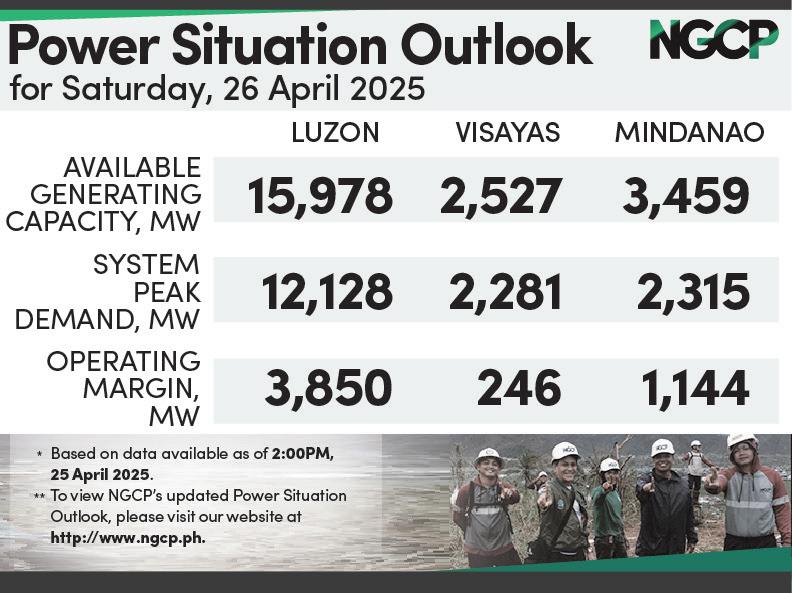
By Reine Juvierre S. Alberto
MOST Philippine banks maintained their credit standards for loans to businesses and consumers in the first quarter of the year, according to a survey by the Bangko Sentral ng Pilipinas (BSP).
Based on the results of the Q1 2025 Senior Bank Loan Officers’ Survey (SLOS), 81.8 percent of banks retained their credit standards for loans to businesses and consumers based on the modal approach.
This is a decline from the previous quarter, where 83.3 percent of respondents indicated unchanged loan standards.
Meanwhile, the diffusion index (DI) method indicated fewer respondents reported tighter credit standards in the first quarter compared to the previous survey round.
“Banks tightened their loan standards for enterprises due to the deterioration in borrow -
ers’ profile and profitability of bank’s portfolio,” the BSP said.
Over the second quarter, 85.5 percent of banks anticipate generally unchanged lending standards for enterprises based on the modal approach.
Similarly, the DI results reflected expectations of unchanged loan standards for the first quarter due to a steady economic outlook and unchanged risk tolerance and profile of borrowers.
As for loans to households, fewer banks kept household loan standards unchanged compared to the previous quarter.
A net tightening of credit standards due to concerns over borrower profiles, risk tolerance and portfolio profitability was observed using the DI method.
Looking ahead, most banks expect consumer loan standards to remain steady, while the DI approach indicates banks’ expectations of deterioration in the profitability of bank’s portfolio and borrowers’ profile.
In terms of loan demand, the majority of banks reported unchanged overall demand for enterprise loans based on the modal approach.
The DI method showed a net increase in firms’ loan demand due to higher customer inventory financing needs and clients’ more optimistic economic expectations.
For the next quarter, most banks expect demand to remain stable, while DI results showed a continued rise in demand due to similar factors and increased short-term financing needs.
About 71.8 percent of banks reported steady consumer loan demand from households, slightly down from 73.7 percent in Q4 2024.
However, the DI method showed a net increase, on the back of better financing terms and higher consumption.
to 27,501 on Black Saturday (April 19), and 23,017 on Easter Sunday (April 20). In previous Holy Week periods, the remaining tourists on the island usually fell significantly on Easter Sunday, which brought the island back to compliance with its carrying capacity. “Carrying capacity” refers to an ecosystem’s ability to support people and other living things without any negative impact.
No warning from DENR GOVERNMENT sources said the Department of Environment and Natural Resources (DENR) has yet to issue a stern warning on the breaching of Boracay’s carrying capacity, which the agency had determined in a study in 2018. The DENR also said tourist arrivals should be capped at 6,405 per day. “The DENR is the mandated agency to issue the notice to the LGU (local government unit) if there are breaches in the carrying capacity. We are not aware if they have issued any for this long holiday,” said a BusinessMirror source. The last breach warning was issued in April 2022 by then Interior Secretary Eduardo Año, in separate letters to Aklan Gov.
By Reine Juvierre S. Alberto
SY-LED BDO Unibank, Inc. (BDO) saw its net income rise to P19.7 billion in the first quarter of 2025, on the back of increased revenues despite frontloading various expenses at the start of the year.
In a press briefing on Friday, BDO
President and Chief Executive Officer Nestor Tan reported the country’s top bank booked a net income of P19.7 billion in the first quarter, up by 7 percent from P18.5 billion during the same period a year ago.
Tan said “drivers continue to be strong” as BDO’s net interest income grew by 6 percent year-on-year to P47.8 billion, with the growth in earning assets, while fee income also expanded by 26 percent to P14.9 billion.
While BDO’s gross customer loans increased by 12 percent to P3.3 trillion, Tan said loans to large corporations have slowed down due to uncertainty and caution as a result of the United States’ tariffs.
“In terms of loan growth, this is where
we see the impact of the tariff … Large corporations, which are normally the ones that go into huge infrastructure projects and capital expenditures, are now down to high single digit,” Tan said.
Corporations posted a loan growth of 8.7 percent in the first quarter, compared to the 12.6 percent recorded in 2024.
“They are not abandoning investments, but with the tariff and with all of the actions happening with Trump 2.0, some of them have opted to defer. So we do expect them to come in, but at the moment, they have not come in during the first quarter,” Tan said.
This year, Tan said BDO is concerned with the volatility of exchange rates and interest rates due to what is happening in the United States “because it’s impacting everybody,” as well as renewed inflation and the government’s fiscal and current account deficits.
“SO our near-term business outlook,
In the DI approach, a positive DI for credit standards indicates that the proportion of respondent banks that have tightened their credit standards exceeds those that eased (“net tightening”), whereas a negative DI for credit standards indicates that more respondent banks have eased their credit standards compared to those that tightened (“net easing”).
Meanwhile, an unchanged credit standard in the DI approach indicates that the proportion of the respondent banks that have tightened their credit standards is equal to those that eased their credit standards.
For the next quarter, 66.7 percent of banks expect stable demand, while DI results point to a continued rise due to the same factors. The modal approach analyzes the survey results by looking at the option with the highest share of responses. The three options for the modal approach are either tightening, easing or unchanged credit standards for loans to enterprises and for loans to households.
BDO’s net income rises to ₧19.7B in Q1 despite frontloaded expenses
loan growth will continue, with stable but maybe slightly decreasing spreads,” Tan said.
Philippine banks should also “expect the worst” as financial crises, such as the Asian financial crisis, the 2008 global financial crisis and the Covid-19 pandemic, could happen again, Tan said. “We just don’t know what will start it.”
“Every so often, unfortunately becoming more frequent, we have what’s called a black swan. All of these, nobody anticipated,” he said.
BDO has additional general provisions for unexpected losses, close to about 2 percent of its loan book, Tan said. “Because we know that there’s a potential unexpected loss out there that we have to plan for.”
NPL ratio
MEANWHILE , the bank’s non-performing loan (NPL) ratio went down to 1.77 percent, with the NPL coverage at 143 percent. Bank deposits also increased by 6
percent to P3.8 trillion in the first quarter, with a current account/savings account (CASA) ratio of 70 percent. Shareholders’ equity increased by 12 percent to P594.9 billion on continued profitable operations, with Book Value Per Share up by 12 percent to P111.13 billion.
The bank’s Common Equity Tier ratio was higher at 14.4 percent, from 13.6 percent in the same period last year. This year, BDO’s net income may be “a little less” compared to last year’s growth of 12 percent due to the expected decline in interest rates impacting the bank’s spreads, Tan said.
“It will still have growth, but probably not at the same level as last year,” Tan said. Still, Tan said the bank will focus on what it can control and will adjust to the environment as it happens.
“When rates are lower, then of course we get a squeeze on the margin and that will impact our net interest income,” he added.
By Samuel P. Medenilla
TO help boost tourism and the local economy, President Ferdinand Marcos issued Executive Order (EO) No. 86 series of 2025 authorizing the issuance of Digital Nomad Visas (DNV).
In the new three-page issuance dated 24 April 2025, the chief executive enabled the Department of Foreign Affairs (DFA) to issue the DNV to non-immigrant foreigners, who would like to temporarily stay in the country and work remotely using digital technologies and have an employer abroad.
“The BI (Bureau of Immigration) is hereby directed to closely coordinate with DFA in facilitating security clearance of foreigners applying for DNVs, subject to existing laws, rules and regulations,” Marcos said.
Foreigners must submit the following requirements to qualify for the program: at least 18 years old; show proof of remote work using digital technology; proof of sufficient income which is generated outside the Philippines; proof of no criminal record; must have health insurance valid for the period of the DNV. They must also be a national of a country that offers DNVs to Filipinos and where the Philippines has a Foreign Service Post; must not pose a threat to the internal or external security of the Philippines; and must not be employed in the Philippines.
“Foreigners who are issued valid
DNVs must maintain compliance with the abovementioned conditions during the validity of the DNVs,” Marcos said.
The DNVs will allow its holder to enter and/or stay in the Philippines for a maximum period of one year. The holders may renew their DNVs for the same duration and they may multiple entry privileges.
DFA will determine the grounds for the DNVs, which will include engagement in local employment, commission of fraud, or misrepresentation in the application, and/or violation of immigration laws.
Aside from BI, DFA will also coordinate the Department of Justice (DOJ), Department of Tourism (DOT), and Bureau of Internal Revenue (BIR) to study and, as may be necessary, adopt measures for the pilot and full rollout of the DNV program with the goal of “attracting eligible foreigners to avail the program.”
They will issue the implementing guidelines for EO 86 within 30 days from its effectivity after it was published in the Official Gazette on 25 April 2025 or in a newspaper of general circulation.
EO 86 is consistent with the targets under the Philippine Development Plan 2023-2028 to promote tourism, economic development and digital innovation.
The World Economic Forum has ranked the Philippines as the 7th fastest-growing remote work hub country in the world in 2023.
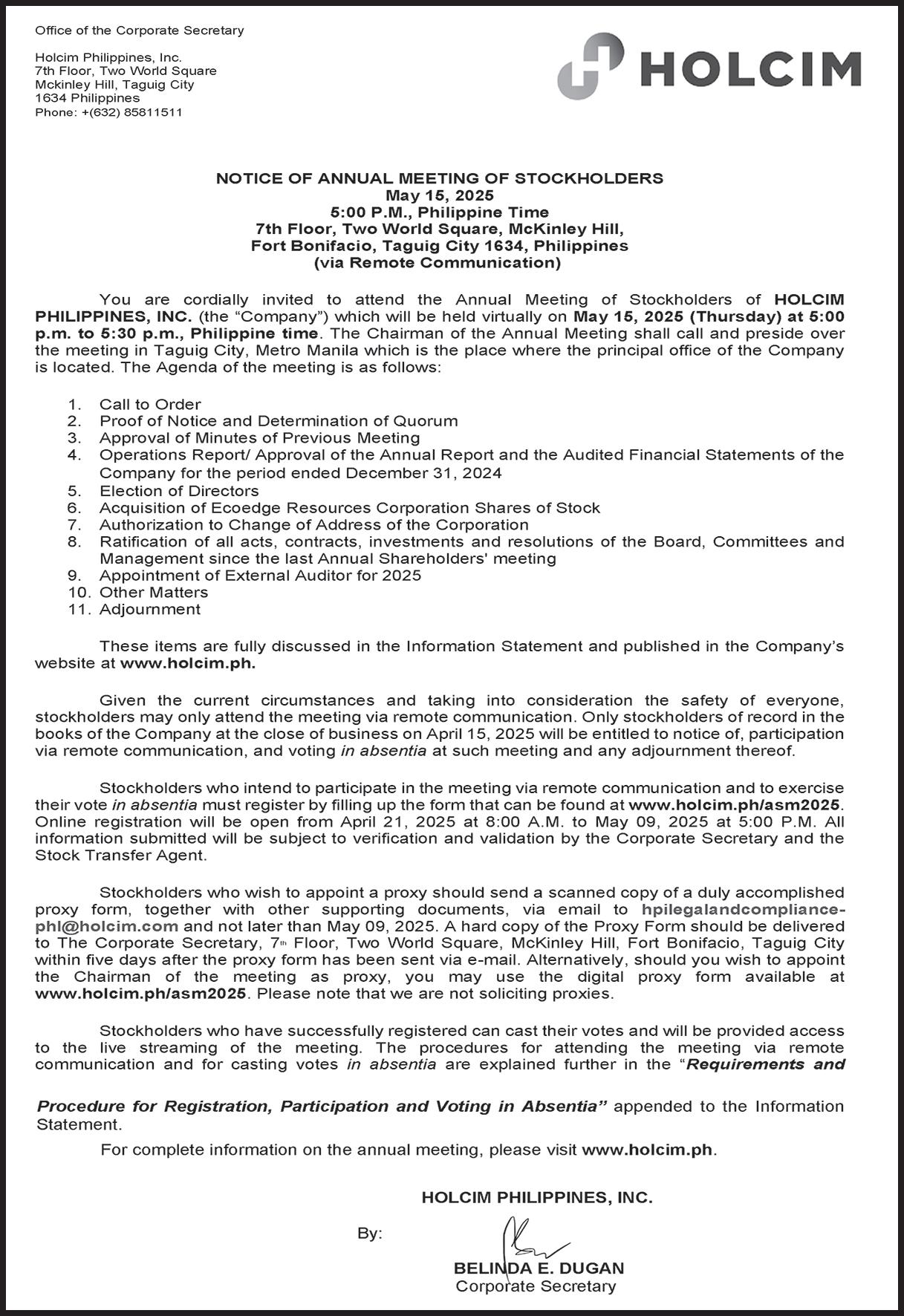
By Samuel P. Medenilla
ALARMED over the possible attempts by foreign entities to interfere in the conduct of the May 2025 Midterm polls, President Ferdinand Marcos has ordered concerned government agencies to conduct an investigation on the reported illegal activity.
“This is truly alarming and we will intensify, at the behest of our administration, a thorough investigation so that we can find out the truth about
this,” Palace Press Officer Claire Castro said in Filipino in a press briefing in Malacañang last Friday.
In a Senate hearing on Thursday, the National Security Council (NSC) said it suspects the submersible drones and the recent Chinese espionage activities indicate Beijing’s alleged attempts to influence the outcome of the forthcoming elections.
Seven suspected Chinese spies were arrested by authorities in January and February.
The Commission on Elections said it also observed similar interference attempts from foreign entities with the surge of criticism against it in its preparations for the midterm polls in social media nearly a month ago.
(See earlier BusinessMirror story: https://businessmirror.com.ph/2025/04/24/ alien-meddling-in-may-pollseyed-by-comelec/)
“Because this [Senate hearing] happened yesterday and there was an investigation, it has already reached the President, so
By Reine Juvierre S. Alberto
BOUT
AP83.7 million worth of smuggled cigarettes were seized by the Bureau of Customs (BOC) from a warehouse in Bocaue, Bulacan on Thursday.
In a statement on Friday, the BOC said the Customs Intelligence and Investigation Service-Manila International Container Port (MICP) uncovered 717 master cases of assorted branded cigarettes inside the warehouse, including six trucks filled with cigarettes.
Brands of the illicit cigarettes include Modern, TS, Two Moon, Tattoo, Fort, H&P, Xplore, Carnival, Concord, RGD, Marvels, Chesterfields and New Orleans.
The CIIS-MICP agents were also joined by personnel from the Philippine Coast Guard-Task Force Aduana (PCG-TFA) and in coordination with the Philippine National Police-Criminal Investigation and Detection Group’s (PNP-CIDG) Anti-Fraud and Commercial Crimes Unit. BOC-CIIS Director Verne Enciso said that while the estimated
value of illicit cigarettes is worth P83.7 million, the full inventory will still be done to determine the actual value of the items.
“The warehouse has been sealed and padlocked to ensure the security of the goods until a full inventory is done,” Enciso added.
Enciso added that after receiving derogatory information about the possible presence of smuggled cigarettes in the warehouse, their team immediately verified the information given and proceeded to request a Letter of Authority
By Rex Anthony Naval
THE Philippine Air Force (PAF) on Thursday announced that it has acquired another C-208B Grand Caravan EX aircraft which also doubles as a reconnaisance plane as part of its ongoing modernization efforts.
The aircraft was formally placed in PAF service following the acceptance, turn-over, and blessing ceremony held at Villamor Air Base, Pasay City last April 24, Air Force spokesperson Col. Ma. Consuelo Castillo said in a statement.
She added that this aircraft marks the first arrival of a new air asset for this year, reinforcing
the PAF’s capability to support Armed Forces of the Philippines (AFP) operations and national development efforts.
“The C-208B Caravan EX aircraft, which arrived on April 16, 2025, at Clark Air Base, Pampanga, underwent a stringent technical inspection. It was funded through the Philippine General Appropriations Act of 2023 and acquired from Servo Aerotrade Services Inc., and manufactured by Textron Aviation in Wichita, Kansas, USA,” Castillo said.
She added that this new C208B EX aircraft joins three others of its kind in the PAF inventory.
Castillo said the C-208B has been heavily used for a wide range
Florencio Miraflores and Malay Mayor Frolibar Bautista.

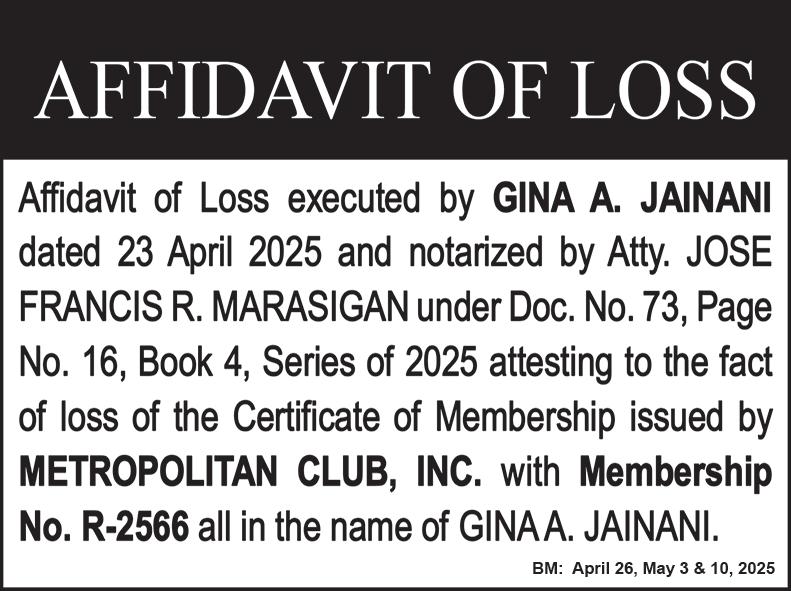
The same sources intimated that the DENR has yet to approve a new carrying capacity level for Boracay, although the recommendation from DENRRegion 6 has been pending with the central office since 2024. Island stakeholders had been pushing for an update in the carrying capacity, taking into the consideration the environmental changes and infrastructure improvements made during its governmentmandated rehabilitation. (See, “Boracay stakeholders seek increase in carrying capacity,” in the B usiness M irror , April 25, 2022.)
The DENR has also yet to complete any carrying capacity studies on other key island destinations El Nido, Panglao Island, and Siargao, which were planned under the term of Secretary Roy Cimatu.
Less than 5K foreigners visit MEANWHILE , separate data from the Department of Tourism showed 34,244 tourist arrivals from April 17 (Maundy Thursday)-20 (Easter Sunday), a 7.7-percent increase from
of missions, including troop and cargo transport, medical evacuation, intelligence, surveillance, and reconnaissance, and humanitarian assistance.
“Notably, this aircraft is part of the PAF’s continuing platform acquisition program, aimed at modernizing and expanding its fleet to meet evolving operational demands. In 2024, the PAF accepted several key platforms under Horizon 2 of the AFP Modernization Program. These included two T-129 ATAK helicopters, 10 S-70i Blackhawk helicopters (part of a larger acquisition of 32 units from Poland), one fixed air surveillance Radar System, and a ground-based air defense system. Furthermore,
the similar period last year.
Of the total arrivals for the period, 29,736 were domestic travelers (up 13.6 percent from the same period last year), while foreign nationals accounted for 4,294 (-21 percent). Only 214 overseas Filipinos (+17.6 percent)—Philippine passport holders permanently living abroad—visited the island on the last four days of the Holy Week.
Boracay Island was closed for six months in 2018 to clean up its main beachfront of encroaching establishments, as well as its waters which received effluents from the island’s establishments due to a faulty drainage system. However, the Department of Public Works and Highways has yet to complete its portion of the drainage system improvement project, thus leading to constant flooding of key areas on the island.
Local carriers said, aside from Boracay, popular destinations last Holy Week included Cebu, Davao, Puerto Princesa, Bohol, and Iloilo.
(See, “Semana Santa break has Pinoys packing for popular destinations here and abroad,” in the B usiness M irror , April 12, 2025.)
there really needs to be a prompt, more in-depth investigation [about this],” Castro said. China denied it is interfering with the preparations for the 2025 midterm polls.
Castro said the Palace will be coordinating with the NSC to get more details on the said interference attempts by China.
“For now, what we were told will still be investigated so we can find out more details and what is involved in these types of incidents,” she said.
(LOA) from the Customs Commissioner.
“Smugglers should know by now that if they try to smuggle drugs, cigarettes, counterfeit items, and many others through our borders, they will get caught and be persecuted to the fullest extent of the law,” Customs Commissioner Bienvenido Y. Rubio said.
The BOC reported a total of P8.583 billion worth of smuggled cigarettes, tobacco and vape products were confiscated 167 times in 2024.
The illicit cigarette trade has resulted in P54.4 billion in excise tax losses on cigarettes in 2024 alone, with the average foregone revenues amounting to between P60 billion and P100 billion every year.
the PAF also welcomed a C-130H tactical transport aircraft on Feb. 16, 2024, under the US government’s Excess Defense Articles Program,” she stressed.
Castillo said these strategic fleet enhancements underscore the PAF’s commitment to a stronger defense posture and more effective disaster response, ensuring greater capability and readiness in addressing emerging national and regional security concerns.
“Particularly, the PAF’s airlift assets, such as the C-130s, C-295s, and C-208s, along with rotary assets like the newly acquired medium-lift Blackhawk helicopters, are expected to support the AFP Unified Command’s operational requirements for the upcoming midterm national elections,” she concluded.
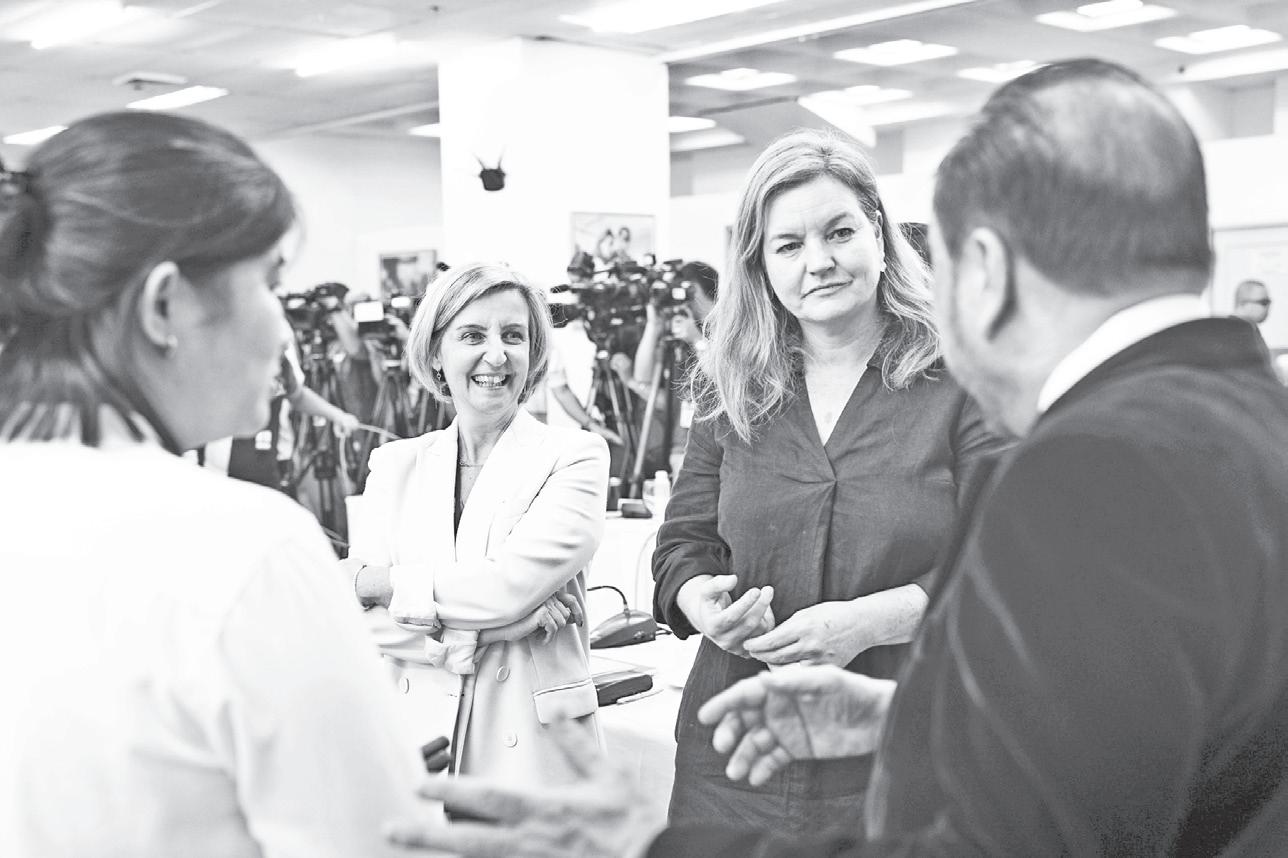
By Malou Talosig-Bartolome
FOREIGN interference in elections has been increasing worldwide, a ranking official of the European Union Election Observer Mission said.
“[Foreign interference] has become a common pattern in several elections around the world,” EU Observer Mission in the Philippines chief Marta Temido said after the formal launch of the EOM in the Philippines Friday. Temido, a member of the EU Parliament, said this when asked about reports that the Chinese Embassy has reportedly engaged the services of an agency to hire keyboard warriors for the May 2025 mid-term elections.
The EOM has been deploying observers to more than 65 countries since 2000.
This is the first time the EOM deployed long-term observers in the Philippines.
(See related story: https:// businessmirror.com. ph/2025/04/16/eu-sends72-election-observers/)
On Thursday, Sen. Francis Tolentino accused the Chinese Embassy of engaging the services of a public relations agency that will hire “keyboard warriors” for the purpose of the mid-term elections.
Hours later, the Chinese Foreign Ministry denied this.
“China follows the principle of non-interference in other countries’ domestic affairs. We have no interest in interfering in Philippine elections,” Guo Jiakun, MFA spokesperson, said.
Because of this new issue, the EU Observer Mission in the Philippines has a separate social
monitoring team in their party to cover farm trolls and foreign interference.
EU Ambassador to the Philippines Massimo Santoro said foreign interference in democratic elections has become a “common challenge.”
This is why, he said, the EU and the Philippines have stepped up efforts to cooperate on matters fighting disinformation by foreign actors attempting to interfere or influence the outcome of the elections.
They are also engaged in training the Philippines with cyber security that can be used not only during elections but also in more general security dimension.
Temido said it was the Philippine government which requested for the EOM to monitor the mid-term elections.
“Our presence aims to contribute to an inclusive, transparent and credible election process without interfering nor validating its results,” she said.
The EOM started its activity on March 28 with their core team of 12 analysts in Manila, then followed by the arrival and deployment of 72 long-term observers. More than 100 short-term observers will join them before election day.
EU will field more than 200 observers on May 12, the Election Day. This would be the largest deployment of EOM in 30 years of observation.
This includes a delegation from the European Parliament and around 20 diplomats accredited in the Philippines from EU Member States as well as from Canada, Norway, and Switzerland.
THE performance satisfaction ratings for the Senate and House of Representatives showed modest improvements in the April 2025 national survey conducted by the nonpartisan public opinion research firm WR Numero. In contrast, more Filipinos expressed dissatisfaction with the Supreme Court’s performance.
The latest Philippine Public Opinion Monitor polled Filipinos on their satisfaction with the performance of the Senate, House of Representatives, legislative district representatives, and the Supreme Court.
The nationwide survey revealed that nearly half of Filipinos (48 percent) said they were satisfied with the lower chamber’s performance, up 7-percentage-points from 43 percent in February.
Dissatisfaction and indecision were both at 26 percent. “Satisfaction with legislative district repre -
sentatives jumped to 68 percent, a 17-percentage-point increase from 51 percent in February, the survey showed. “Dissatisfaction dropped slightly from 14 percent to 12 percent, while 21 percent remained unsure.”
The Senate’s performance satisfaction rating rose slightly to 44 percent from 41 percent in February even as “Some 27 percent expressed dissatisfaction with the upper chamber, while 29 percent were undecided.”
Meanwhile, the Supreme Court’s approval rating dipped to 48 percent, down 1-percentagepoint from February, even as it noted : “The country’s highest court saw a notable increase in performance dissatisfaction, climbing to 25 percent from 16 percent in the same time period. Some 26 percent said they were unsure about the court’s performance.”
The nationwide survey, conducted from March 31 to April 7,
2025, was done through face-toface interviews with a nationally representative sample of 1,894 registered voters residing in the Philippines.
The nationwide survey has a margin of error of ±2% at a 95-percent confidence level. At the subnational level, the margin of error is ±6% for the National Capital Region, ±5% for North and Central Luzon, ±5% for South Luzon, ±5% for the Visayas, and ±5% for Mindanao, all at the same 95-percent confidence level.
These findings are part of the WR Numero Philippine Public Opinion Monitor, Volume 2025, Issue 2 (April 2025 National Survey). The survey includes the latest voter preferences for the May 2025 and 2028 elections, as well as current public opinion on the arrest of former President Rodrigo Duterte and the impeachment of Vice President Sara Duterte. Butch Fernandez
Go out empty, leave it all on the floor
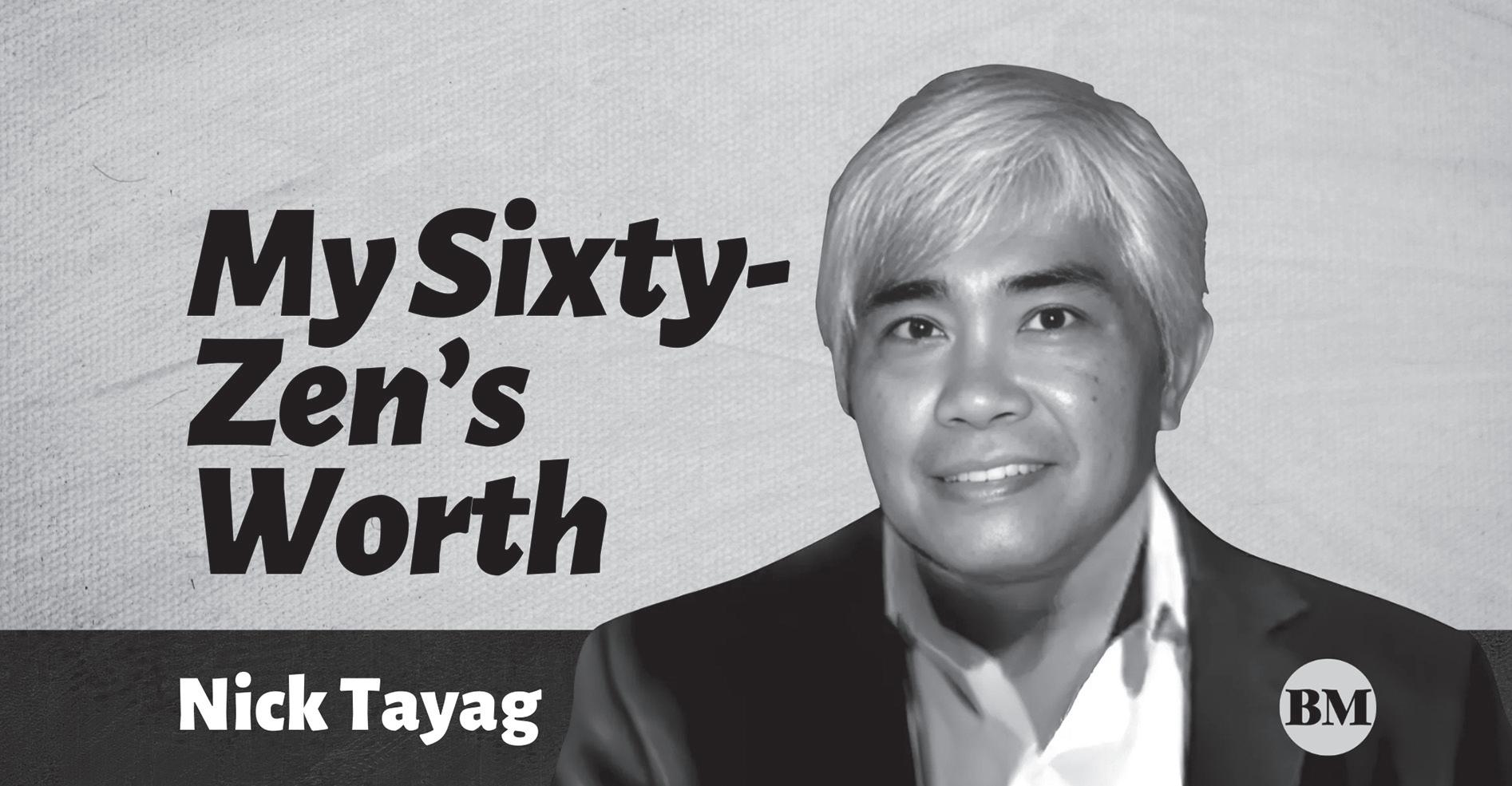
AT one point in a business conference, the speaker asked the attendees: “Where can you find the richest land in the world?” One member of the audience responded: “Oil-rich Gulf states.”
Another added: “Diamond mines in Africa.”
Shaking his head, the speaker said: “No, it is the cemetery. Yes, it is the richest land in the world, because millions of people have departed/died and they carried many valuable ideas that did not come to light nor benefit others. It is all in the cemetery where they are buried.”
Inspired by this answer, one of the attendees named Todd Henry wrote a book entitled “Die Empty.”


There is a line in his book that I like to highlight for all senior citizens: “Do not go to your grave and carry inside you the best that you have. Always choose to die empty.”
When I retired from advertising at 65, I left that trade with some sort of uneasy reluctance. I had an uncomfortable feeling that I wasn’t through with advertising. I could have given more, and what I had achieved at that point was not enough, and my best work was still ahead of me.
“Leave it all on the floor/field,” is a sport’s terminology that every coach says to his team at least once. It means “hold nothing back, put it all on the line until there’s nothing left anymore.”
So, let me ask my senior companions on this last stage of our voyage, are you sure that you would be leaving this life without regret, that you did not play it safe, but you gave it your all?
Consider Chef Jiro Ono, a prestigious sushi bar in Tokyo Japan, which is the first-ever sushi restaurant to receive a 3-star Michelin honor. Now retired in his late 90s, Jiro Ono still makes sushi for customers from time to time, saying he still wants to continue giving his best as a sushi master. In one interview, he stated that he wishes to die while making sushi, preparing “kohada,” a small shiny fish considered to be the king of sushi.
Chef Ono is just like my 80-plus friend who is an award-winning documentary filmmaker. He has vowed to keep on doing documentaries until he literally drops dead, on location or on his editing console.
Another friend also in his seventies is painting landscapes on a daily basis.
But his paintings are not making him rich. It’s something he wants to do in the remaining years of his lifetime. And he’s having the time of his life, believing he would live on through the paintings he would be leaving behind.
I told him to be like Pablo Picasso who reportedly had been painting just a few hours before he died on April 8, 1973 at the age of 91. He
Dmade 50,000 works of art in his life. Grandma Moses, born Anna Mary Robertson Moses, was a farmer and a homemaker who picked up painting at the age of 78! Her primitive style and love for rural landscapes made her an overnight sensation in the art world. She continued to paint until her death at 101 years old and is now considered one of America’s most significant folk artists. Her story is a testament to the fact that it’s never too late to give life your very best shot. There are many more famous people who died with their boots on, in action so to speak, giving it their all up to their last breath. But it doesn’t have to be a grand exit, or with a bang. It could be done in a quiet way, without drawing attention.
My elder brother passed away last week, struck down by aneurysm of the brain. After his retirement from the US Navy, he chose to live in his adopted state of Georgia, USA, where he planted the roots of a branch of our family.
He had little material wealth (“you can’t take it with you,” he used to quip). As far as I know, he had no debts or pending mortgages. After his wife died many years ago, he lived alone for many years, so he wouldn’t have to be a bother to his three sons who all now lead simple stable lives.
In the days thereafter, messages of condolences poured in from relatives, friends, and acquaintances of his, people I didn’t even know. As I infer from the messages, my brother spent his last years investing all the love he had left in his heart and gave it to people who surrounded him and who came to know him. And he was greatly loved in return. For one, I was told he was the grandkids’ favorite “pappy.”
So I do not grieve too much, I am in fact happy for him, because he died “empty.”
There’s an often-quoted line of Shakespeare from his play “Julius Caesar”: “The evil that men do lives after them, the good is oft interred in their bones.”
I wouldn’t want this to happen to you and me.
Don’t allow the good in you to be interred in your bones like the buried treasure of ancient Pharaohs and kings. Write, paint, advocate, teach, perform while you still can. Bring out whatever goodness you have in you. Keep sharing your unique gifts and talents with your family, friends, and others who appreciate you. Do it all before you make your final bow.
Reject vigorously the idea that the last third of life is a time for winding things down or clocking out. You’re not yet through. You’re not over the hill.
Re-frame your remaining years as a time to unleash your best until there’s nothing left. Then only by going out empty, can say you have lived a full life.
By Leilanie Adriano
UMALNEG, Ilocos Norte—
Students with special needs and some members of the Isneg community here get to promote their unique culture and artistry while earning for a living, thanks to modern machines given by the government.
The modified handloom weaving machines, given by the Department of Science and Technology (DOST) in 2020, have been useful in creating unique inabel products such as “aken,” the native cloth attire of the Isneg tribe.
Janice Pagon, 37, a resident of Barangay Quibel in this town, told the Philippine News Agency in a recent interview that weaving “aken” gives her a sense of pride and identity.
“I learned to weave with the help of the DOST,” she said in her local dialect. “I am happy that I am now a part of the weavers of ‘aken’ in Dumalneg.”
Aside from “aken,” Dumalneg weavers have come up with other
unique inabel designs, transforming them into other products such as leis for guests and visitors, and placemats, among others.
The livelihood was made possible through Project INABEL (Innovations on Native Attires, Bracing and Encouraging Livelihood), which is a product of DOST’s collaboration with other government agencies to promote the culture of the indigenous peoples (IPs) and communities through weaving of ethnic attires.
This resulted in the formation of the Dumalneg Weavers Association composed of at least 17 individuals who underwent training on the use of traditional handloom weaving equipment.

Participants were also taught how to formulate designs and later on awarded with TheraLoom machines to be used by the weavers.
Students with special needs who found weaving therapeutic are also actively involved in Project INABEL, according to the Dumalneg Weavers Association.
“We thank all the people behind, for this chance to promote inabel not just as a product but weaving as a therapeutic activity specially to the SPED [Special Education] students,” the group said in a statement.
The weavers are hoping that one
day, the culture, treasure, artistry and passion of the people of Dumalneg will become more established through weaving.
In support to the loom weaving industry of Dumalneg town, the Department of Tourism in Ilocos Region (DOT-Region 1) recently purchased “abel”-inspired place mats as souvenirs to visitors.
“This is our simple way of promoting their products and empowering local communities,” DOT-Region 1 chief tourism officer Gaye Acacio told the Philippine News Agency on Monday. PNA
US approved an Alzheimer’s drug; 7 patients died
By Robert Langreth & Gerry Smith
USAN AARON was an active
S74-year-old retiree with Alzheimer’s who was told she might experience extreme fatigue and terrible headaches if she tried a new drug from Eisai Co. that promised to slow the progression of her disease. It didn’t sound like a dealbreaker, so she decided to try it.
Two weeks after her third dose, Aaron was dead.
She died last July after experiencing “severe” brain swelling and bleeding—known side effects of the drug—according to a report to the US Food and Drug Administration.
Aaron’s pre-treatment genetic testing showed she was at a heightened risk of such side effects. Her longterm companion, Valerie Porter, who attended her medical appointments and recounted the last few weeks of her life, said Aaron wasn’t properly warned this could happen.
“They should have known not to take her with her genetic status,” Porter said in an interview. “It’s almost like they put her in front of a firing squad.”
The hospital declined to comment on Aaron’s case, citing confidentiality laws, but said all patients with genetic risk factors are warned of these risks.
Aaron is one of at least seven people who have died in the US from symptoms linked to the drug Leqembi over the past two years, according to a Bloomberg review of federal records obtained through the Freedom of Information Act. Three others have suffered lasting disabilities, according to these FDA reports. Each case Bloomberg counted was based on detailed adverse event reports that specifically mentioned brain swelling or bleeding, possible side effects of Leqembi that were controversial at the time of the drug’s approval.
This is the exact outcome governments in other parts of the world have been trying to prevent. Leqembi competes with a similar drug from Eli Lilly & Co. called Kisunla, which can cause similar side effects.
On Friday, European regulators rejected Lilly’s drug, citing the risk of potentially fatal brain bleeding. That follows Australia’s drug regu-
lators deciding against making Leqembi available in October, saying its benefits didn’t outweigh the brain bleeding and swelling risks. Eisai appealed and lost on March 3. In Europe, regulators first rejected Eisai’s drug for similar reasons in July. After an appeal, regulators reversed that decision and recommended allowing it onto the market — just not for people with Aaron’s genetic makeup.
The FDA took a different approach, making the drug broadly available for patients with early Alzheimer’s and leaving it up to doctors and medical systems to decide who should get it, with few restrictions on its use. Prescribing standards vary sharply from hospital to hospital, a Bloomberg review found, with some willing to treat patients at far higher risk of side effects.
Leqembi—sold through a partnership between Eisai and Biogen Inc.—is one of the first medications approved that promises to slow the speed at which Alzheimer’s erases a person’s memory. Nearly 7 million Americans have Alzheimer’s, a disease that has had no real treatments to slow its course. The main study used to approve Leqembi didn’t show improvement in patients, but did lead to a 27 percent slowing in their rate of decline. Eisai says data from an extension phase of the trial showed that a subset of patients had some improvement.
Even a modest reduction in the progression of Alzheimer’s offers long-awaited hope for patients and families. The medical system is divided— some doctors think patients who want the drug should be allowed to try it yet others think the side effects are too risky and that Leqembi should be kept under tighter control.
“These deaths are incredibly important,” said Caleb Alexander, a Johns Hopkins University epidemiologist, adding they “need to be examined carefully.” He predicts that risks of serious side effects from Leqembi are “all but certain” to increase as the drug moves from the carefully curated population that was studied in clinical trials into the real world.
Aaron was one of roughly 15 percent of Alzheimer’s patients with two copies of a gene variant called APOE4, which put them at higher risk for developing brain swelling associated with the drug, accord-
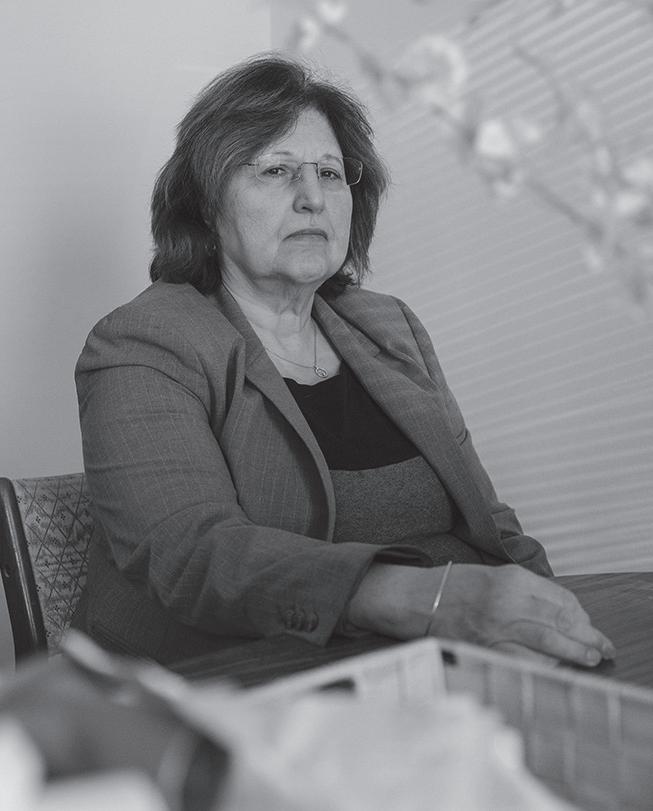
VALERIE PORTER PHOTOGRAPHER: LAUREL GOLIO/ BLOOMBERG
ing to clinical trials. In Eisai’s main approval trial, almost 33 percent of people with two copies of the gene who got the drug experienced brain swelling compared to just 5 percent of people with no copies. While most cases are asymptomatic, some can cause headaches, confusion and even seizures.
In a statement, Eisai acknowledged “rare post-marketing reports of fatal events and disability” among patients on Leqembi. But it noted that the federal database contains “incomplete, inaccurate, untimely and/or unverified information” that does not prove cause and effect. Outside of a clinical trial, “it is not possible to provide a precise number of safety reports,” it said. It also notes that brain hemorrhage deaths can happen in the general population.
So far, roughly 13,500 US patients have used Leqembi, which costs about $26,500 a year.
The FDA, in approving the drug, said brain swelling and bleeding “usually resolves over time” but “infrequently” can be life-threatening. It recommends that if a person has symptoms that indicate this side effect, “clinical evaluation should be performed, including MRI.”
The FDA said it’s monitoring the deaths of patients treated with the new Alzheimer’s drugs and that it included the “strongest warning possible” on the label to convey that certain patients have increased risk of brain bleeding and swelling. But the agency approved Leqembi broadly because it “recognizes the importance of allowing patients to make informed decisions in discus-
sion with their health care provider, evaluating both possible benefits and risks,” a spokesperson said. Realizing that community doctors needed more guidance about how to use the drug safely, a group of top academic doctors came out with their own, stricter rules in 2023, excluding patients with certain preexisting signs of brain bleeding and those on anticoagulants. Some Alzheimer’s patients who died had “clear warning signs” that weren’t heeded, said Stephen Salloway, a neurologist at Brown University who worked on the recommendations. “Not everyone is following the guidelines.”
The risk-benefit calculation ONE 69-year-old woman was told she was at risk of brain bleeding from Leqembi but that she was still a candidate for treatment, according to an adverse event report. Two days after her fourth infusion in July, she developed stroke-like symptoms. There was no stroke. It turned out to be “brain swelling due to the Leqembi,” according to the report. She died a week later.
Another 84-year-old became disoriented less than two weeks after a third dose in December 2023. An MRI found more than 10 brain bleeds and a 4-inch-wide area of brain swelling. The patient had a seizure “considered related to Leqembi” that led to “generalized brain dysfunction,” according to reports on the case. The patient was dead about two months later.
Eisai says it has developed a laylanguage brochure about brain swelling and bleeding for patients and maintains an educational website for doctors and health professionals. It says more restrictions on the drug are not necessary given the rarity of the severe side effects. The restrictions that do exist are significantly limiting the use of the drugs, as patients must undergo regular MRI monitoring, said Donna Wilcock, a neurology professor at Indiana University who is studying why the new Alzheimer’s drugs are causing the brain side effects. That makes the therapy less accessible to those outside major cities, she said.
“It’s holding us back in our ability to treat the most Alzheimer’s patients that we can.” With assistance from Aisha Ziaullah /Bloomberg















THESE days, most mobile phone users go for vertical videos than horizontal ones. Data shows that viewers spend more time with vertical video content on smartphones than traditional horizontal formats.
In recent months, vertical videos or verticals have taken on a new meaning. If you’re on TikTok, Instagram, or X, you’ve seen those ads for verticals from apps, like ReelShort, DramaBox, FlickReels, and ShortMax.
These are called micro drama apps and they churn out dramas with 60-90 seconds per episode. The themes range from steamy to cringy with titles that include Money, Guns, and a Merry Christmas, Falling for My Ex’s Mafia Dad, and If Loving You is a Sin, Then I’ll go to Hell.
Some of the stories are borderline inappropriate.
For example, the super popular How to Tame a Silver Fox is the love story of a girl and her dad’s best friend. Yes, they may be corny and cringey but let us not deny that we’re so entertained by this content that some of us pay for subscriptions to the app.
Not surprisingly, the top short drama apps— Dramabox, Goodshort, ReelShort and Shortmax— have seen significant growth in the Philippines, Indonesia, Brazil, and even the United States, according to an exclusive report by Deadline, citing a report by London-based research firm Omdia.
But it is in China where micro drama apps have seen huge growth with major streaming services (like IQIYI) starting to embrace them, said the Deadline
report. According to Omdia, three out of five internet users there watch micro-dramas.
According to Skye Yang, in an article for Mindshare, people in China aren’t just watching these micro dramas while on the trains or buses, “even people on bicycles [are] watching this kind of content with one hand on the handlebars and the other holding their phone.”
How these apps work is marketing genius at its peak. They place ads on social media platforms where people can watch it for you. Everything is clickbait. I remember that in one Chinese drama, the family owned a restaurant that specialized in oysters and the mom would go to the kitchen with male customers with the door locked. After that, she’d say, “I can’t do this. I am too tired,” but the dad would insist. It turns out that the family’s secret was not sexual at all but of course, viewers were hooked.
There’s another drama that I got to watch where the CEO (a very young one) was engaged to a girl and they told his mom over a video call with the mother wearing a face mask. So of course the girl did not get to see the mom’s face properly. A friend of the girl later told her that she saw the CEO with another woman (it was the mom) so they proceeded to beat up the poor mother despite her protests that she was a family member and not a mistress.
The micro dramas don’t feature big stars but, no, they don’t use mobile phones to film. They use actual film cameras and there are real sets. Money is being spent here. I read somewhere that the dramas are made on shoestring budgets. Maybe in relation to usual dramas, yes, but actual money is changing hands in the industry. Consider this: When you download the app, watching the first few episodes is free but to watch the next ones, you need to pay. The weekly VIP fee runs to about P580. Take note that the monthly subscription fee for Netflix is less than this. To “unlock all the series” for the a year, the membership fee is P11,000. If you ask whether people pay these fees, I can assure you that they do. I know people who have paid and continue to pay for their purchases. ■
Xbox mobile app now lets users to buy games, join GP and more SKIP THE SCAMS,
BY PATRICK VILLANUEVA
ANNOUNCED on the Xbox Wire in their April update, Senior Product Marketing Manager of Xbox Services Marketing Dean Shimabukuro, in a statement, said that one of the most requested features will be coming to the Xbox mobile app.
“Players will soon be able to buy games and add-on content, join Game Pass, and redeem Perks directly from the Xbox app on mobile,” the statement reads.
In the post, they explained that users will soon be able to pre-order games in their mobiles and set it to pre-install in their consoles. Ultimate Pass members, on the other hand, can redeem perks in the mobile app. Purchasing goods in the app will work similarly to how users usually buy products digitally.
“If players already have a saved form of payment, the Xbox app will display a Buy button on game detail pages, allowing them to purchase games and add-on content with just two clicks,” the post reads.
This feature will first roll out to beta users in iOS and Android and will be available for everyone to download soon, although not specified, in the Google Play Store and Apple store.
NEW TITLES COMING TO GAME PASS ON a different announcement, new games will be available for play to users who have the Xbox Game Pass. Megan Spurr, senior community lead, Xbox Game Pass, posted the following titles:
■ Neon White (Console): Now with Game Pass Standard, April 16
■ SpongeBob SquarePants: The Patrick Star Game (Cloud, Console, and PC): Game Pass Ultimate, PC Game Pass, Game Pass Standard, April 16
■ Crime Scene Cleaner (Cloud, PC, and Xbox Series X|S): Game Pass Ultimate, PC Game Pass, April
17
■ Tempopo (Cloud, Console, and PC): Game Pass Ultimate, PC Game Pass, April 17
■ Clair Obscur: Expedition 33 (Cloud, PC, and Xbox Series X|S): Game Pass Ultimate, PC Game Pass, April 24
■ Towerborne (Game Preview) (Cloud, PC, and Xbox Series X|S): Game Pass Ultimate, PC Game Pass, April 29
■ Far Cry 4 (Cloud, Console, and PC): Game Pass Ultimate, PC Game Pass, Game Pass Standard, April
30
■ Anno 1800 (Cloud, PC, and Xbox Series X|S): Game Pass Ultimate, PC Game Pass, Game Pass Standard, May 1
■ Call of Duty: Modern Warfare II (Cloud, Console, and PC): Game Pass Ultimate, PC Game Pass, May 1
■ Dredge (Cloud, PC, and Xbox Series X|S): Game Pass Ultimate, PC Game Pass, Game Pass Standard, May 6
The post also stated that more titles will also be added to the “Stream your own game” collection for Game Pass Ultimate members.
Ransomware remains a threat in PHL despite decline in 2024
BY RIZAL RAOUL REYES
ALTHOUGH there was a decrease in ransomware in the Philippines, it remains a major cyber threat because it has the potential to cause significant disruption and financial losses.
According to network-attached storage (NAS) and data management solutions provider Synology, the Department of Information and Communications Technology (DICT) has reported over 50,000 cybersecurity threats in recent years, which created a huge financial impact to affected organizations costing them at least millions of dollars.
The Taipei-Taiwan-based company added that ransomware threats in the Philippines in 2024 experienced a decrease in the number of ransomware
attacks compared to 2023. Nevertheless, it pointed out that it does not mean the threat has diminished, and several significant incidents occurred throughout the year highlighting the potential for severe impact.
It also warned that ransomware groups continue to refine their tactics, using sophisticated methods and exploiting known vulnerabilities to gain unauthorized access.
Synology warned that ransomware attacks in the Philippines can deliver severe financial losses for victim organizations, encompassing ransom payments (though strongly discouraged), recovery costs, lost revenue, and reputational damage. Some reports indicate typical Filipino firms face costs up to P1 million due to ransomware.
Moreover, it warned ransomware can also wreak
havoc on critical systems for extended periods, leading to delays and loss of customer trust. One model used by criminals is the Ransomware-as-aService (RaaS). The strategy enables ransomware attacks easier to execute, allowing individuals with malicious intent to carry out attacks.
Government, education, financial, and telecommunications sectors are the biggest targets of ransomware criminals in the Philippines.
“To further minimize the impact of ransomware attacks, businesses should consider a combination of on-site and off-site backups. These backups can be paired with immutable storage and WORM (Write Once, Read Many) technology, which ensures that data cannot be altered or deleted during the retention period. Additionally, off-site backups are encrypted
NOT THE SPARKS: RAKUTEN VIBER LAUNCHES VIBER DATING IN PHL
SURE, there are plenty of fish in the sea, but finding The One can be a long and winding journey. In today’s online dating world, it’s a minefield of scams and catfishing. What’s more, most dating apps keep you stuck in a loop of swipes that rarely go anywhere, because they make money as long as you
same app. With Viber Dating, users can finally feel confident when looking for connections online, as protecting their users’ privacy has always been an essential and paramount part of the platform’s mission from the start. This strict commitment is extended to Viber Dating by following stringent measures:
■ PROFILE VERIFICATION: Only verified Viber users can create profiles. Every Viber Dating user is real and registered with their mobile number.
■ HIDDEN PHONE NUMBERS: Your phone number remains completely hidden, ensuring that no personal contact information is ever shared during your dating experience unless you choose to share it.
■ MODERATION TECHNIQUES: These include machine and human moderators, for a positive experience for all.
■ SEPARATE CHATS: Your dating profile is separate from your main Viber account, keeping your dating activity private from your primary connections.
As a trusted name in communication for over a decade, Viber has been facilitating secure and safe communication for new couples for years, especially during the second stage of dating—after they’ve met and moved away from using dating apps.
Viber now fixes the first stage of dating, too: enabling people to find meaningful connections. Unlike other dating apps, when you meet someone special through Viber Dating, you can smoothly transition to Viber’s main app, where you can keep the conversation going and continue building your connection in a secure and private space. Here, all private 1:1 chats and calls as well as private group calls are end-to-end encrypted by default, and messages are never stored in Viber’s servers once delivered. The company also understands that you may want to keep your dating life private. That’s why your dating profile will be strictly separate from your primary Viber account, and will only be visible to other Viber Dating users. Your main Viber connections will never know or be notified when you are signing up to and using the dating feature nor see your dating-related conversations and activities. Viber Dating is accessible in a separate tab from your Chats.
David Tse, senior director at Rakuten Viber APAC, shares that Viber Dating was developed after a series of focus groups with Viber users revealed that people want genuine connections with real people and high-quality matches, but were very concerned about keeping their identities private and under their control until they feel comfortable enough to reveal it.
“Viber’s mission as a super app is to create safe and trusted connections, and this extends to the dating world, providing users with much-needed peace of mind,” says Tse. “Given these measures, we hope we can further protect our users from fake profiles and love scams.” Finding genuine connections online doesn’t have to be a tale of endless trial and error. Date with confidence and peace of mind.
before transmission to ensure secure data transfer to remote locations,” Synology said.
“In addition, they can verify system backups by automatically creating videos to confirm data recoverability in the event of an incident. Individual systems, files, or recovery from physical to virtual (P2V) or virtual to virtual (V2V) can be performed based on the Recovery Time Objective (RTO) when attacked by ransomware,” Synology added.
Synololgy said defending cybersecurity has never been about one single step, requiring instead a comprehensive data protection strategy. The company said its ActiveProtect offering can help organizations reduce manual workloads, standardize backup and recovery processes, save time, and ensure continuous operations.
WITH Cleveland Clinic’s report of around 300 million people globally having issues with color blindness in mind, Ubisoft, a French video game publisher, publicized a color simulation tool that more or less accurately replicates the experience of color blindness.
Announced in Ubisoft’s news website on April 15, the public can now download Chroma, a tool that simulates the experience of color blindness, to provide accessibility to more developers outside Ubisoft in helping create color blindfriendly programs.
The tool’s development started in 2021 with their quality control team based in India, allowing it for real-time feedback with developers controlling their games while also simulating color blindness.
Ubisoft worked with accessibility experts to ensure that the product will work as smoothly and accurately as it does now. “Chroma was created with a clear purpose—making color blindness accessibility a natural part of the creative and testing process,” iterated by Jawad Shakil, QC product manager.
He further stated, “Chroma is a testament to the team’s innovation and dedication; their work is already making a difference in how we design games with accessibility in mind. Open-sourcing Chroma is a proud step forward, allowing everyone to benefit from this innovation.”
Chroma works as a filter over a game screen, detecting color blindness-related issues. “It replicates Protanopia, Deuteranopia and Tritanopia filters over the game screen, helping users flag accessibility concerns in real-time,” based on the application’s description.
The tool also boasts an easy-to-use overlay and uses the Color Oracle algorithm, an algorithm based on “confusion lines” representing how colors are perceived by visually impaired individuals.
On their news website, Ubisoft director of accessibility David Tisserand stated, “Because we believe accessibility is a journey, not a race, we’re thrilled to share Chroma with the entire industry. We invite everyone to benefit from it, provide feedback, and contribute to its future development,” he added. The public seemed appreciative, as upon its release, several positive discussions on Reddit about the tool’s accessibility surfaced. One user said, “Love Ubisoft or not, this is appreciated as someone with deuteranopia. I’m seeing more and more games with color blindness accessibility options which is always welcome.
Another replied: “Fellow Deutan here. Good to have actual color swap options and not just some filter with an intensity slider which I find always doesn’t work lol.”
One user also mentioned how they love big companies making techs for the purpose of accessibility, “and I love that they’re finally openly releasing them for all devs to integrate and use.” A different user posted: “Great news. Games should be accessible to anyone.”
Developers and those interested can download Chroma at www.github.com/ubisoft/UbiChroma.
PATRICK VILLANUEVA
INSTAGRAM TRIES USING AI TO DETERMINE IF TEENS ARE PRETENDING TO BE ADULTS
INSTAGRAM is beginning to test the use of artificial intelligence to determine if kids are lying about their ages on the app, parent company Meta Platforms said on Monday. Meta has been using AI to determine people’s ages for some time, the company said, but the photo- and video-sharing app will now “proactively” look for teen accounts it suspects belong to teenagers even if they entered an inaccurate birthdate when they signed up. If it is determined that a user is misrepresenting their age, the account will automatically become a teen account, which has more restrictions than an adult account. Teen accounts are private by default. Private messages are restricted so teens can only receive them from people they follow or are already connected to.
“Sensitive content,” such as videos of people fighting or those promoting cosmetic procedures, will be limited, Meta said. Teens will also get notifications if they are on Instagram for more than 60 minutes and a “sleep mode” will be enabled that turns off notifications and sends auto-replies to direct messages from 10 pm until 7 am. Meta says it trains its AI to look for signals, such as the type of content the account interacts, profile information and when the account was created, to determine the owner’s age. The heightened measures arrive as social media companies face increased scrutiny over how their platform affects the mental health and well-being of younger users. A growing number of states are also trying to pass age-verification laws, although they have faced court challenges. Meta and other social media companies support putting the onus on app stores to verify ages amid criticism that they don’t do enough to make their products safe for children—or verify that no kids under 13 use them. AP















JUST as smartphones have grown in size and shape, becoming more powerful and sophisticated, so too have the names that define them.
What once began with simple “Plus” and “Pro” labels has evolved into “Pro Plus,” “Pro Max” and now “Ultra,” suffixes loaded with expectations. These names no longer just describe size or minor upgrades; they represent tiers of innovation, performance, and prestige—and ultimately price.
Poco has built its identity by delivering nononsense performance at unbeatable value. The F1 redefined the flagship killer category, and the F Series has since become synonymous with uncompromising performance at highly competitive prices. When Poco unveiled the Poco F7 Ultra at Marina Bay Sands in Singapore, the message was clear: this wasn’t just another spec-stacked release—it was a bold move into true flagship territory.
With the F7 Ultra, Poco has entered its “Ultra” era, not just challenging flagships but stepping into the true flagship arena.
I have been using the Poco F7 Ultra as my daily driver for the past month and while the spec sheet certainly checks all the boxes, the one question remains: Does it truly live up to the “Ultra” name?
ULTRA
“PERFORMANCE is our DNA...With F7 Ultra, we want to create an ultra-performance that shatters all segments,” said Angus Ng, head of product marketing at Poco Global. And if there’s one area where the Poco F7 Ultra earns its “Ultra” badge, it’s performance. The device lives up to the promise. At the heart of the phone is Qualcomm’s new Snapdragon 8 Elite chip, the most powerful ever used in a Poco device.
Built on a cutting-edge 3nm process, it brings a major leap in speed and efficiency. Compared to its predecessor, it offers up to 45 percent faster CPU performance and 44 percent better graphics, while using significantly less power. Paired with up to 16GB of RAM and 512GB of fast storage, the F7 Ultra has more than enough muscle for heavy multitasking, gaming, and content creation. In benchmark tests, it scored an impressive 2.84 million on AnTuTu—a record for Poco and a figure that reflects its real-world speed. Whether you’re launching apps, juggling tasks, or editing video clips, everything feels fast and effortless.
While Poco isn’t marketing the F7 Ultra as a
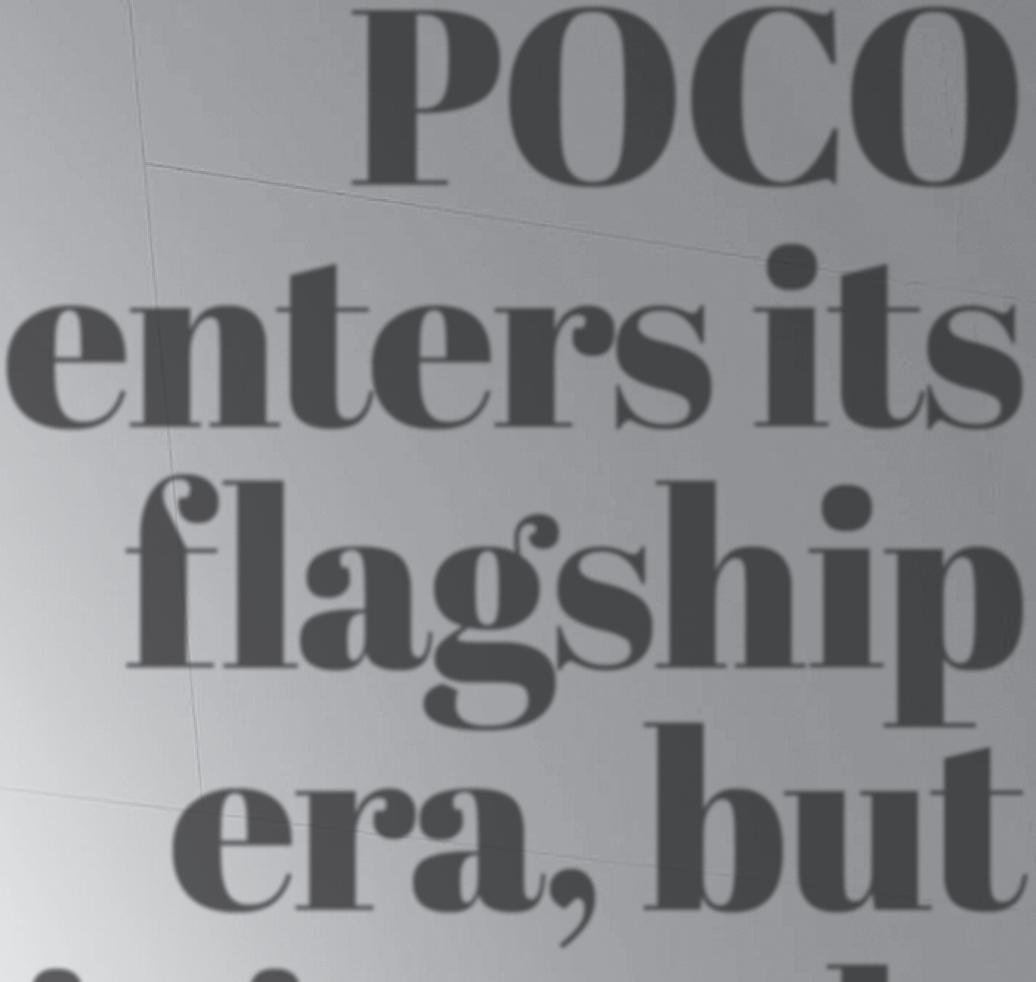

gaming phone, gaming is actually where the F7 Ultra really shows off. Thanks to Poco’s own VisionBoost D7 graphics chip, games like Genshin Impact run smoothly at 2K resolution with 120 frames per second. This chip enhances graphics, improves contrast, and sharpens in-game visuals, making even casual titles look stunning.
ULTRA-DURABLE DISPLAY
EQUALLY deserving of praise is the display. The Poco F7 Ultra sports a 6.67-inch 2K Flow AMOLED screen with a resolution of 3200 x 1440, a pixel density of 526 ppi, and a peak brightness of 3200 nits. Whether you’re outdoors or binge-watching HDR content, the display is clear, vibrant, and rich in detail. It supports Dolby Vision, HDR10+, and 12-bit color, producing over 68 billion colors. Color reproduction is accurate and punchy, blacks are deep, and the contrast is impressive. What impressed me even more is Poco’s focus on eye comfort. The display is certified by TÜV Rheinland for low blue light, flicker-free usage, and circadian friendliness.
It also supports 3840Hz PWM dimming and 16,000-level auto brightness, adapting smoothly to changing lighting environments.
Poco’s design approach is inspired by futuristic industrial design, with the F7 Ultra featuring a circular segmented camera module framed in aerospace-grade aluminum and a quad-curved glass back. The top edge is ultra-clean, with the mic and speaker grille cleverly hidden for a seamless look. The finish uses a two-tone gloss-matte effect, with the top portion gleaming and the bottom half muted. At first glance, it checks all the boxes of a flagship— glass, curves, polish.
It’s even IP68-rated and protected by the brand’s new Poco Shield Glass, which Poco claims is 20x tougher than previous materials. However, here’s my personal take: while it does look premium, it doesn’t feel ultra enough. The yellow variant, which should scream Poco, ends up looking oddly washed out. The glossy glass back seems to diffuse the vibrance of the color rather than intensify it. It would have looked much better if the sides were also yellow. As it stands, the yellow glass back feels somewhat disconnected, almost like it was just placed on top of a black frame, rather than being integrated into the design.
Build quality is otherwise impressive. The metal frame feels rigid, the screen sits flush, and the button placement is tactile and clicky. At 212g, it’s slightly heavy but not unwieldy. The device manages to balance durability and style without being overly flashy, but again I feel Poco played it just a bit too safe here.
CAMERAS: POCO’S LONG-AWAITED REDEMPTION ARC
FOR a brand that built its reputation on raw performance and aggressive pricing, imaging has always been Poco’s Achilles’ heel. Until now. With the F7 Ultra, Poco isn’t just catching up—it’s putting serious effort into crafting a camera system that can
stand on its own against established players in the flagship space.
The triple camera setup is headlined by a 50MP Light Fusion 800 main sensor, featuring a large 1/1.55” sensor size, f/1.6 aperture, OIS, and quad pixel-binning for 2.0μm super pixels. It’s a significant upgrade over anything seen in previous Poco devices, capturing more light, improving detail retention, and balancing exposure more intelligently.
This is supported by Poco’s first-ever floating telephoto lens—a highly versatile 50MP shooter that handles 2.5x optical zoom, in-sensor 5x zoom, and surprisingly effective 10cm macro photography. Where most phones delegate macro to a token low-res lens, the F7 Ultra delivers sharp, color-accurate closeups that feel genuinely usable.
But what truly elevates this system isn’t just hardware—it’s the software backbone behind it: Poco AISP, short for AI LM Computational Photography. With Poco AISP, the F7 Ultra delivers standout results in backlit scenarios, challenging lighting, and nighttime conditions.
Creativity also gets a boost from features like Dynamic Shots, which animate stills into short bursts—great for social media—and UltraSnap, which captures up to 150 photos in a rapid burst.
BATTERY AND SOFTWARE POWERING all this is a 5300mAh battery supported by 120W HyperCharge and 50W wireless HyperCharge. In real-world testing, it charges to full in around 34 minutes, and from 0 to 50 percent in just under 15 minutes.
The Poco Surge P3 and Surge G1 battery chips monitor charge cycles, temperature, and voltage in real-time, ensuring that the battery retains over 80 percent capacity after 1600 cycles—roughly 4 years of daily charging.
The phone runs on Xiaomi HyperOS 2, with HyperCore, HyperConnect, and HyperAI at the heart of its software engine. HyperCore boosts responsiveness, HyperConnect improves integration with other Xiaomi devices, and HyperAI offers smart contextual features and voice-powered automation. Integration with Google Gemini across Notes, Calendar, and system-wide search is another welcome touch.
FINAL WORD: “Everything you need, nothing you don’t” has been the brand’s mantra and the Poco F7 Ultra stays true to that. It doesn’t waste resources on niche features or luxury branding. Instead, it focuses on what matters: raw performance, a flagshiplevel display, and a long-overdue camera upgrade. For power users, gamers, and content consumers who want maximum value without compromise, the F7 Ultra delivers. It’s not a perfect ultra—the design could be more striking, and the camera, while vastly improved, still has room to grow. But it’s the best Poco has ever built. And
Editor: Mike Policarpio
By Josef T. Ramos
THE Department of Education (DepEd) and Special Olympics Pilipinas have strengthened their partnership to help the progress and inclusion in sports for students with intellectual disabilities.
Education Secretary Juan Edgardo “Sonny” Angara told reporters at the Philippine School for the Deaf (PSD) in Pasay City after the signing of memorandum of understanding (MOU) that he is extremely grateful to everyone involved in promoting the culture of inclusion.
“It is the first of its kind in Southeast Asia. DepEd is really going to introduce this new culture of unified sports and participation,” said Angara. “We do not discriminate… as everyone will be together [helping] learners with intellectual disabilities to learn.”
He added that the collaboration will reaffirm commitments that will include every Filipino child regardless of ability to learn, grow and thrive in a more equitable society.
According to him, the Philip -
MORE THAN 150 stu -
dents from 63 student organizations gathered for the pioneering “Globe Student Community Builder Pitch Day:” a platform that nurtured studentled initiatives through mentorship, collaboration and direct support from the telco firm.
Held recently at The Globe Tower in Bonifacio Global City, the event gathered student leaders from across Metro Manila, Bulacan and Cavite, which allowed them to explore Globe’s innovative workspaces, forge meaningful connections, and present their passion projects to the company’s teams.
According to a statement, the event affirmed Globe’s role as a genuine partner for the youth across different academic tracks—whether in Humanities and Social Sciences or HUMSS; Science, Technology, Engineering and Mathematics or STEM; or Accountancy, Business and Management or ABM.
Participants were guided by
THE “Filipino Chinese Baker’s Association Incorporated [FCBAI] Bakery Fair 2025” witnessed a display of innovation and expertise as URC Flour took centerstage and reinforced its position as one of the country’s leaders in the flour industry. With a focus on cutting-edge techniques and high-quality products, URC Flour’s participation underscored its pledge to empower bakers and drive the industry forward.
“Innovation is at the heart of everything we do,” stated URC Flour Division’s Sales, Marketing and Distribution manager Naida Ebora. “We continuously strive to develop products that meet the evolving needs of bakers—whether they are home enthusiasts or seasoned professionals. Our goal is to provide them with the tools and resources they need to create
pines is honored to be the first country in Asia Pacific to join the Special Olympics Global Coalition for Inclusion through a signed partnership witnessed also by Philippines Sports Commission chair Richard Bachmann.
Among those present at the signing ceremony at the PSD were Special Olympics Asia Pacific president and managing director Dipak Natali, along with Special Olympics Pilipinas chairperson and national president Akiko ThomsonGuevara.
The partnership between DepEd and Special Olympics Pilipinas will advance the inclusive educational landscape by engaging some 50,000 learners from all levels: pre-school, elementary, junior high school and senior high school through unified sports, where those with and with -
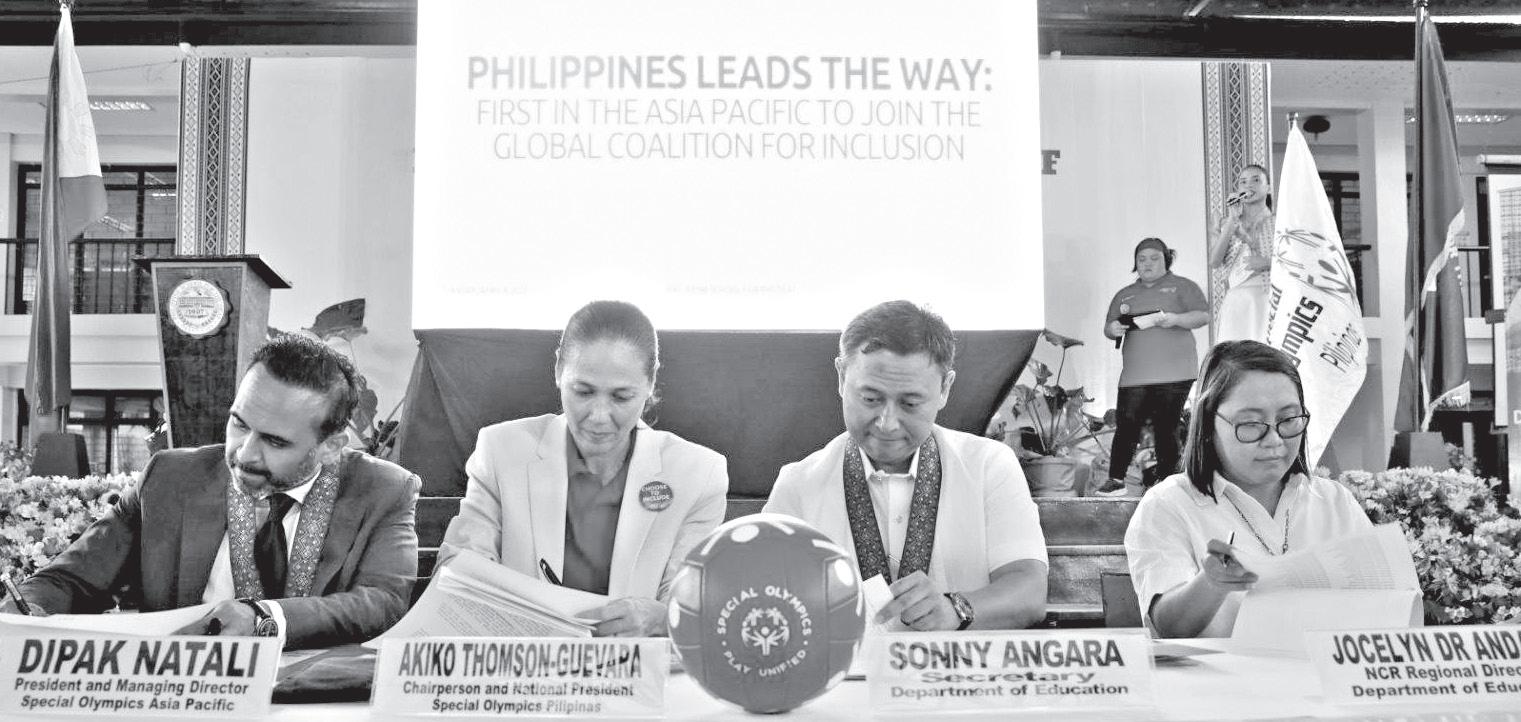
SPECIAL Olympics Asia Pacific president and managing director Dipak Natali (from left), Special Olympics Pilipinas
out intellectual disabilities play sports alongside each other across 500 schools.
In addition, at least 2,000 educators will receive specialized training to ensure inclusive practices are effectively implemented in schools.
The partnership is aligned and strengthens the Philippines government’s ongoing push to further inclusive education through various policies and initiatives, while addressing and preventing challenges like aggression, bullying and discrimination.
Thomson-Guevara lauded the DepEd’s move to prioritize the initiative benefiting those with intellectual disabilities: “It is our
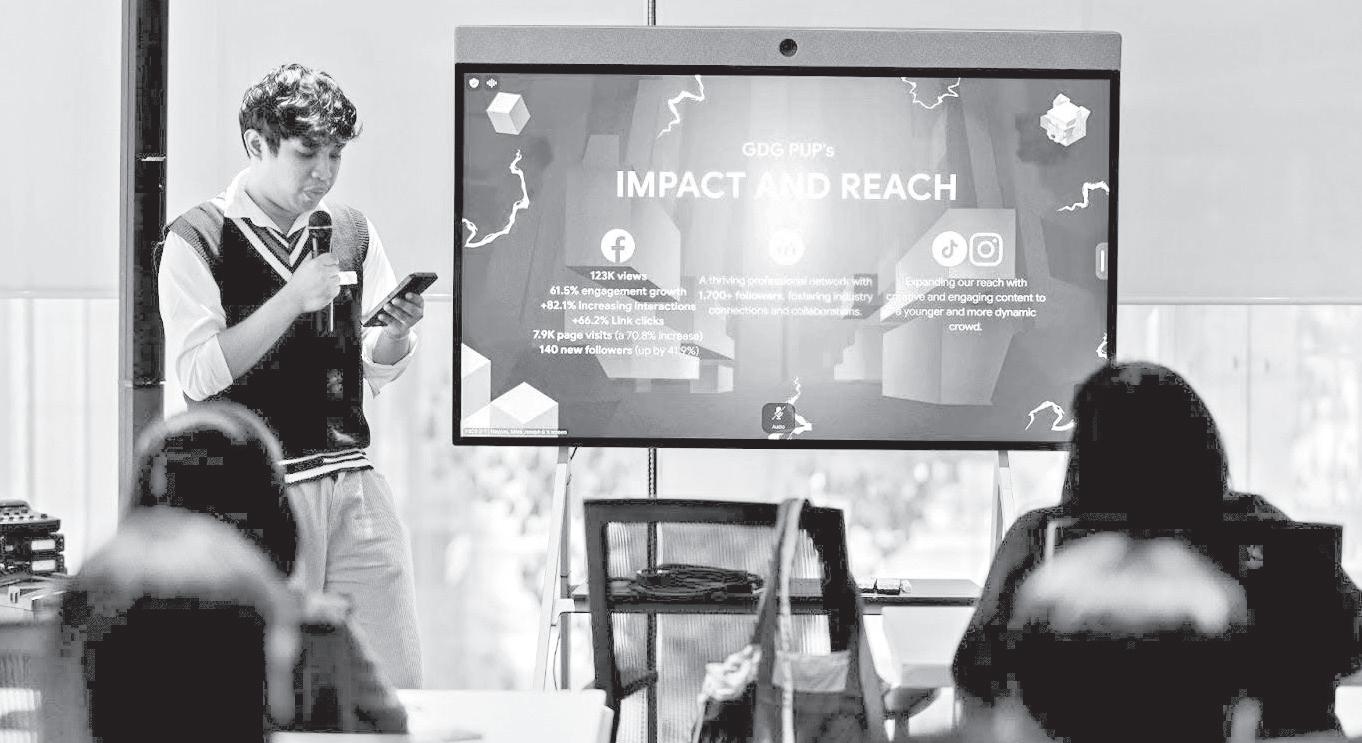
“Ka-Globe” talents from the Information Systems Development Program, Cybersecurity, Corporate Communications and Loyalty groups who shared insights on turning passions into purposedriven careers.
The day’s highlight was the pitch session, where student organization heads took centerstage and shared proposals including the Google Developers Group from chapter-schools: Amazon

exceptional baked goods.” This year’s theme of “Rise and Shine” paralleled URC Flour’s dedication of helping bakers achieve their full potential. Inside its vibrant booth, attendees were treated to a showcase of the company’s latest advancements in flour technology and baking solutions.
Sikat in Filipino means to shine, be radiant [and] be suc -
Web Services Cloud Clubs, De La Salle University-Dasmariñas, iAcademy Creative Orgs, Pamantasan ng Lungsod ng Maynila’s Technology Orgs, Ateneo Business and Leadership Orgs, University of the Philippines-Diliman Creative and Leadership organizations, and other groups from Greater Metro Manila.
Second-year student Martin Eusebio from the De La SalleCollege of Saint Benilde and a
cessful. It embodies the very essence of what we aim to achieve together. With URC Flour, we want to empower you to be sikat in your baking endeavors. We understand that every baker: from home enthusiasts to established professionals, dreams of creating baked goods that stand out, that are truly exceptional,” said Ebora. “That’s why we’ve dedicated ourselves to providing…the highest quality flour—the perfect foundation for…culinary masterpieces.”
One of the highlights of URC Flour’s exhibit was the live baking demonstrations led by renowned chef Ai Asilom which captivated audiences as she showcased the versatility and superior quality of URC Flour’s product range.
The baking sessions not only highlighted the adaptability of URC Flour’s products, but also provided valuable insights into
dream in Special Olympics Pilipinas to bring our programs nationwide. The task is both exciting and daunting. I am confident and hopeful that we will see the benefits in a very concrete way for all our youth... Studies have shown that benefits are both ways.”
The official earlier urged participating school division offices to share best practices applied in their earlier engagement in “unified sports” for its national implementation.
The MOU parallels the directives of Pres. Ferdinand R. Marcos Jr. to ensure quality and inclusive education among Filipinos. With a report from Stephanie Sevillano/PNA
By Rizal Raoul S. Reyes
LEARNING should never stop, even if one is outside the four walls of the classroom.
Usec. Jocelle Batapa-Sigue of the Department of Information and Communications Technology’s ICT Industry Development has emphasized that lifelong learning is extremely important in the digital age, as it ensures every Filipino will be productive and self-reliant to be a contributor to the country’s growth and development.
In her talk at the recently concluded “Building a Stronger Workforce through Structured Internship and Lifelong Learning Legislation” hosted by the Management Association of the Philippines, in cooperation with the Asia Pacific College, Batapa-Sigue explained that everyone has a right to continue lifelong learning.
employment in a dynamic environment.
Batapa-Sigue said lifelong learning also helps Filipinos increase their employability and productivity by continuous upskilling and reskilling. A committed workforce, according to her, signals a dynamic and adaptable economy, making the Philippines a more attractive destination for foreign investments.
With a labor complement equipped with a higher skill set acquired through lifelong learning, Filipinos can have better job opportunities and higher incomes, contributing to poverty alleviation, according to her.
For Batapa-Sigue, lifelong learning can also improve lives of the marginalized as they are provided the skills and chances to narrow or mitigate the poverty gap.
Globe Community Builder hosted the event and helped link student organizations with opportunities to bring their ideas to life through Globe’s support.
“The Student Community Builder Pitch Day is [Globe’s way of] reinforcing its role as an enabler of the youth. We believe in the potential of students not only as future professionals, but as [today’s] changemakers,” said Globe’s Marketing Youth Cultures head Anne Calma. “[As we have provided a space where they can be heard, guided and supported, we hope we have inspired] more young people to take bold steps in shaping their communities.”
For the telco firm, the Globe Student Community Builder Pitch Day underscored its goal of strengthening student engagement through purposedriven innovation and real-world collaboration. To learn more about Globe’s student programs and ways to join, visit https:// www.globe.com.ph/communitybuilder#gref.
the latest baking techniques.
URC Flour also featured interactive displays that highlighted the science behind baking, which provided attendees with a deeper understanding of the properties of various flours and their effect on the final product. Company representatives answered questions and provided expert advice as they demonstrated the commitment to education and knowledge sharing.
Its participation in the FCBAI Bakery Fair 2025 was a testament to URC Flour’s unwavering commitment to innovation and expertise. By showcasing its latest products and providing valuable educational resources, the company has solidified its position as a leader in the baking industry. The event also provided a platform for URC Flour to showcase its commitment to the baking community.
“[If I am a young student, I want to be in a school where all my classmates are of the same age, and still learn things that I need to…It’s also about senior citizens learning new skills to rejoin the workforce. You can be a senior or full-time housewife and mother working at home by doing jobs using the online platform,” the DICT official said. “Geography is not an obstacle, as [one can work] as a remote tech freelancer, or even a college dropout, as long as you have the skills and tools to meet demands of the job.” She furthered that lifelong learning can even enable students to undergo apprenticeship without going to college, because the courses offered in platforms such as Coursera are sufficient to provide the skills.
In a developing country like the Philippines, academics help Filipinos adapt to the evolving job market brought by technological advancements and globalization. It constantly reshapes industries and creates new job roles. Lifelong learning equips citizens with new skills and knowledge needed to remain competitive, then secure
Meanwhile, Dr. Ma. Cynthia Rose B. Bautista—current commissioner of the Commission on Higher Education or CHED—underscored the need for the country to legislate lifelong learning to make it part of the educational system.
According to Bautista, Singapore is the only country in Southeast Asia legislating lifelong learning through its “SkillsFuture-Singapore Act” which created the eponymous agency. Its functions and powers include overseeing and promoting lifelong learning and skills development for its citizens.
“Other Asean nations may have policies and frameworks supporting lifelong learning, but these are often integrated within broader educational strategies [sans dedicated legislative backing such as Malaysia and Indonesia, or derived from an existing law like Thailand and the Philippines],” the CHED commissioner shared. Bautista said the Philippines needs legislation to keep the lifelong program going: “The executive and bureaucracy lack authority, cohesion, or public trust to implement reforms without explicit legal mandates.”
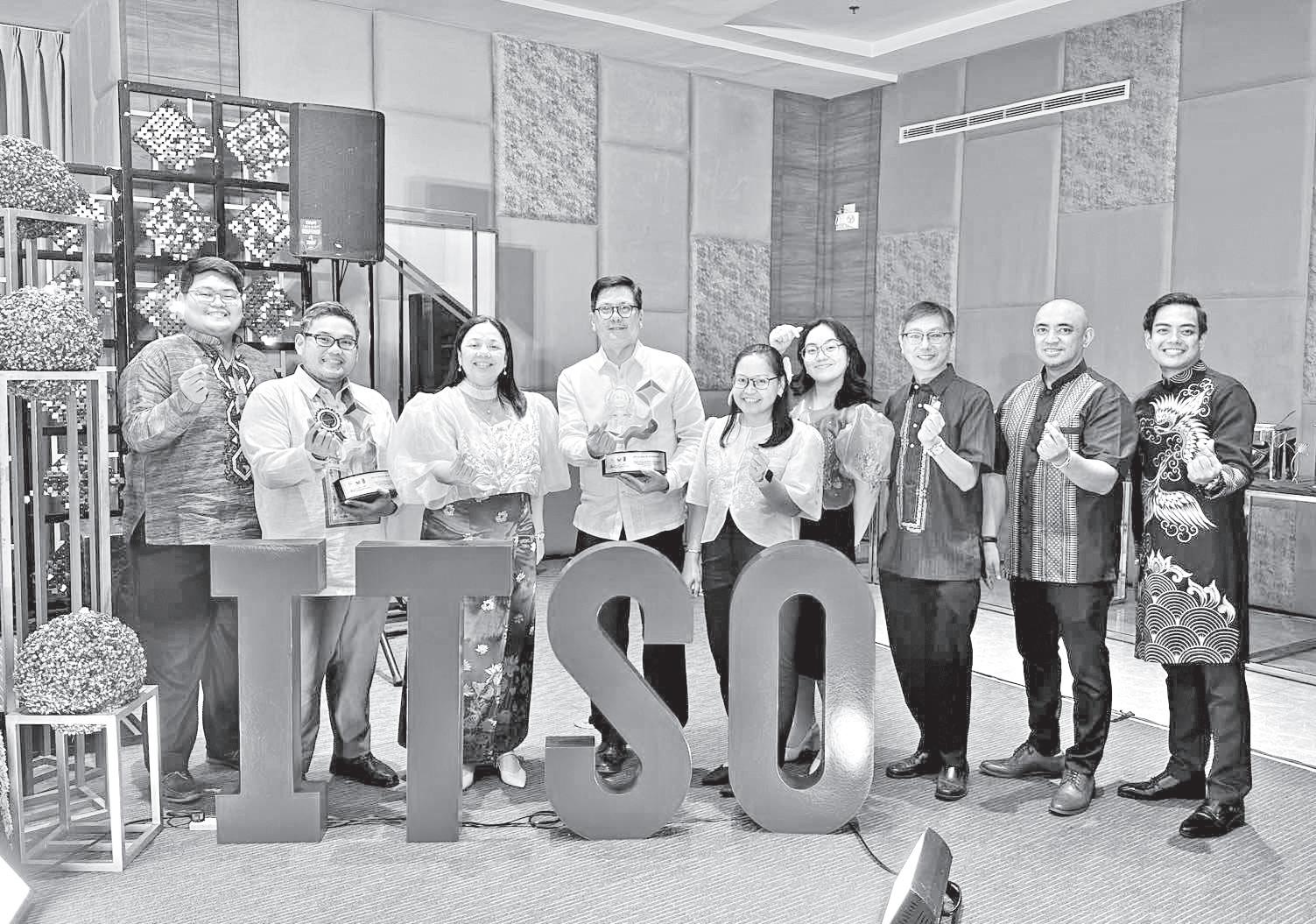
DE LA SALLE UNIVERSITY, through the DLSU Intellectual Property Office (DIPO) and the DLSU Innovation and Technology Office (DITO), received two major citations at the “2025 ITSO Presidents’ Summit” held recently.
The “Palladium Award” is the highest recognition accorded by the Intellectual Property Office of the Philippines (IPOPHL) to Innovation and Technology Support Offices under the ITSO 2.0 Clustering Program. It is awarded to select institutions that demonstrate outstanding performance in strategic key performance indicators: patent filings to commercialization, as well as training and awareness initiatives, while showing exceptional leadership and influence
in advancing IP in their clusters. Meanwhile, the “Platinum Award” is bestowed to top-performing ITSOs that meet IPOPHL’s key targets on patent services and research commercialization support services.
DIPO director-DITO manager Atty. Christopher Cruz and his team represented DLSU during the awarding ceremony. According to DLSU, the awards reaffirm its position as a national leader in IP protection, management and commercialization, consistently empowering innovators, researchers and creatives across disciplines.
The university continues to champion IP as a cornerstone of inclusive innovation, academic excellence and nation-building.
Tourism Editor: Edwin P. Sallan
Story & photos by Joseph Araneta Gamboa
KNOWN for its vibrant culture and cuisine, Thailand is among the top international destinations of Filipino travelers based on outbound data gathered by the Department of Tourism (DOT) from the Bureau of Immigration’s e-travel app for the first quarter of 2025. It is also on the bucket list of preferred places to visit for first-time Filipino tourists, aside from Hong Kong, Singapore, Taiwan, and Japan.
THAILAND is nicknamed the “Land of Smiles” due to the fact that smiling is deeply ingrained in Thai culture. While the moniker is often used as a marketing tool in tourism campaigns, the welcoming nature of the Thais is a genuine reflection of their enduring hospitality values. The importance of smiling has its roots in the nation’s Siamese era from the 13th century to 1949, when it was called the Kingdom of Siam.
Today, one of the four major regions is Central Thailand—the most dominant area of the country since it contains the capital city of Bangkok. Covering the central plain of the Chao Phraya River, it was the heartland of the Siamese kingdom and now consists of 21 provinces with a combined population of more than 20 million.
Bright Leaf
WINNERS of the 2024 Bright Leaf Agriculture Journalism Awards had a cultural and culinary tour of Central Thailand in February 2025 together with some executives of PMFTC Inc. and members of the board of judges. Arranged by Subic-based Bella Vita Trips, the awardees’ itinerary included Bangkok, Ayutthaya, Samut Songkhram, and Ratchaburi.
The Bright Leaf Awards was launched in
2007 by the Philippine subsidiary of Philip Morris International and has been continued by PMFTC since 2010. The awards are given annually to the most outstanding agricultural stories and photos published in print, broadcast, and online media. As part of their prizes, the awardees go on a familiarization trip to an Asian country with a strong agricultural sector.
Temple Run
BANGKOK is known in the Thai language as Krung Thep, which means “City of Angels.”
This is attributed to more than 400 wats or Buddhist temples within Bangkok’s metropolitan area. Recognized as one of the oldest and largest temple complexes is Wat Pho, which the Bright Leaf delegation visited soon after landing at the Suvarnabhumi International Airport. Located near the Grand Palace complex, Wat Pho is renowned for its massive Reclining Buddha statue that is covered in gold leaf and measures 46 meters in length. It also houses over a thousand Buddha images and is considered the birthplace of Thai massage, with an operational massage school on its premises. Other famous temples near Wat Pho are the Emerald Buddha Temple or Wat Phra Kaew, and the Temple of Dawn or Wat Arun.

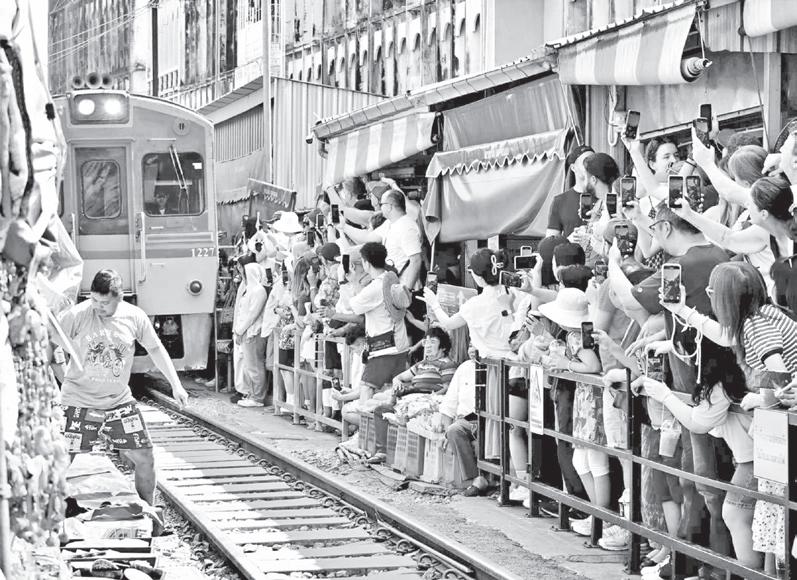
River Cruise NO visit to Bangkok would be complete without taking the evening cruise along the Chao Phraya, Thailand’s principal river that flows through Bangkok and exits into the Gulf of Thailand. Its low alluvial plain forms the center of the country, and the cruise covers the river’s 12-kilometer stretch that passes through Bangkok.
It was an enjoyable night on board the Unicorn cruise boat featuring an exquisite international buffet. The dinner cruise offered an opportunity to experience Bangkok’s iconic landmarks illuminated against the night sky while having a sumptuous meal along the Chao Phraya River. The stunning views were complemented by Thai cultural performances and a live band composed of Filipino musicians.
Ancient Capital
A WHOLE-DAY trip to Ayutthaya province is a welcome respite from Bangkok’s traffic congestion. It transports the visitors
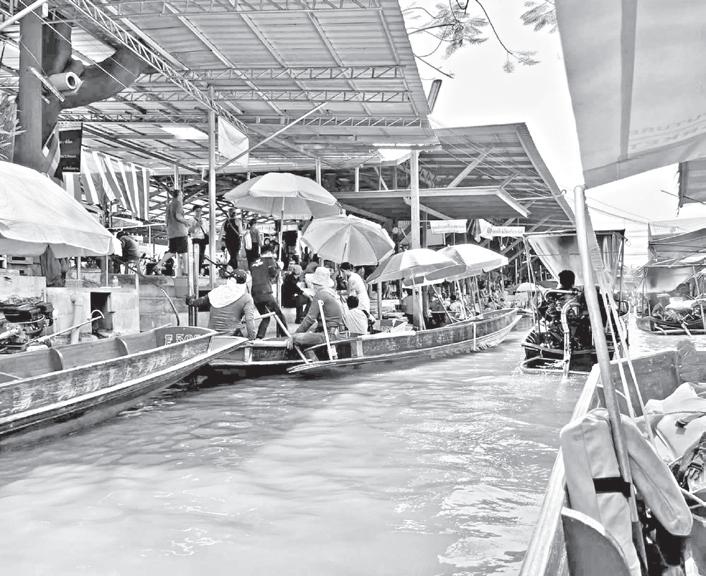

to the ancient Ayutthaya Kingdom and its once flourishing capital north of Bangkok. Established in 1350, the city of Ayutthaya was the Siamese kingdom’s religious and commercial center until its destruction by the Burmese army in 1767.
Siam’s rich architectural heritage is reflected in the majestic temple ruins which are remnants of its fabled grandeur. Its glorious past has been preserved within the Ayutthaya Historical Park, a UNESCO World Heritage Site. Contrast this with the Arts of the Kingdom Museum at nearby Ko Koet town showcasing traditional Thai craftsmanship in the modern era. This new museum’s collection of gold, silver, wood, and silk masterpieces highlights the skills and dedication of artisans from the Queen Sirikit Institute.
Unique Markets
EIGHTY kilometers southwest of Bangkok lies Samut Songkhram, the smallest among Thailand’s 76 provinces in terms of land area.
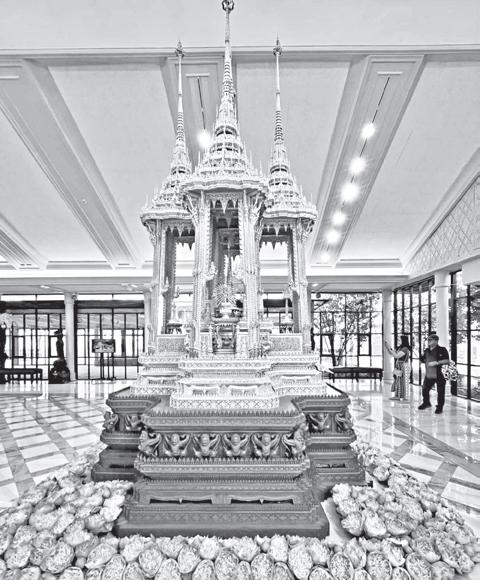

Songkhram’s main attraction is the Maeklong Railway Market—a unique marketplace set directly on active train tracks. Vendors display their goods along the rails, but when a train approaches, they quickly retract the awnings and move their products to allow the train to pass. Then they reassemble their shops until the next train comes along.
Further west is the province of Ratchaburi, whose western portion borders Myanmar. Ratchaburi is renowned for its floating markets, the most famous of which is Damnoen Saduak—established in 1868 following the construction of its eponymous canal. Sailing through this century-old tourist attaction can be full of fun via colorful rowboats that are navigated efficiently by their skippers.
Thai Agriculture
FORTY percent of Thailand’s 71.7 million people work in agriculture-related jobs. Around eight million of them are rice farm -

ers, who have catapulted their nation to become the second largest rice exporter in the world. To think it was at the University of the Philippines Los Baños (UPLB) in Laguna where droves of Thais studied agriculture from the 1960s to the 1980s. How ironic that they learned rice production technology from the International Rice Research Institute beside UPLB, while the Filipinos who trained them now suffer from high prices aside from being the world’s biggest rice importer. The US Department of Agriculture, through its Foreign Agricultural Service, has projected the Philippines’ rice importations to reach record highs in 2025. However, Thailand’s economy grew less than expected last year. Official data released by Thai Prime Minister Paetongtarn Shinawatra’s office showed that its gross domestic product (GDP) expanded by only 2.5 percent in 2024, compared with our 5.6 percent GDP growth that has made the Philippines one of the fastest growing economies in the Asia Pacific region.




RECENTLY Alex Eala’s story was highlighted as a great example of hard work and determination. As the first Filipina to reach the US Open Junior Girls’ singles final, she proved that talent can open many doors.
my global travels, I experienced firsthand the many hurdles that come with visa applications. That’s what inspired me to co-found FilipinoPassport.com—to guide fellow Filipinos navigate the often complicated and intimidating process of securing international visas. I’ve put together these 10 practical visa tips to help Filipino travelers build a strong travel record and improve their chances of getting visas approved.
but once you travel responsibly, you can later apply for a 6-month, 1-year, 2-year, or even a 5-year visa. The US B1/B2 visa can give you 6 months, 2 years, or even 10 years. The UK visa grants multiple-entry access from 6 months up to 10 years, while Australia offers 1-year, 3-year, and even 5-year multiple-entry visas. Multiple-entry visas require strong ties to the Philippines, solid finances, and consistent travel history.




2. Gradually Move to Visa-Required Countries ONCE you’ve explored Southeast Asia, start applying for visas to Visa-Required Countries like Japan and South Korea. These two are highly respected and are great stepping stones before applying for bigger visas like the US or Schengen. Once you get a Japanese visa, your chances improve when applying for other difficult visas since you’ve already proven yourself to a strict embassy. After Japan and Korea, aim for Australia, New Zealand, and the Gulf countries like UAE, Qatar, and Saudi Arabia. This helps build your travel credibility even further.
3. Aim for Multiple-Entry Visas Once You’ve Proven Travel Responsibility
AFTER getting your initial visas, work on qualifying for multiple-entry visas. For example, the Schengen visa might start you off with 15–30 days based on your itinerary,
1. Start by Building a Travel History in Visa-Free Asian Countries YOUR travel history plays a huge role in visa approvals. If you’re a first-time traveler, I always recommend starting with visa-free countries in Southeast Asia like Thailand, Vietnam, Indonesia, Cambodia, Singapore, and Malaysia. Visiting these nearby destinations will help you collect passport stamps and build a record showing that you’re a responsible traveler who always returns home. Aim to visit at least five to nine visa-free countries before applying for your first visa-required destination.
4. Take Advantage of Countries You Can Visit with Existing Visas IF you’re holding a Philippine passport and already have a valid US, UK, Canadian, or Schengen visa, you actually have access to a surprising number of other countries without needing to apply for a separate visa—especially for short stays. This is one of the smartest travel hacks for Filipinos looking to build their travel history and explore new destinations.
n With a Schengen visa, you can enter: Cyprus, Albania, Bosnia and Herzegovina, Kosovo, Montenegro, North Macedonia, Serbia, Mexico, Colombia, and Sao Tome and Principe.
n With a US visa, you can visit: Mexico, Honduras, El Salvador, Belize, Nicaragua, Panama, Türkiye (eVisa), Georgia, Qatar (ETA), and many Caribbean islands like Turks and Caicos, Dominican Republic, and Puerto Rico. Plus, US territories like Guam, Saipan, and American Samoa.
5. Understand That There’s No Such Thing as ‘Show Money’ MANY people still think that embassies look for “show money,” but what they actually need is proof of financial capability. This means bank statements showing steady, realistic income for up to the last 6 months—not one-time, large deposits. Make sure to submit a bank account statement that has a good amount of transactions that would show how much money goes in and out of your bank account.
Schengen countries, for example, require travelers to show at least €90 per day in your account. That’s around P5,400 daily. So for a 10-day trip, you should have a consistent balance of at least P54,000 or more in your bank account, maintained over several months.
6. Prepare a Realistic, Clear, and Organized Itinerary
VISA officers look for clear, honest itineraries that make sense based on your history and budget.
Don’t claim you’ll travel for a month in Europe on a P20,000 budget. Include hotel bookings, confirmed flight reservations, and a day-to-day itinerary that shows where you’ll be and what you’ll do. Keep it simple, organized, and realistic to avoid raising red flags.
7. Prove Strong Ties to the Philippines
ONE of the biggest reasons visas get denied is because applicants fail to show strong ties to the Philippines. Prove you have reasons to come back: a job, business, property, family, school, or other legal obligations.
Documents like employment certificates, business permits, property titles, or school enrolment certificates can make a big difference when applying.
8. Strategically Avoid Immigration Risks in High-OFW Countries Early On
IF you’re applying to visit countries like UAE, Saudi Arabia, or Hong Kong where there’s a large number of OFWs, immigration officials might question your intent - they might think you’re going there to find jobs.
I advise building your travel history in countries without a large Filipino diaspora, as this avoids potential doubts.
Once you’ve proven yourself as a tourist in multiple destinations, it becomes easier to apply for visas in these stricter countries.
9. Work Your Way Up to Schengen and US Visas ONCE you’ve built a solid travel history, you can apply for the Schengen visa and US B1/ B2 visa. These are two of the most powerful visas for Filipinos holding a Philippine passport.
The US visa alone grants you access to most of Central America and the Caribbean, while the Schengen visa allows travel to 27 European countries. These visas boost your future applications worldwide, opening doors to even more destinations.
10. Learn from Others and Get Help When Needed TRAVELING to 193 countries (and Antarctica) wasn’t easy—I made mistakes and learned
valuable lessons along the way. Recent developments also show how strong the demand for European visas is among Filipinos, especially for Italy. In light of the recent passing of Pope Francis, many Filipino Catholics expressed a desire to travel to Italy for religious reasons. While there isn’t a dedicated or “special lane” for these applications, the Italian embassy has reportedly eased some of its visa processing steps in response to the increase in requests. This highlights how important timing, purpose of travel, and even cultural ties can influence visa facilitation efforts.
If you’re planning to visit Italy—whether for tourism, pilgrimage, or family reasons— it’s always best to check updated embassy guidelines and prepare your documents well in advance.
That’s why launched FilipinoPassport. com to guide fellow Filipinos through the visa process. If you’re serious about traveling the world, building your travel history, and finally ticking those dream destinations off your bucket list—I’d love for you to be part of my travel community. Through TravelwithKach.com, I organize unique, immersive travel experiences where we explore beautiful destinations together while sharing tips, visa strategies, and unforgettable memories on the road.
By Colleen Barry The Associated Press
ROME—Pope Francis’ doctor has recounted the pontiff’s final moments in a pair of newspaper interviews published Thursday, saying the pope had his eyes open but was unresponsive after being stricken by illness early Monday morning. “He died without suffering, at home,’’ the doctor said.
Dr. Sergio Alfieri coordinated Francis’ five-week hospital treatment for double pneumonia and continued to oversee the pope’s treatment after the pontiff returned to the Vatican on March 23 for two months of rest to allow a full recovery.
Alfieri was alerted at 5:30 a.m. Monday by Francis’ health care assistant, Massimiliano Strappetti, that Francis had been stricken and needed to be taken to the hospital. The doctor told the Milan daily Corriere della Sera that he arrived 20 minutes later.
“I went into his room, and he had his eyes open. I noted that he did not have respiratory issues, so I tried to call him but he did not respond,’’ Alfieri was quoted by Corriere as saying, adding that his lungs were clear and he was receiving supplemental oxygen. “He also did not respond to stimuli, even painful ones. In that moment I understood there was nothing more to do. He was in a coma.’’
Alfieri said it was too risky moving Francis back to the Gemelli hospital, where he was treated for a complex respiratory infection that nearly killed him twice.
Two hours after falling ill, the pope died, having suffered a stroke.
“He died without suffering, at home,” Alfieri told the Rome daily La Repubblica.
Cardinal Pietro Parolin arrived and said the rosary over the body, accompanied by the papal household staff, Alfieri told Corriere. “I gave him a caress, as a farewell,’’ the doctor said.
Vatican News has reported that the pope managed a gesture of farewell to Strappetti after falling ill. Alfieri became the pope’s surgeon when he needed treatment for diverticulitis in 2021. Alfieri tried to get him on a diet after the surgery. “He had a big sweet-tooth, and sometimes would go to the kitchen at the Santa Marta hotel for a midnight snack. He put on a dozen kilograms (nearly 30 pounds) too many. At times I came off as too rigorous, because he told me, ‘Remember to live with irony.’ “
After the pope suffered several severe respiratory crises in the hospital that required decisive treatment, the surgeon said, “We knew he wouldn’t return to his former condition, and that the infection had left another scar on his lungs.’’ Still, “he improved with physical therapy. I saw him on Saturday, and I found him in good shape. I didn’t think it would be the last meeting,’’ Alfieri told la Repubblica.
Though Francis was ordered to rest and avoid crowds for two months to recover, Alfieri expressed understanding for the pope’s desire to return to work. “Going back to
work was part of his treatment, and he never exposed himself to dangers,” Alfieri told Corriere.
Francis couldn’t resist appearing in St. Peter’s Square on Sunday, which culminated with a long drive through the Easter crowd of 50,000 on the pope mobile, with several stops to bless children. He also insisted on inviting health care workers from the Gemelli hospital to the Vatican before Easter, even though the doctor suggested they wait until the end of the two-month convalescence in June.
“I have the clear sensation now that there were a series of things he felt he had to do before dying,” Alfieri told Corriere. “We knew he wanted to return home to be pope until the last instant, and he didn’t disappoint us.’’
Trump and Zelenskyy among dignitaries converging on Rome for funeral
HEADS of state and royalty will start converging on Rome on Friday for the funeral of Pope Francis in the Vatican’s St. Peter’s Square, but the group of poor people who will meet his casket in a small crosstown basilica are more in keeping with Francis’ humble persona and disdain for pomp.
US President Donald Trump and Argentine President Javier Milei are among the leaders arriving Friday, the last day Argentine pope will lie in state in St. Peter’s Basilica before his coffin is sealed in the evening in preparation for his funeral Saturday.
The Vatican said 130 delegations are confirmed, including 50 heads of state and 10 reigning sovereigns.
Paying respects
TENS of thousands of mourners have waited hours in line to bid farewell to Francis, who died Monday after suffering a stroke at the age of 88. A higher-than-expected turnout prompted the Vatican to extend the basilica’s opening hours overnight.
By Thursday evening, more than 90,000 mourners had filed past Francis’ open coffin placed in
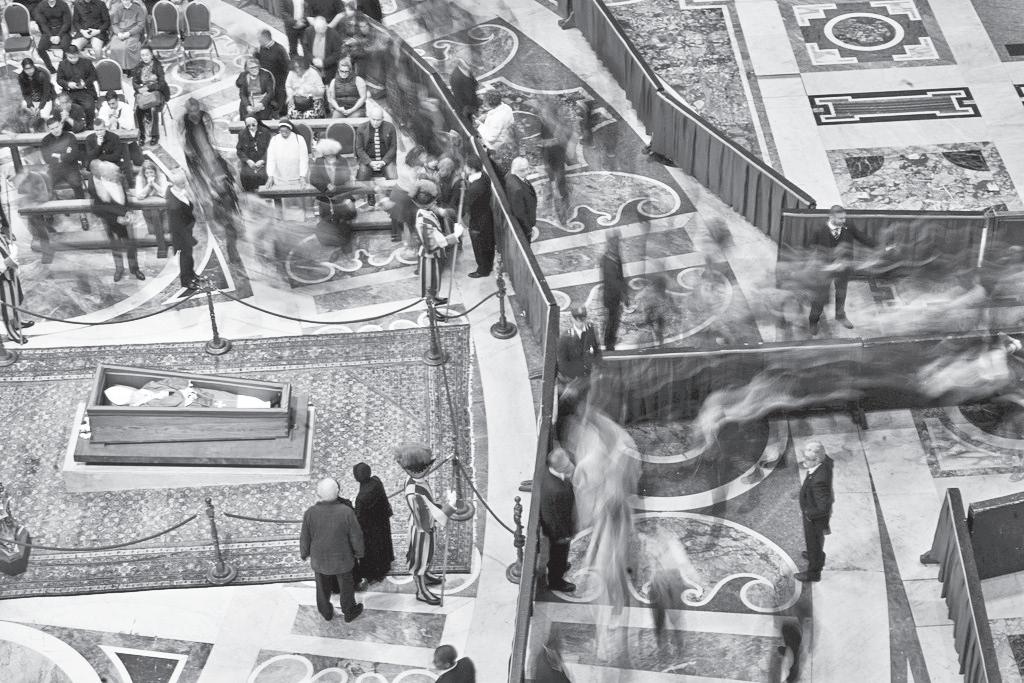
front of the basilica’s main altar— at times praying, at times holding smart phones aloft for a photo of the late pontiff laid out in red robes, a bishop’s pointed miter and a rosary entwined in his hands.
St. Peter’s Basilica remained open until around 3 a.m. Friday and closed for just a few hours before reopening for mourners who started arriving before dawn. The public viewing is scheduled to end at 7 p.m., after which Francis simple wooden coffin will be sealed.
Emanuela Bisco took the day off work to pay her last respects to Francis, as she had 20 years ago for St. John Paul II.
Francis “was the pope of the forgotten, who was close to the simplest people, the homeless who were not pushed away,’’ Bisco said. “I hope that the next pope will be at his level, and continue his struggles, his openness, everything that he did.”
Cardinals meet
The work of the conclave to choose a new pope won’t start
until at least May 5, after nine days of public mourning.
Cardinals have been also been arriving in Rome, with 113 meeting Thursday morning to discuss church business. They will meet again Friday before taking a break for the weekend.
“We are getting ready, but we still have not entered into the more intense phase. We are in the organizational phase,’’ Italian Cardinal Fernando Filoni said Thursday.
Papal burial
IN keeping with Francis’ embrace of the marginalized, the Vatican said a group of poor and needy people will meet the pope’s coffin to pay homage to him when it arrives at St. Mary Major basilica for burial on Saturday.
The tomb is being prepared behind a wooden barrier within the basilica that he chose to be near an icon of the Madonna that he revered and often prayed before.
Photos released by the Vatican on Friday show the marble tomb -
stone flat against the pavement, with the simple engraving in Latin that he requested in his last testament: “Franciscus” Delegations
Trump, who is traveling with first lady Melania Trump, is scheduled to arrive Friday, after Francis’ coffin has been sealed.
Among the other foreign dignitaries confirmed for the papal funeral are:
n Ukrainian President Volodymyr Zelenskyy and first lady Olena Zelenska.
n French President Emmanuel Macron.
n British Prime Minister Keir Starmer.
n Prince William.
n Spain’s King Felipe VI and Queen Letizia.
n Hungarian President Viktor Orbán.
n Brazilian President Luiz Inácio Lula da Silva.
Colleen Barry/Associated Press
Deleted condolence after death of Pope Francis revealed tension between Israel and the Vatican
By Melanie Lidman The Associated Press
J
ERUSALEM—Hours after Pope Francis’ death was announced, Israel’s Foreign Ministry posted a short message on X: “Rest in peace, Pope Francis. May his memory be a blessing.” Several hours later, it was deleted without explanation.
Coming at a time of effusive global mourning over Francis’ death, the decision to delete the post appeared to reflect the tensions that have emerged between Israel and the Vatican over Francis’ frequent criticism of Israel’s conduct during the war in Gaza. The Foreign Ministry declined to
comment on the deletion.
Prime Minister Benjamin Netanyahu is usually quick to issue statements on the passing of major international figures. But he has been silent on the pope’s death, as has Foreign Minister Gideon Saar. The only official condolences came from Israel’s president, Isaac Herzog, who holds a largely ceremonial role and who praised Francis for being “a man of deep faith and boundless compassion.”
For most of Francis’ papacy, ties between Israel and the Vatican steadily improved—highlighted by a visit to the Holy Land in 2014.
But everything changed after the war in Gaza erupted with Hamas’ deadly attack in southern

Israel on Oct 7, 2023.
While expressing sympathy for Israeli victims and hostages, Francis has suggested Israel’s subsequent attacks in Gaza and Lebanon were “immoral” and disproportionate. He also called for an investigation to determine if Israel’s attacks in Gaza constitute genocide, a charge Israel denies while investigations at the UN’s top courts proceed.
“Pope Francis condemned what happened on October 7, but he was clear also that what happened on October 7 does not justify what has been happening since October 7,” said Wadie Abunassar, who heads a group that represents Christians in Israel and the Palestinian territories.
Pope Francis was like a friend who tells the truth, even if that’s not exactly what you want to hear, Abunassar said.
Throughout the war, Francis walked a delicate balance between his close ties with Israel and condemning the devastating losses in Gaza, according to Amnon Ramon, an expert on Christianity in Israel and a senior researcher at the Jerusalem Institute for Policy Research. Francis was exceptionally close to Gaza’s local parish priest, who, like the former pontiff, is from Argentina.
A history of tension
Israel has historically had a fragile relationship with the Vatican. It stems from anger over the Vatican’s perceived lack of action

during World War II, when critics argue Pope Pius XII kept silent during the Holocaust despite possible knowledge of the Nazi plan to exterminate the Jews. Supporters insist he used quiet diplomacy to save Jewish lives.
In the 1960s, the Vatican underwent a series of dramatic transformations, including, among other things, changing the Church’s attitude towards Jews over what was long seen as their collective culpability for the crucifixion of Jesus, Ramon explained. The Holy See formally launched diplomatic relations with Israel in 1993.
Christians make up less than 2% of the Holy Land’s population. There are about 182,000 in Israel, 50,000 in the West Bank and 1,300 in Gaza, according to the US State Department.
At the start of Francis’ papacy, the relationship with Israel warmed significantly. Francis visited the Holy Land in 2014 as one of his first international trips, when he met with Netanyahu, who was prime minister at the time. Then-President Shimon Peres visited the Vatican multiple times, including with Palestinian Authority President Mahmoud Abbas to plant a peace tree in the Vatican Gardens.
But the Israeli government’s rightward shift, and the ongoing war with Gaza, strained the ties.
The pope voiced concern for hostages held in Gaza
“Pope Francis expressed himself for the first time on October 8, the day after the war began, and he followed the same line right through the end of his life:
war is defeat, there’s no victory for war,” said the Rev. David Neuhaus, a local priest who served as a spokesperson during the pope’s 2014 visit.
“He expressed great concern for hostages, but said violence should stop and Israel is using force to something that cannot be achieved by force,” Neuhaus said. Francis also met the families of hostages held in Gaza and Palestinians affected by the war.
In an interview with The Associated Press in April 2023, the leader of Catholics in the Holy Land, Cardinal Pierbattista Pizzaballa said that Netanyahu’s far-right government has made life worse for Christians in the birthplace of Christianity. He noted an increase in attacks against Christian sites, pilgrims, and religious leaders.
Although world leaders, including US President Donald Trump and French President Emmanuel Macron, will attend Francis’ funeral, Israel will only send its Vatican ambassador, a lower-level diplomat.
Foreign Ministry spokesperson Oren Marmorstein said this was due partially to scheduling conflicts and the funeral taking place on Saturday, the Jewish Sabbath, which requires Israeli politicians to stay within walking distance of the funeral. The decision was not indicative of any tension with the
www.businessmirror.com.ph
By Huizhong Wu The Associated Press
BANGKOK—China on Thursday denied any suggestion that it was in active negotiations with the administration of US President Donald Trump over tariffs, saying that any notion of progress in the matter was as groundless as “trying to catch the wind.”
China’s comments come after Trump said Tuesday that things were going “fine with China” and that the final tariff rate on Chinese exports would come down “substantially” from the current 145%.
groundless as trying to catch the wind and have no factual basis,” the spokesman said.
Trump had told reporters earlier in the week that “everything’s active” when asked if he was engaging with China, although his treasury secretary had said there were no formal negotiations.
Asked Thursday about China denying there were any conversations ongoing with the United States, Trump said, “They had a meeting this morning,” before adding, “it doesn’t matter who they is.”
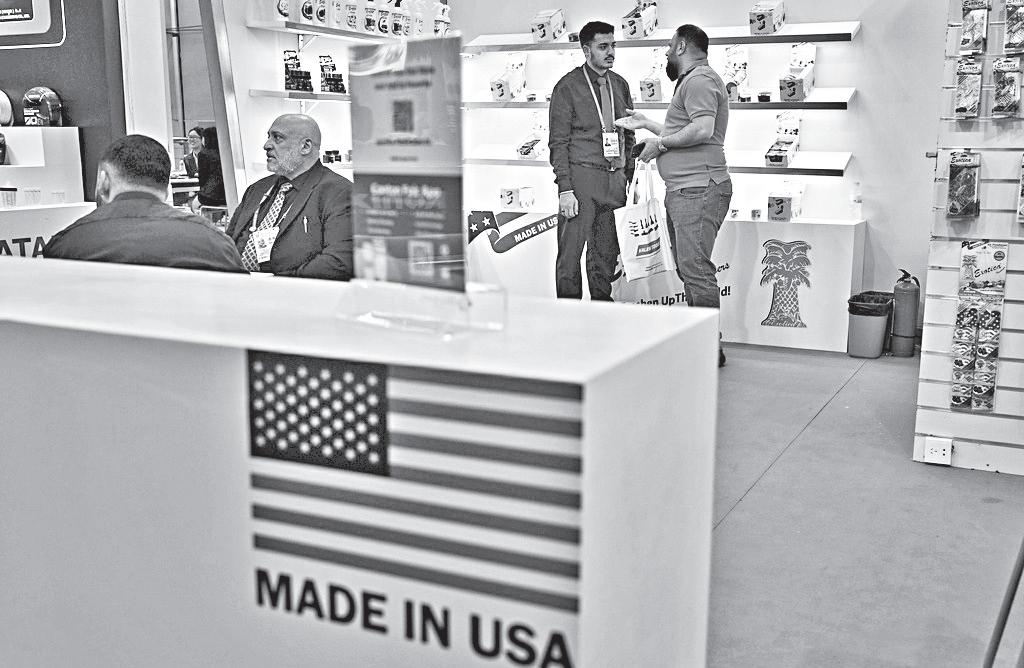
deployed other economic measures in response while vowing to “fight to the end.” For example, China restricted exports of rare earth minerals and raised multiple cases against the US at the World Trade Organization.
China also made it clear that talks should involve the cancellation of all tariffs it currently faces.
“China’s position is consistent, and we are open to consultations and dialogues, but any form of consultations and negotiations must be conducted on the basis of mutual respect and in an equal manner,” Commerce Ministry spokesman He Yadong said.
“Any claims about the progress of China-US trade negotiations are
Guo Jiakun, a spokesman for China’s Foreign Ministry, said during a daily briefing on Thursday that, “For all I know, China and the US are not having any consultation or negotiation on tariffs, still less reaching a deal.”
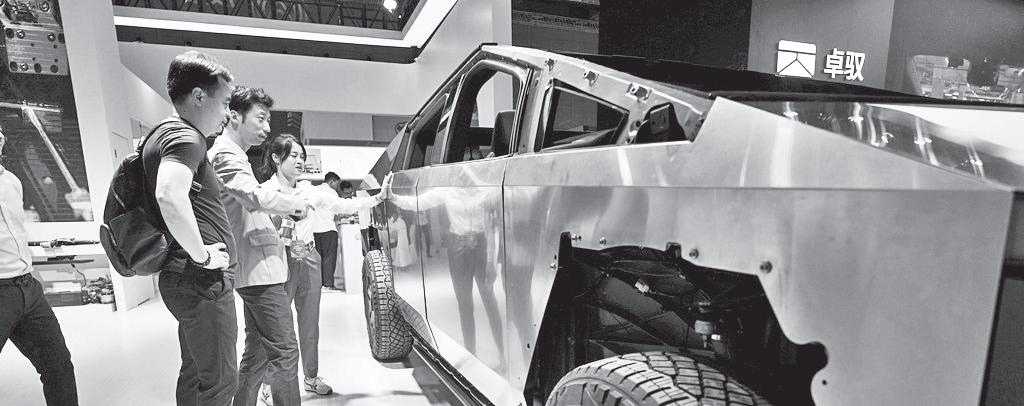
Automakers
By Elaine Kurtenbach Ap Business Writer
SHANGHAI—Booths of big Chinese, German and Japanese automakers were bustling at Shanghai’s auto show this week as the industry kept its focus on a wider global market not subject to steep US tariffs on imports of cars and auto parts. Signs are that US President Donald Trump’s 25% tariffs on auto imports is causing companies to recalibrate their strategies, and in some cases find new opportunities.
“When governments up above are at odds, it’s going to impact the businesses down below,” Ma Lihua, general manager at Soling, a Chinese maker of domain control units and other electronics used in such things as rearview camera displays. Soling, headquartered in Shanghai, counts Ford Motor Co., Toyota Motor Corp. and many other top tier global and Chinese automakers among its customers.
It’s also setting up a manufacturing base in Vietnam, whose local EV maker VinFast has ambitions to become Southeast Asia’s leading automaker.
Many of the dozens of auto parts and components companies exhibiting at the Shanghai auto show have operations span -
Vatican, he said.
“Israel will be represented in the most official way in the funeral through our ambassador there,” said Marmorstein. “There were things we didn’t agree with, but we are taking part in the funeral.”
Francis emphasized mercy in a polarized world
“POPE Francis was one of the best friends of Israel, but Israeli leadership didn’t understand him properly,” said Abunassar, the coordinator of the Holy Land Christian forum. Abunassar, a Catholic from the northern Israeli city
ning both the Chinese and world markets. Metal components maker Gestamp, a supplier of chassis, battery boxes and other key auto parts, has suffered from a slowdown in the US and western European markets but is expanding in Asia, Latin America and Eastern Europe.
The tariffs are now an added complication, as automakers watch to see what comes.
“In the past, supply chains usually would run like Swiss clockwork, but now it’s the opposite,” said Ernesto Barcelo, chief ESG officer for metal components maker Gestamp, said of the uncertainty now dominating the market.
“The lack of stability now, it’s something very...fluffy,” Barcelo said. A fundamental criteria for investing in any market is political stability, Wei Jianjun, chairman of Great Wall Motor Co., told reporters when asked about his company’s plans to expand manufacturing overseas. That applies to countries like Hungary, where the company has not yet decided on whether to build a factory, he said, but also to the United States under Trump.
“If a country is not politically stable, it’s very risky,” said Wei, who also goes by the
See “Automakers,” A12
of Haifa, said he was angry that the Israeli government hadn’t sent official condolences except through the president.
“The man was the leader of the most important church in the world. The man was the head of state. The man has followers among people who are Israeli taxpayers. The man deserves some respect.”
Netanyahu has publicly expressed condolences for the passing of other world leaders, including Queen Elizabeth II and former president Jimmy Carter, who was critical of Israel.
On Wednesday, hundreds of people streamed into the Church of the Holy Sepulcher, built on top of the site where tradition holds
The US president, a Republican, has expressed interest in a way to climb down from his massive retaliatory tariffs on Chinese imports to the US. There are mounting business and consumer concerns that the taxes will drive up inflation and potentially send the economy into a recession.
The Trump administration throughout Thursday continued to send mixed signals.
Treasury Secretary Scott Bessent said he had a “very successful bilateral meeting” on Thursday with South Korea, indicating that
the two countries could settle on the “technical terms” for an agreement as early as next week.
Yet within minutes of Bessent saying that, Trump fell back on his argument from Wednesday and said it would be “physically impossible” to go through negotiations with dozens of countries and “we are going to, at some point, just set prices for deals.”
“Some will be tariffed,” Trump
said. “Some treated us very unfairly. They’ll be tariffed higher than others.”
Trump had put 145% tariffs on imports from China, while China hit back with 125% tariffs on US products. While Trump has given other countries a 90-day pause on the tariffs, as their leaders pledged to negotiate with the US, China remained the exception. Instead, Beijing raised its own tariffs and
“The unilateral tariff increase measures were initiated by the United States. If the United States really wants to solve the problem, it should face up to the rational voices of the international community and all parties at home, completely cancel all unilateral tariff measures against China, and find ways to resolve differences through equal dialogue,” said He, the Commerce Ministry spokesman.
Despite the economic measures leveled against China, Trump said Tuesday that he would be “very nice” and not play hardball with Chinese President Xi Jinping.
“We’re going to live together very happily and ideally work together,” Trump said.
In China’s backyard, steel buyer Vietnam is trying to stem a tide of cheap metal
By Katharine Gemmell
IT’S 8 a.m. and already sweltering at the Pomina Flat Steel JSC plant outside Ho Chi Minh City, as the night shift’s last pour of molten metal is shaped, cooled and cut into rods. Down the road, at a Vietnam Steel Corp facility, a long strip is uncoiled into an acid bath and fed through a powerful press, making it thinner but tougher.
Once finished, these batches of metal will be sold into one of the fastest-growing steel markets in the world. Output could grow as much as 10% this year, according to the Vietnam Steel Association. Demand could reach as much as 25 million tons, up around 5% on last year—even as, to the north, China’s far larger steel industry struggles with oversupply and the impact of a protracted property crisis.
The Southeast Asian nation’s economic awakening and fast expansion has been a boon for the likes of Pomina and statecontrolled heavyweight VNSteel, which run these two factories. But like steelmakers worldwide, they are now feeling the impact of seismic changes in global trade—and find themselves sitting on an uncomfortable fault line, caught between a global pushback against cheap steel and other exports, and punitive US tariffs that target manufacturing economies like Vietnam’s.
“We now have to factor in new forces, geopolitical risks that are reshaping global steel chains,” Jiang Li, a veteran analyst at Baoshan Iron & Steel Co., the listed
Jesus was crucified, buried and resurrected, for a special requiem mass in honor of Pope Francis.
Also in attendance were many representatives from Orthodox Christianity, a nod to Francis’ strong support for interfaith ties and his groundbreaking meeting with Ecumenical Patriarch of Constantinople Bartholomew I in Jerusalem in 2014, after centuries of strained relationships between the two churches.
Neuhaus said he hopes the next pope will follow the same message as Francis.
“I hope it will be someone who will put emphasis on mercy, someone who could bring us all together,” he said. “We live in such a divided, polarized world.”

unit of giant China Baowu Steel Group, said at the Kallanish Asia Steel Markets Conference earlier this month. “The world is shifting from decades of globalization to a more fragmented deglobalized environment,” Jiang told the gathering in Ho Chi Minh City, where uncertainty dominated nearly every conversation.
Vietnam’s metal industry has grown to meet the needs of a country that is rapidly building out manufacturing capacity, metro networks, highways and new airports, along with most of Southeast Asia.
But it stands out from its neighbors as the single largest importer of Chinese steel—an easy, costsensitive destination for producers from just over the border, as they struggle with slow growth


at home and a dwindling number of available overseas markets. The imports into Vietnam hit a record last year, thanks to a particularly strong first half and Chinese supplies have risen by nearly 500% since 2020.
In February, under pressure from local producers, Vietnam finally took action. It imposed tariffs of up to around 28% on hotrolled coils, used in everything from infrastructure and consumer goods. It has since added another levy, of more than 37%, on galvanized steel imports from China.
These are formally temporary— but could become permanent.
As more countries introduce or plan tariffs, Bloomberg Intelligence estimated earlier this month that about 50% of China’s steel exports are now exposed—a hit




that could drag Chinese exports down by as much as 14% this year. For Vietnamese producers, the anti-dumping measures against China have levelled the playing field, according to Vu Tran, a former regional head of steel trading at global commodities giant Cargill Inc. “With Chinese producers no longer able to undercut on price, Vietnamese mills now compete well on cost,” he said. In much of the region, this fight is something of a novelty. During an earlier surge of Chinese steel exports in 2015-2016, a lot of China’s supplies also ended up here. But now countries from Vietnam to Indonesia and Malaysia have large, developed domestic steel industries—and domestic markets to defend.
Conditions overseas are also far more brutal. That includes the impact of a cascade of punitive tariffs unleashed by Washington over recent weeks, including steel-specific tariffs imposed in March, but also barriers erected by other nations, seeking to stop flows from inexpensive exporters like those in Southeast Asia. When India laid out the case for safeguard measures on steel imports, it mentioned the threat posed by rising volumes from Vietnam, which is now a net exporter to the country, as well as growing capacity in the vicinity. At home, there is “intense” competition when it comes to price and




By Josh Boak & Amelia Thomson-Deveaux The Associated Press
WASHINGTON—Americans’ trust in President Donald Trump to bolster the US economy appears to be faltering, with a new poll showing that many people fear the country is being steered into a recession and that the president’s broad and haphazardly enforced tariffs will cause prices to rise.
Roughly half of US adults say that Trump’s trade policies will increase prices “a lot” and another 3 in 10 think prices could go up “somewhat,” according to the poll by The Associated Press-NORC Center for Public Affairs Research.
About half of Americans are “extremely” or “very” concerned about the possibility of the US economy going into a recession in the next few months.
While skepticism about tariffs is increasing modestly, that doesn’t mean the public is automatically rejecting Trump or his approach to trade. However, the wariness could cause problems for a president who promised voters he could quickly fix inflation.
Trump shows vulnerability on the economy THREE months into his second term, Trump’s handling of the
market share, said Le Minh Tu, a director at the marketing and planning department of VNSteel. All the while, “unpredictable tariff policies from the US government, along with a global wave of trade protectionism, are having a substantial impact on export activities.”
Hanoi is now in a diplomatic whirlwind. When US President Donald Trump imposed “reciprocal” tariffs on scores of countries—before a later, temporary, climbdown to 10%—Vietnam was among the worst hit, with a 46% levy. It was also among the first
name Jack Wey.
With US tariffs so high, Great Wall can focus elsewhere, such as on trade between China and Europe, which is bound to grow, he said. He didn’t address the issue of the tariffs of up 45.3% that the EU has imposed on electric vehicles made in China. Tianshu Xin, CEO of Leapmotor International, a joint venture of Stellantis and China’s Leapmotor, said the US market

economy and tariffs is showing up as a potential weakness. About 4 in 10 Americans approve of the way the Republican president is handling the economy and trade negotiations. That’s roughly in line with an AP-NORC poll conducted in March.
Matthew Wood, 41, said he’s waiting to see how the tariffs play out, but he’s feeling anxious.
“I’m not a huge fan of it, especially considering China and going back and forth with adjustments on both ends,” said Wood, who lives in West Liberty, Kentucky, and is unemployed.
“Personally, it hasn’t affected me as of yet. But, generally, I don’t know how this is going to come to an end, especially with the big countries involved.”
Still, Wood said he changed his registration from Republican to independent, having been turned off by Trump’s attitude and def -
governments to dispatch a team to Washington for negotiations.
Immediately, Chinese leader Xi Jinping visited Vietnam, as part of a regional tour to shore up diplomatic ties in the region. Days later, Vietnam’s Prime Minister Pham Minh Chinh said his nation had a “unique bond” with the US.
“Vietnam is the classic example of being torn between two lovers,” said Hoang Thi Ha, a senior fellow at ISEAS - Yusof Ishak Institute in Singapore, pointing out the US is a key export market for the country, but China is vital for imports.
“It’s something not only Vietnam, but also many other South -
wasn’t its first focus. Now, “we want to monitor the regulatory environment, and also customer preferences are slightly different compared with other markets,” Xin said.
Japan’s Nissan plans to launch 10 new EVs in China by 2027, nine of them its own brand, and to spend an extra $1.4 billion by the end of 2026 on its expansion there. In the US it has the option to ramp up its spare capacity to make up for reduced imports due to the tariffs. “Some doors have been shut, but others have been opened,” Ma said. “But any plan you make you will change it very quickly.


erence to billionaire adviser Elon Musk. Wood voted for Trump last year and said he’s willing to give the president until the end of the year to deliver positive results on tariffs.
About half of US adults, 52%, are against imposing tariffs on all goods brought into the US from other countries. That’s up slightly from January, when a poll found that 46% were against tariffs. Driving that small shift largely appears to be adults under age 30 who didn’t previously have an opinion on tariffs.
Trump supporter Janice Manis, 63, said her only criticism of Trump on tariffs is that he put in a partial 90-day pause for trade negotiations with other countries.
“Actually, I think he shouldn’t have suspended it,” said Manis, a retired sheriff’s deputy from Del Rio, Texas. “Because now China is trying to manipulate all of these other countries to go against us, whereas if he would have left all the tariffs in play then these countries would be hit hard. But, oh, well, things happen.”
Skepticism remains about Trump’s tariff approach
Not quite 100 days into Trump’s second term in the White House, people around the country are bracing for possible disruptions in how they spend, work and live. The US economy remains solid for the moment with moderating inflation and a healthy 4.2% unemployment rate, yet measures such as consumer confidence have dropped sharply.
Trump has used executive actions to remold the global economy. He’s imposed hundreds of
east Asian economies are facing now. The US not only wants to decouple itself from China but it wants the rest of the world to do so too.”
But even as global scrutiny intensifies around steel—a metal seen as the backbone for industrial development and national ambition—Vietnam’s industry is adapting.
“They have to deal with Trump tariffs, they have to deal with competition with Chinese steel in global markets,” said Vy Nguyen, an analyst at Vietcap Securities JSC. “There are a lot of difficulties.”
That can mean more than gloom, even in the face of overcapacity.
The market changes very quickly.”
Apart from higher tariffs, automakers and suppliers also must contend with national security restrictions that are an increasingly important factor in auto electronics.
Wuhan Kotei Informatics, which provides software for autonomous driving, adapted its business model to cope with sanctions. Now the company based in central China’s Wuhan acts as a consultant and allows foreign customers to adapt software to local requirements, said Ye Xiongfei, general manager for the company’s autonomous driving division.

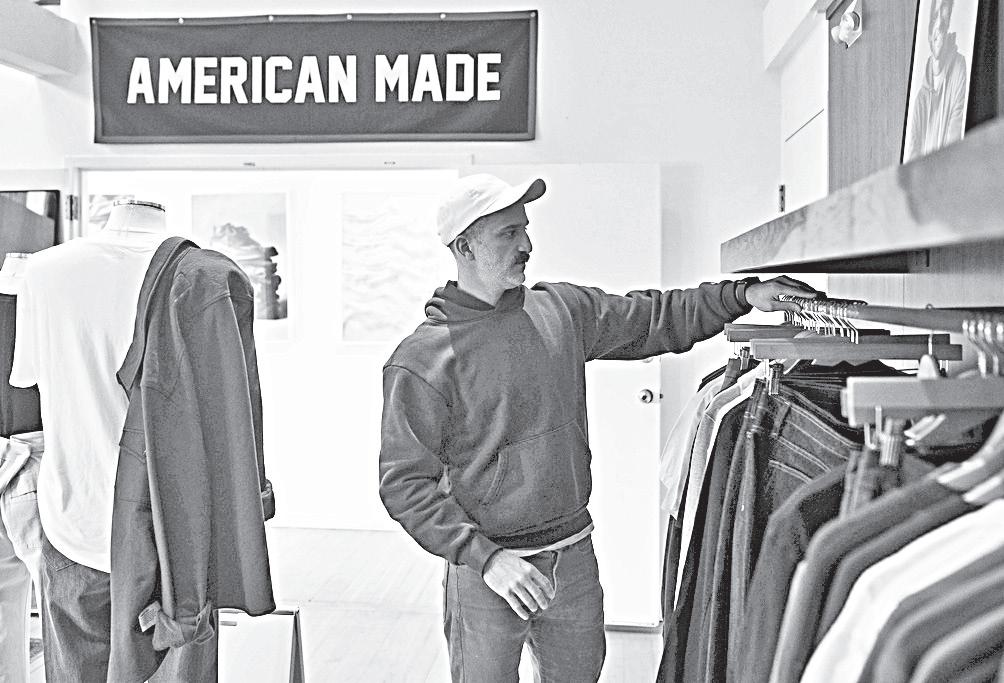
billions of dollars a year in new import taxes—albeit partially suspending some of them—launching a full-scale trade war against China and pledging to wrap up deals with dozen of other countries that are temporarily facing tariffs of 10%.
Financial markets are swinging with every twist and turn from Trump’s tariff pronouncements.
Many Americans are not convinced this is the right approach.
About 6 in 10 say Trump has “gone too far” when it comes to imposing new tariffs, according to the poll.
Stocks are down this year, while interest charges on US government bonds have climbed in ways that could make it more costly to repay mortgages, auto loans and student debt. CEOs are scrapping their earnings guidance for investors and seeking exemptions from Trump’s tariffs, which hit allies such as Canada and even penguin-
Hoa Phat Group JSC, the country’s biggest steelmaker, has its new Dung Quat 2 Iron and Steel Production Complex coming online this year, adding 5.6 million tons of hot-rolled coil annually to local supply. According to CRU Group’s research, the facility will reduce Vietnam’s average production costs for the product by 11% in 2025 compared to last year, making it even more competitive and giving it another boost in the battle to fend off Chinese imports—or to reach new export markets, even with levies.
Trump’s global tariff campaign has widened the number of countries feeling the pain of trade barriers, leaving Vietnam
“It’s like I teach you how to walk if you don’t know how to walk, and I will help you walk if you aren’t able to walk,” Ye said.
Some restrictions on technology are understandable, but too many “will hurt the innovation of the US itself, hindering the speed of the development of their supply chains if it tries to only use local companies,” he said.
Some attending the show said they believe that ultimately Trump will end up softening his stance.
“Trump is a businessman and he hopes to boost the US economy by imposing tariffs on other countries, but I do believe those


inhabited islands.
Trump seemed to recognize the drag from tariffs as he highlighted this week the possibility of a deal with China. Treasury Secretary Scott Bessent had also said in a closed-door speech that the situation with China is not “sustainable.”
Widespread concern about rising grocery prices
ABOUT 6 in 10 US adults are “extremely” or “very” concerned about the cost of groceries in the next few months, while about half are highly concerned about the cost of big purchases, such as a car, cellphone or appliance. Less than half are highly concerned about their ability to purchase the goods they want—a sign of the economy’s resilience so far.
“This whole tariff war is just a losing situation not only for the American people but everybody worldwide,” said Nicole Jones, 32.
“It’s revenge—and everybody’s losing on it.”
The Englewood, Florida, resident voted last year for then-Vice President Kamala Harris, who replaced the incumbent president, Joe Biden, as the Democratic nominee. Jones hadn’t given much thought to tariffs until recently, and now, as an occupational therapy student, she also worries about losing her financial aid and facing high amounts of educational debt.
“Things are more expensive for us,” she said.
And most Americans still think the national economy is in a weak state.
The difference is that Republicans—who largely thought the economy was in bad shape when Biden was president—now feel more optimistic. But Democrats have become much bleaker about the country’s financial future.
“It wasn’t all sunshine and rainbows, but we were doing fine,” Jones, a Democratic voter, said about the economy before Trump’s policies went into effect.
The AP-NORC poll of 1,260 adults was conducted April 17-21, using a sample drawn from NORC’s probability-based AmeriSpeak Panel, which is designed to be representative of the US population. The margin of sampling error for adults overall is plus or minus 3.9 percentage points.
Retirement savings are a source of anxiety—about 4 in 10 Americans say their retirement savings are a “major source” of stress in their lives. But fewer—only about 2 in 10—identify the stock market as a major source of anxiety.
less isolated.
“Vietnam is now in a better position than, say, Canada,” said Shankhadeep Mukherjee, an analyst at CRU Group, pointing to Washington’s removal of exemptions for certain countries and a lingering relative advantage. “That means Vietnam can earn wider margins while lowering prices just enough to outcompete Canada.”
“Going out and finding new markets or expanding alternative markets is all the more important now that tariffs are spreading— oversupply requires an export market, no matter what,” said Tomas Gutierrez, an analyst at consultancy Kallanish Commodities Ltd.
“In the same way we see Chinese traders going out to sell steel, more Vietnamese traders will be going out to explore places like the EU or Latin America.” With assistance from Nguyen Kieu Giang/Bloomberg
Back at the VNSteel plant, steel sheets are rolling off the production line in a thinner, more polished form—cold-rolled coil used in everything from cars to appliances. Lined up in fat rolls, the metal will soon be ready to be shipped out, across the country and beyond. One roll is labelled and ready to be sent to Indonesia. As domestic capacity grows and competition cranks up, more will follow that same path.
measures are temporary,” said Yang Jingdi, assistant to the CEO of LvXiang Automobile Parts Co., which makes electronics including rearview mirrors and pumps.
“We’ll wait and see,” he said. “China has full and abundant supply chains and it is the US that won’t hold on if the tariff measures from both sides remain unchanged.”
AOD Technology, which makes domain control units that process various commands such as opening doors and controlling running boards on SUVs, was displaying a bare-bones version of Tesla’s Cybertruck equipped with its devices—evidence of its

ambition to eventually sell to the EV maker. It might not be the best time to be planning on selling such components to a US automaker for production in America, Claire Deng, a senior sales manager, conceded. But she said AOD, based in south China’s Zhongshan, had bought the Cybertruck as part of a process that can take years, developing what’s needed to become a supplier.
“Who knows what will happen,” she said. “We want to be ready.”
The Associated Press researcher Yu Bing contributed.


By Rob Gillies & Jim Morris
The Associated Press
VANCOUVER, British Co -
lumbia—Diana and Rick
Bellamy initially planned to take a Caribbean cruise out of Houston before heading to Laurel, Mississippi, to visit the home of one of their favorite HGTV shows, “Home Town.”
The Calgary couple scrapped those plans and vacationed last month along Mexico’s Pacific coast instead, put off by US President Donald Trump’s trade war with Canada, the insults he’s hurled at their homeland, and stories about American border agents searching people’s phones and detaining foreigners for minor reasons.
She found it ironic that she felt more comfortable traveling to Mexico than the US.
“I never thought I would hear myself say that,” Diane Bellamy said.
Trump’s attacks on Canada’s economy and threats to make it the 51st state have infuriated Canadians, who are canceling trips to the US in big numbers. They also seem to have also flipped the narrative heading into Canada’s parliamentary elections on Monday, with Prime Minister Mark Carney’s Liberal Party surging after trailing far behind in the polls just a few months ago.
A steep decline
THE US gets more visitors from Canada each year than from any other country, according to the US Travel Association, an industry trade group, which said the 20.4 million visits from Canada
last year generated $20.5 billion in spending.
But there has been a big drop in foreigners traveling to the US since Trump took office, and Canadians are no exception. There were more than 910,000 fewer land border crossings from Canada into the US last month than in March of 2024—a more than 22% drop—according to US Customs and Border Protection data. An Air Canada spokesman, meanwhile, said Canada-US. flight bookings for April through September are down about 10%.
Trump brushed aside the decline in tourism to the United States on Wednesday, saying, “There’s a little nationalism there I guess, perhaps. It’s not a big deal.”
Traveler worries
Since Trump started his second term, there have been well-publicized reports of tourists being stopped at US border crossings and held for weeks at immigration detention facilities before being allowed to fly home at their own expense.
On March 3, Canadian Jasmine Mooney, an actor and entrepreneur on a US work visa, was detained by US border agents in San Diego. She was released after 12 days detention.
Before Mooney’s release, British Columbia Premier David Eby expressed concern, saying: “It certainly reinforces anxiety that...many Canadians have about our relationship with the US right now, and the unpredictability of this administration and its actions.”
The Canadian Association of University Teachers, which represents faculty and staff at Canadian
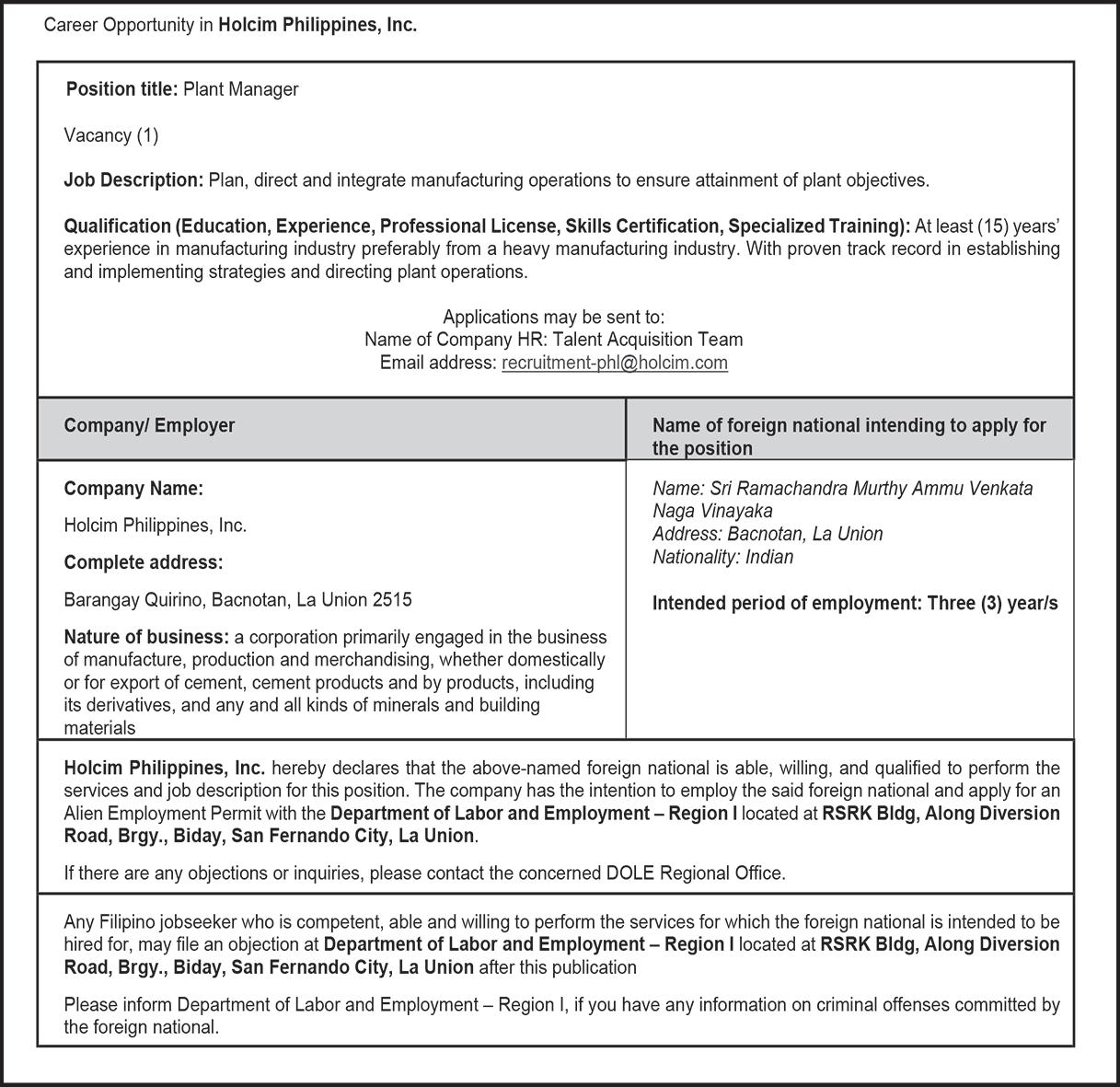
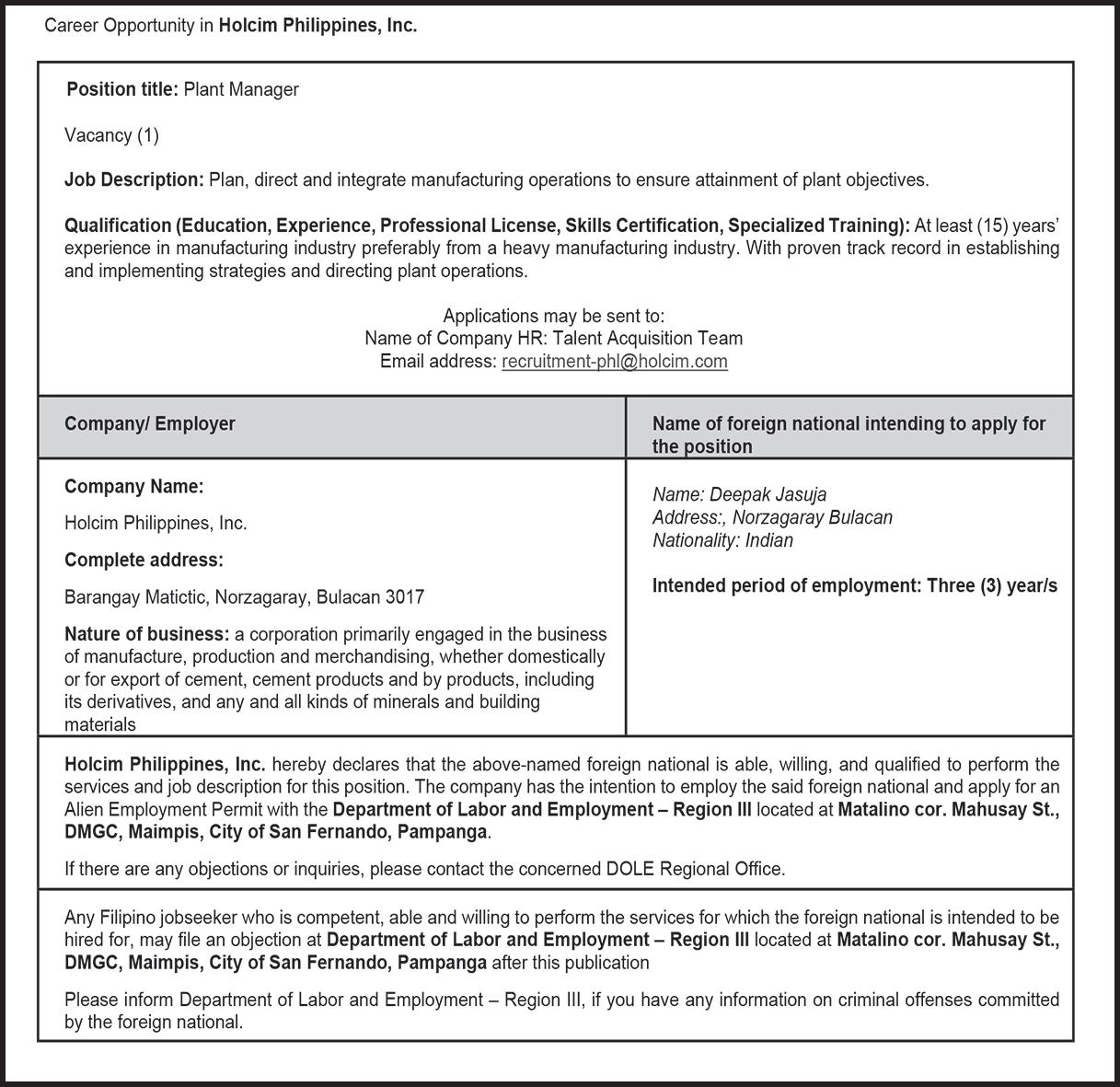
universities, warned its members against nonessential travel to the US due to the “political landscape” under Trump and reports of Canadians encountering difficulties crossing the border.
Academics who have expressed negative views about the Trump administration should be particularly cautious about traveling to the US, said the group.
“People are scared to cross the border. I don’t know what Americans are thinking, quite frankly. Are they that oblivious?” said former Quebec Premier Jean Charest, who has family in Florida.
Mike Sauer, who runs a community policing center in Vancouver, said he and his partner have no interest in traveling to the US now because of Trump’s politics and border fears. One of Sauer’s concerns is that if a border guard were to check his cellphone, the guard might see his past purchases of marijuana, which is legal to buy in Canada and about half the 50 states but is still illegal under US federal law.
“The States have a different view on drugs. They could certainly look at my phone and see I’m 420-friendly,” he said, meaning he’s marijuana-friendly. “I think it kind of depends on which border guard would have a problem with that and which ones wouldn’t.”
Dietra Wilson, 32, said when she was younger, she often visited Detroit, which is just across the border from Windsor, Ontario, where she and her husband, Ben, own a secondhand shop. She hasn’t visited much in recent years, though, and she said she’s heard of people’s worries about crossing the
border since Trump moved back into the White House.
“It’s worrisome,” she said. Ben Wilson, 37, also has qualms about trying to cross.
“Why would I want to?” he said. “Regardless of the tariffs, if I’m going to be stopped at the border for my phone or something somebody texted me, why go?”
Industry worries THE drop in Canadian tourism to the US led California Gov. Gavin Newsom, a frequent target of Trump, to announce an ad campaign this month meant to lure Canadians back to his state, citing a 12% year-on-year drop in February.
McKenzie McMillan, a consultant with a Vancouver-based travel agency, The Travel Group, said the company’s bookings to the US have dried up. “We have seen a neartotal collapse of US business,” he said. “Probably about a 90% drop since February.”
Gillies reported from Toronto. Associated Press reporter Corey Williams in Windsor, Ontario, contributed to this report.
Lesley Keyter, the CEO and founder of the Travel Lady agency in Calgary, said she’s seen people actually forfeit money to cancel their US trips.
“Even if they’re going on a Caribbean cruise, they don’t want to go down to Fort Lauderdale to get on the cruise ship,” she said.
Gillies reported from Toronto. Associated Press reporter Corey Williams in Windsor, Ontario, contributed to this report.

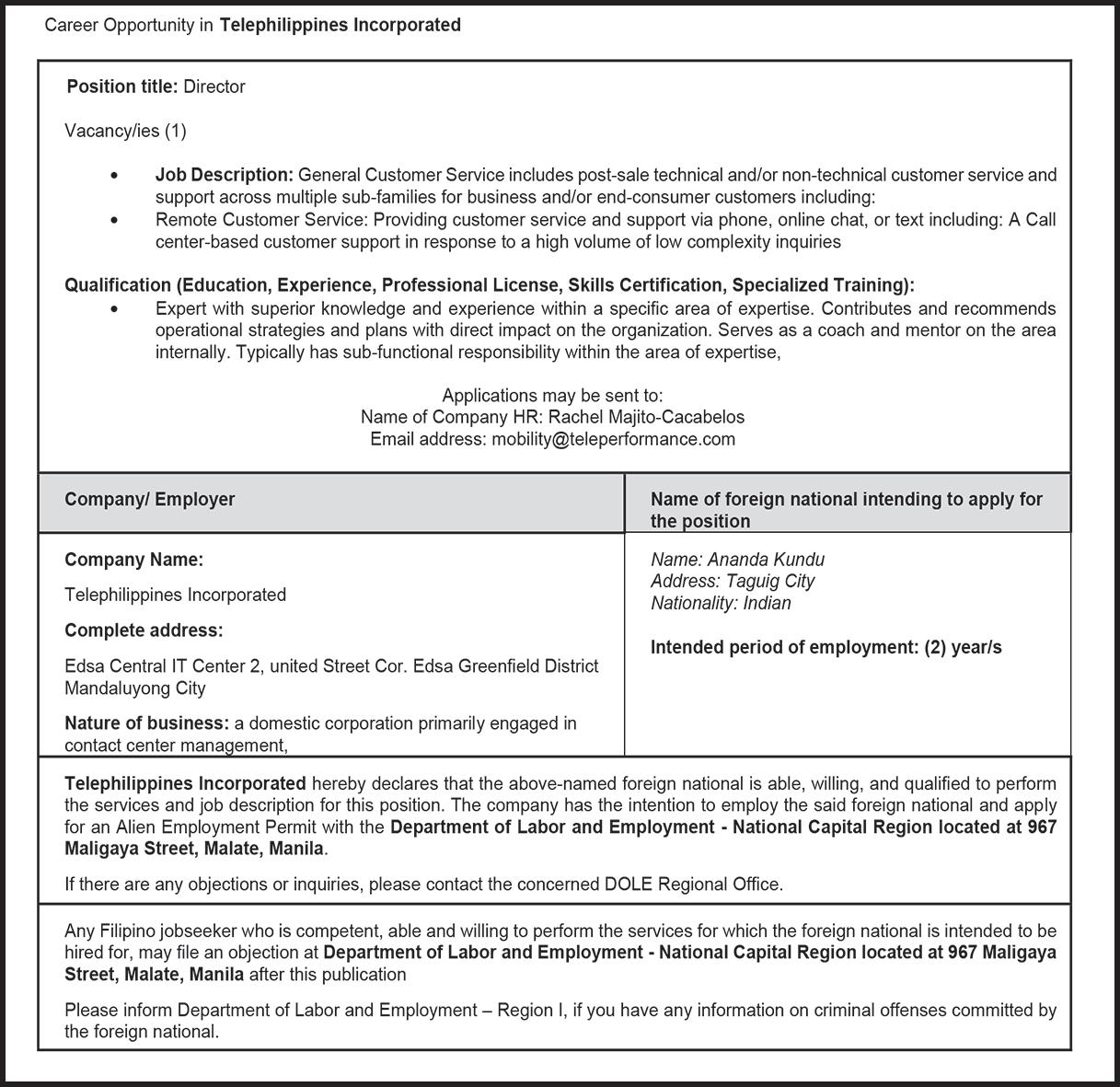
By Alastair Gale, Haze Fan, Yoshiaki Nohara & Sakura Murakami
JAPAN intends to push back against any US effort to bring it into an economic bloc aligned against China because of the importance of Tokyo’s trade ties with Beijing, according to current and former Japanese government officials.
Like many other countries, Japan is trying to get permanent relief from President Donald Trump’s tariffs by addressing US concerns in areas of bilateral trade, including automobiles and agriculture. The officials, who asked not to be identified, said that Japan is pushing to strike a deal before the current 90-day reprieve in tariffs expires, with one person saying the country hopes to finalize an agreement around the Group of Seven summit in June.
At the same time, the officials said Japan doesn’t want to get caught up in any US effort to maximize trade pressure on China by curbing its own economic interaction with Beijing, which is Tokyo’s biggest trading partner and an important source of goods and raw materials.
Although the US hasn’t made any specific requests to Japan regarding China, Tokyo would prioritize its own interests if that occurs, Japanese officials say. One of the officials added that Japan has conveyed to China on multiple occasions that it doesn’t fully align with the US on chip-related exports and semiconductor restrictions.
Japan’s Foreign Ministry didn’t immediately provide comment when requested by Bloomberg.
Treasury Secretary Scott Bessent, who is playing a leading role in trade talks with Japan and other nations, said earlier this month that the US would seek to reach agreements with allies and “then we can approach China as a group.” Bloomberg subsequently reported that the US is preparing to ask countries seeking tariff relief to reduce economic ties to China in a move to strengthen US leverage over Beijing as it tries to win concessions on trade.
Japan’s lead trade negotiator Ryosei Akazawa deflected a question about Bessent’s comments on Friday.
“My mission is to request a review of the additional tariffs,” said Akazawa, who is scheduled to return to Washington for a second round of talks with US officials soon.
“The US may try to do something collectively with other nations that also reach a deal with the US. But that will be beyond my responsibilities.”
‘Resolutely opposes’ JAPAN is now weighing up its concessions ahead of the second round of trade talks. That could be made in agriculture, with the Yomiuri newspaper saying the government was considering buying more US corn, while the Nikkei said a boost in soybean imports was on the cards. Public broadcaster NHK said the government was looking to present an overview of investments that Japanese carmakers were planning in the US.
Katsunobu Kato, Japan’s finance minister, dampened speculation that the US would make requests over the weak yen, saying that foreign exchange targets
See “Japan,” A14
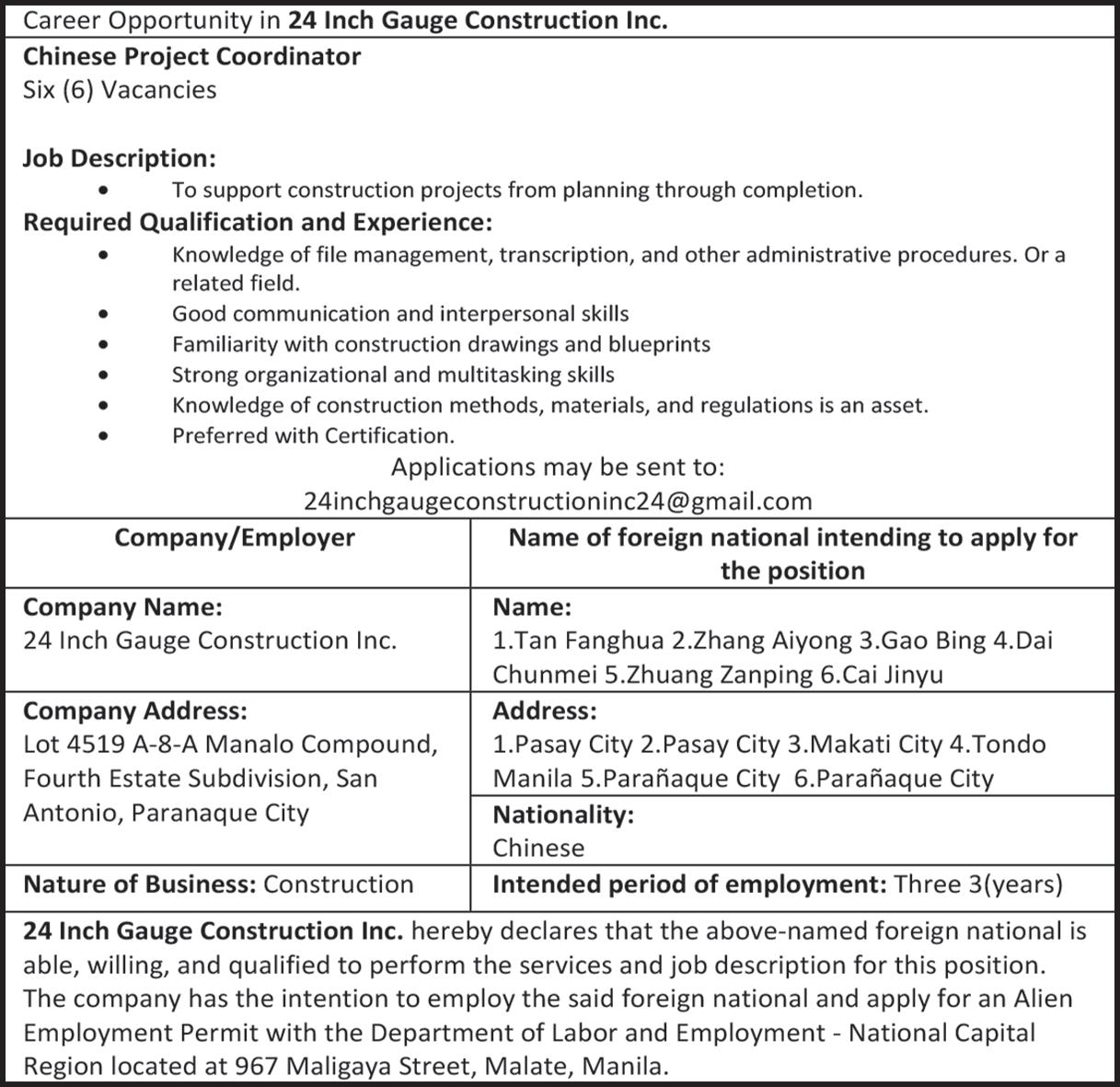
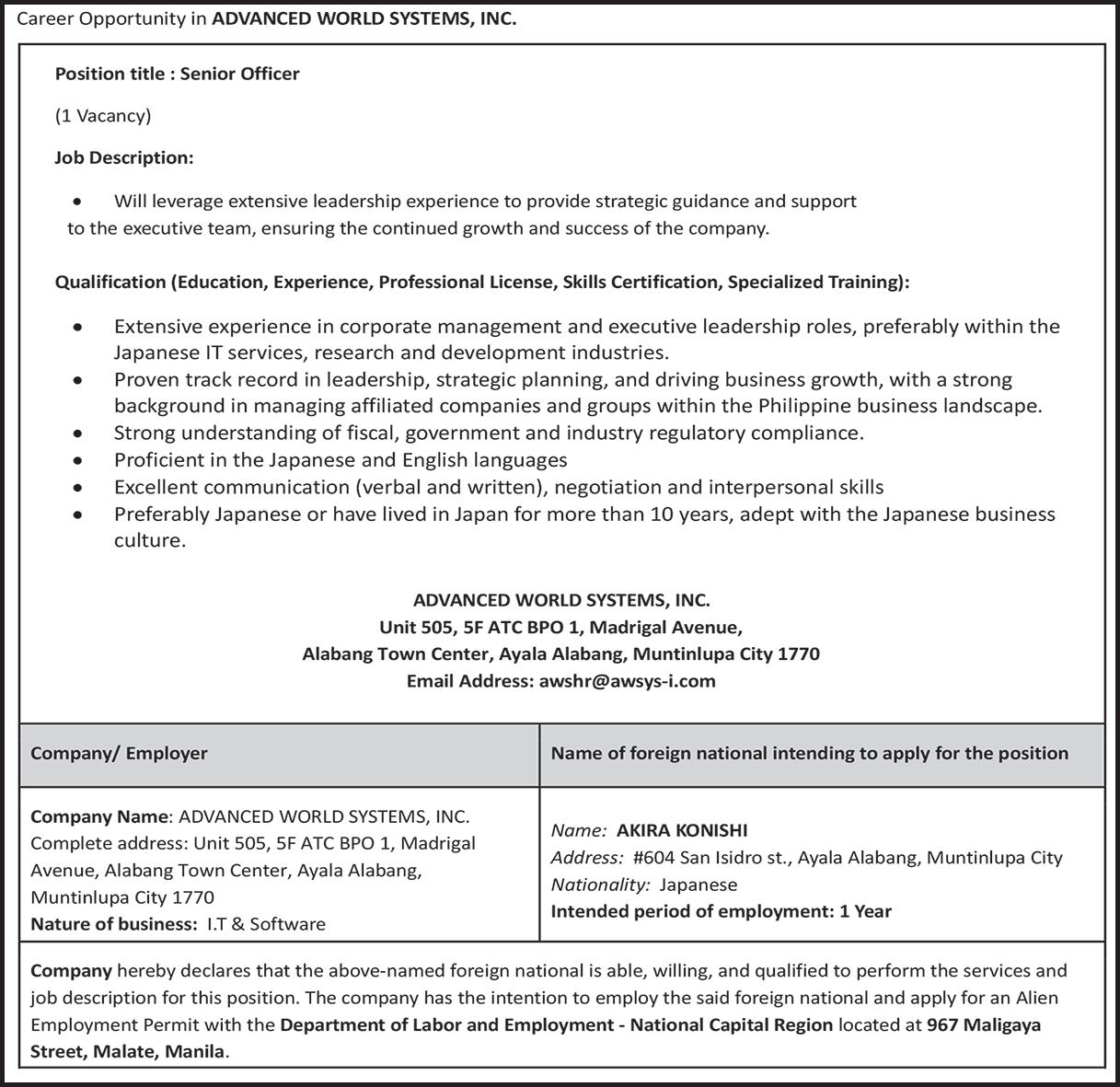
By Melanie Lidman The Associated Press
T
EL AVIV, Israel—When nearly 1,000 Israeli Air Force veterans signed an open letter last week calling for an end to the war in Gaza, the military responded immediately, saying it would dismiss any active reservist who signed the document.
But in the days since, thousands of retired and reservist soldiers across the military have signed similar letters of support.
The growing campaign, which accuses the government of perpetuating the war for political reasons and failing to bring home the remaining hostages, has laid bare the deep division and disillusionment over Israel’s fighting in Gaza.
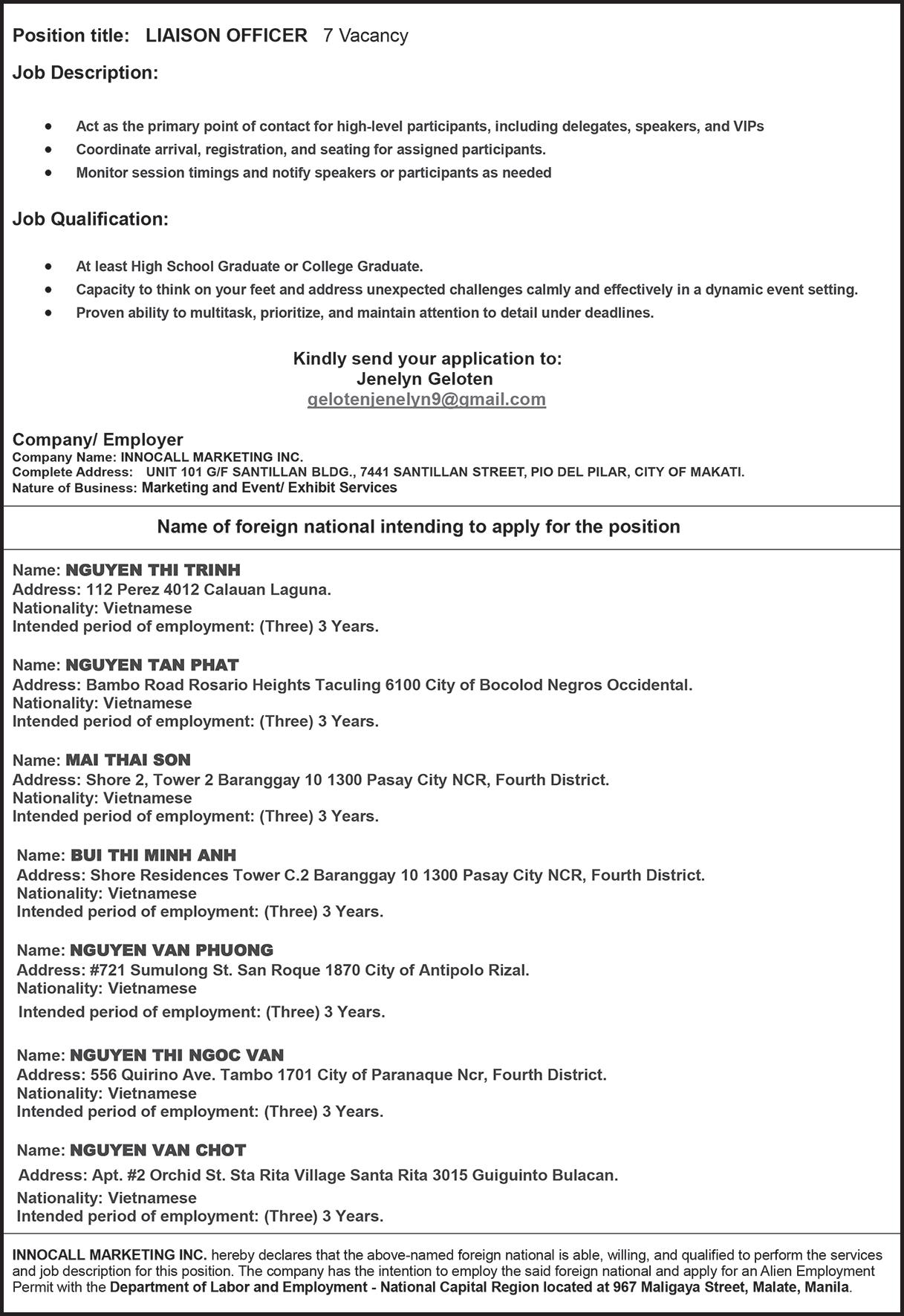
By spilling over into the military, it has threatened national unity and raised questions about the army’s ability to continue fighting at full force. It also resembles the bitter divisions that erupted in early 2023 over the government’s attempts to overhaul Israel’s legal system, which many say weakened the country and encouraged Hamas’ attack later that year that triggered the war.
“It’s crystal clear that the renewal of the war is for political reasons and not for security reasons,” Guy Poran, a retired pilot who was one of the initiators of the air force letter, told The Associated Press.
A return to war
THE catalyst for the letters was Prime Minister Benjamin Netanyahu’s decision on March 18 to return to war instead of sticking to a ceasefire that had facilitated the release of some hostages.
Netanyahu says the military pressure is needed to force Hamas to release the remaining hostages. Critics, including many families of the hostages, fear that it will get them killed.
One month after Netanyahu resumed the war, none of the 59 hostages held by Hamas have been freed or rescued, of whom 24 are believed to still be alive.
In their letters, the protesters have stopped short of refusing to serve. And the vast majority of the 10,000 soldiers who have signed are retired in any case.
Nonetheless, Poran said their decision to identify themselves as ex-pilots was deliberate—given the respect among Israel’s Jewish majority for the military, and especially for fighter pilots and other prestigious units. Tens of thousands of academics, doctors, former ambassadors, students and high-tech workers have signed similar letters of solidarity in
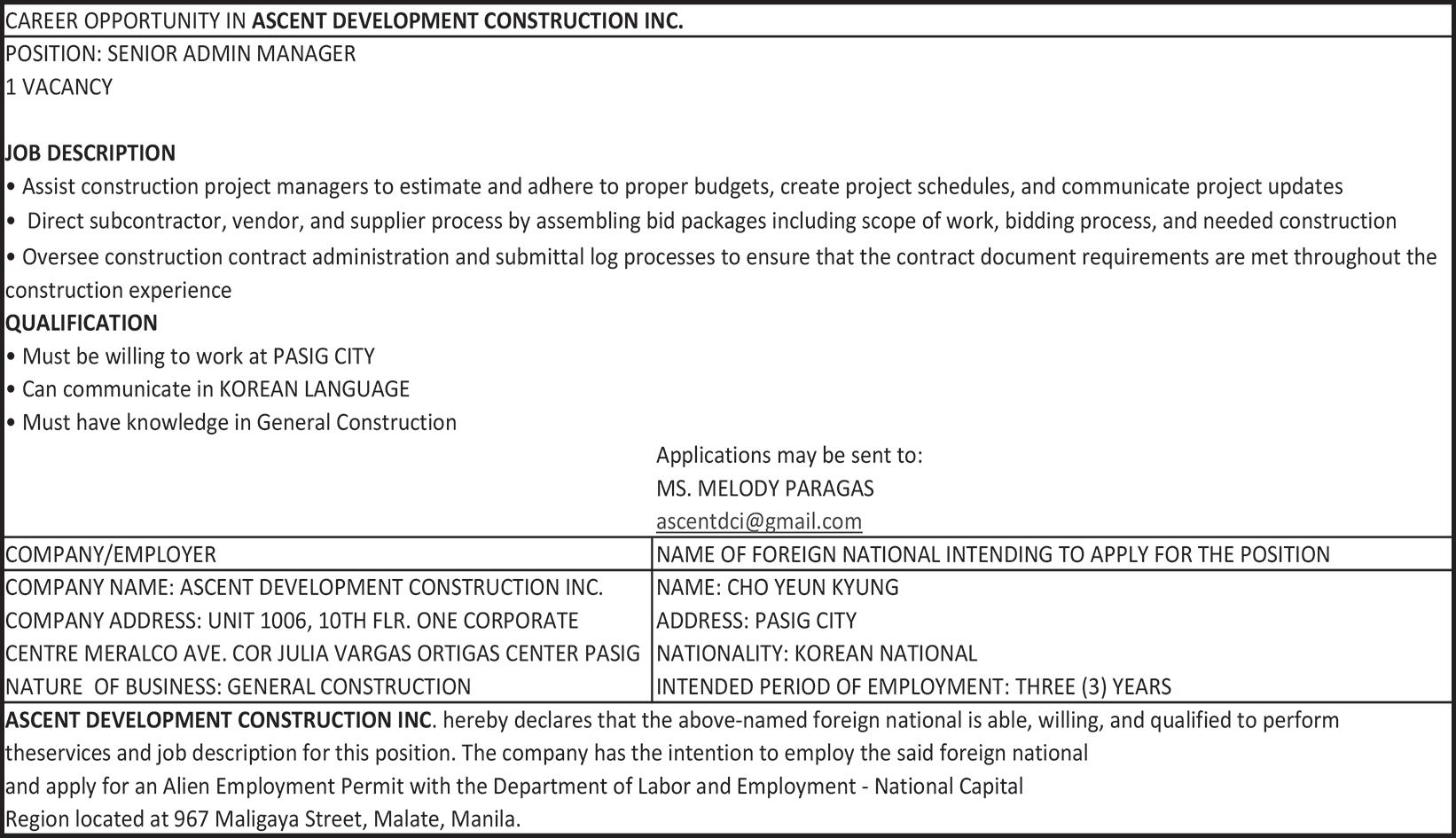
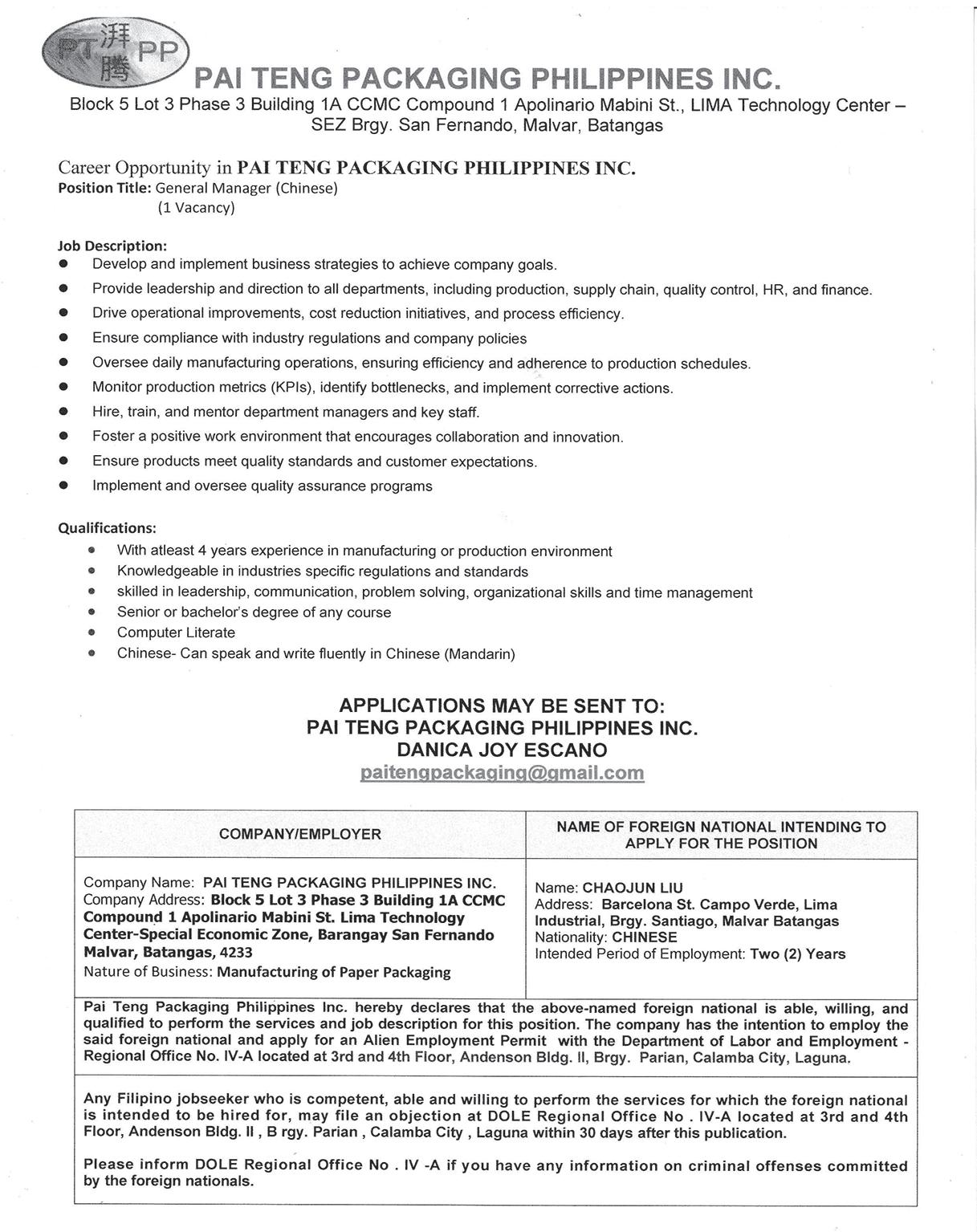
recent days, also demanding an end to the war.
“We are aware of the relative importance and the weight of the brand of Israeli Air Force pilots and felt that it is exactly the kind of case where we should use this title in order to influence society,” said Poran.
Elusive war goals
THE war erupted on October 7, 2023, when Hamas carried out a surprise crossborder attack, killing about 1,200 people in southern Israel and taking 251 others hostage.
Throughout the war, Netanyahu has set two major goals: destroying Hamas and bringing home the hostages.
Israel’s offensive has reduced much of Gaza to rubble and killed more than 51,000 Palestinians, according to Gaza health officials, who don’t differentiate between civilians and combatants.
While Israel has come under heavy international criticism over the devastation in Gaza, the domestic opposition to the conflict reflects a widespread belief that Netanyahu’s war goals are not realistic.
Nearly 70% of Israelis now say bringing home the hostages is the most important goal of the war, up from just over 50% in January 2024, according to a study conducted by the Jerusalem think tank Israel Democracy Institute. Nearly 60% of respondents said Netanyahu’s two goals cannot be realized together.
The survey interviewed nearly 750 people and had a margin of error of 3.6 percentage points.
Netanyahu’s opponents have also accused him of resuming the war to pander to his hardline coalition partners, who have threatened to topple the government if he ends the fighting.
Continued from A13
had not been discussed during talks on Thursday with Bessent.
As Japan gears up for the trade talks, Prime Minister Shigeru Ishiba is also seeking to cushion the blow that the US tariffs may have on the domestic economy. He announced an emergency economic package that will help smaller businesses and the agriculture industry.
But as Japan works towards closing a deal with the US, President Xi Jinping’s government has warned countries against striking deals with the US that also target Beijing, saying on Monday it “resolutely opposes any party reaching a deal at the expense of China’s interests.”
“We need to be very careful about economic security issues and the supply chain involving China,” Kono Taro, a lawmaker in Japan’s ruling Liberal Democratic Party and former foreign minister, said in an interview with Bloomberg TV on Wednesday. Rather than dialing back trade, Tokyo is in the process of trying
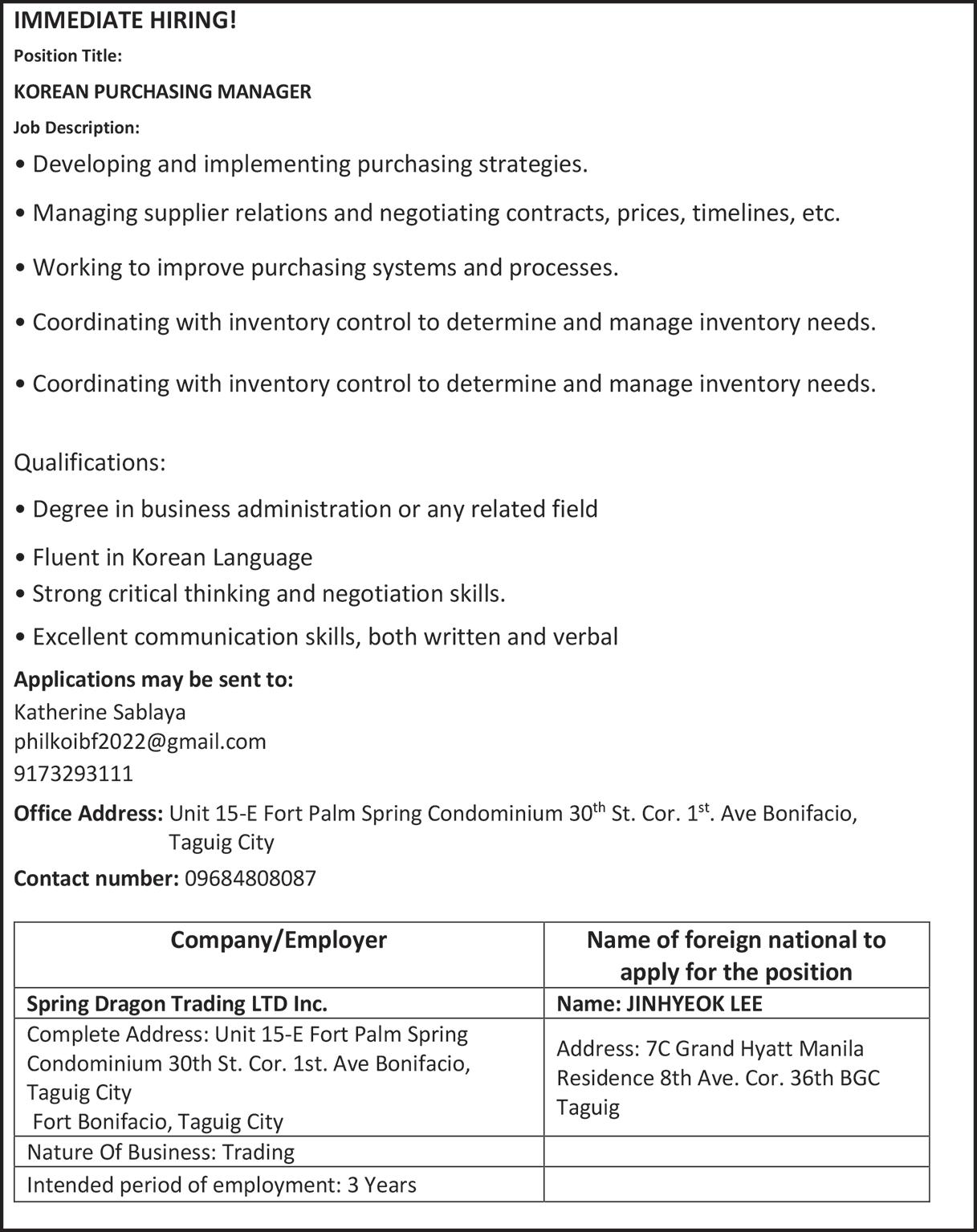
MANY people were surprised by the military’s snap decision to dismiss air force reservists who signed the protest letter.
The army, which is mandatory for most Jewish men, has long served as a melting pot and unifying force among Israel’s Jewish majority. Many key units rely heavily on reservists, who often to serve well into their 40s.
In a statement, the military said it should be “above all political dispute.”
As the protest movement has grown, a military official said the army is taking the letters “very seriously.”
He said it joins a list of challenges to calling up reservists and that the army is working to support them. A growing number of reservists have stopped reporting for duty, citing exhaustion, family reasons, and the financial burden of missing work.
“Any civilian can have his opinions. The problems come when people use the army as a tool promoting their opinions, whatever they may be,” the official said, speaking on condition of anonymity under military guidelines.
The army’s dilemma
ERAN DUVDEVANI , who organized a letter signed by 2,500 former paratroopers, told the AP that the army faces a dilemma.
“If it will keep on releasing from service the pilots, what about all the others who signed the letters? Will they be discharged from service as well?” he said.
He said he organized the letter to show “the pilots are not alone.” Their concern over the war’s direction “is a widespread opinion, and you have to take it into consideration.”
Although only a few hundred of the signatories are still actively serving, the Israeli military has been stretched by 18
to get China to resume imports of seafood and beef from Japan after bans imposed over health concerns. A series of Japanese delegations have made trips to China to manage Tokyo’s relationship with Beijing.
On Wednesday, Tetsuo Saito, leader of the Komeito Party—a key member of the ruling coalition—passed a letter from Ishiba for Xi to China’s no. 4 official, Wang Huning. Afterward, Saito said that both sides agreed to support the multilateral trading system and independently push the Trump administration to ease tariffs.
In a sign of Japan Inc.’s commitment to the China market, Toyota Motor Corp. this week agreed to open a new factory in Shanghai in 2027, with the company reportedly planning to invest around $2 billion in the plant.
months of fighting and isn’t in any position to be turning away anyone from reserve duty. Many Israelis are also furious that as reservists repeatedly get called up for action, the government continues to grant military exemptions to Netanyahu’s ultraOrthodox governing partners.
The number of Israelis continuing to report for reserve duty has dropped so low that the military has taken to social media to try to recruit people to keep serving.
Protest letters illuminate widespread divisions
ERAN HALPERIN , an expert in social psychology at Jerusalem’s Hebrew University, called the letters “the most important indication of the erosion of the ethos in this particular war.”
Though the war enjoyed widespread support at the outset, doubts have grown as so many hostages continue to languish in captivity and the Israeli death toll mounts. Nearly 850 soldiers have been killed since the war started.
“It’s very, very difficult to maintain and manage a war in such violent conflict when there are such deep disagreements about the main questions pertaining to the war,” Halperin said.
In recent days, Netanyahu’s office has published a flurry of messages touting meetings with families of the hostages, stressing he is doing everything he can to hasten their return.
On Tuesday, he and his defense minister toured northern Gaza, where Netanyahu praised the “amazing reservists” doing “marvelous work.”
Netanyahu’s office released videos of him marching through the sandy dunes surrounded by dozens of soldiers.
“We are fighting for our existence,” he said. “We are fighting for our future.”
Japanese manufacturing was hit hard when China restricted the export of rare earths to Japan in 2010 amid a political dispute. After that, Japanese industry and government made a concerted push to diversify supply, investing in Australia and elsewhere to reduce some of their reliance on China.
Japan is wary of similar restrictions after Beijing earlier this month added seven rare earths to its export control list in response to punitive tariffs imposed by Washington. Saito said he asked Chinese officials to make the “correct decisions” with regards to the handling of rare earths.
Japan needs to walk a tightrope over US-China relations because it also leans heavily on the US as it sole formal security ally. The largest overseas US military troop presence is based in Japan, and Trump has in recent days resumed his long-standing demand for Tokyo to pay more for US military bases. With assistance from James Mayger and Yuko Takeo/Bloomberg
More pessimistic AROUND 20% of Japan’s total commerce is with China, larger than its trade with the US. However, the US overtook China as an export destination for Japan in 2023, extending that lead last year. Japanese firms have become more pessimistic on the opportunities in China, with many cutting back investments as their revenue falls due to the weak Chinese economy and other factors.

By Jon Gambrell The Associated Press
MUSCAT, Oman—
Negotiations between Iran and the United States over Tehran’s rapidly advancing nuclear program will return Saturday to the secluded sultanate of Oman, where experts on both sides will start hammering the technical details of any possible deal.
The talks seek to limit Iran’s nuclear program in exchange for the lifting of some of the crushing economic sanctions the US has imposed on the Islamic Republic closing in on half a century of enmity.
US President Donald Trump has repeatedly threatened to unleash airstrikes targeting Iran’s program if a deal isn’t reached. Iranian officials increasingly warn that they could pursue a nuclear weapon with their stockpile of uranium enriched to near weapons-grade levels.
Neither Iran nor the US have offered any explanation on why
the talks will return to Muscat, the Omani capital nestled in the Hajar Mountains. Oman has been a mediator between the countries.
Last weekend’s talks in Rome offered a more-equal flight distance between Iranian Foreign Minister Abbas Araghchi and US Mideast envoy Steve Witkoff, who are leading the negotiations.
But Rome remains in mourning after the death of Pope Francis, whose funeral will be Saturday. And Iranian state television, in covering last weekend’s talks, complained at length on air about the “paparazzi”
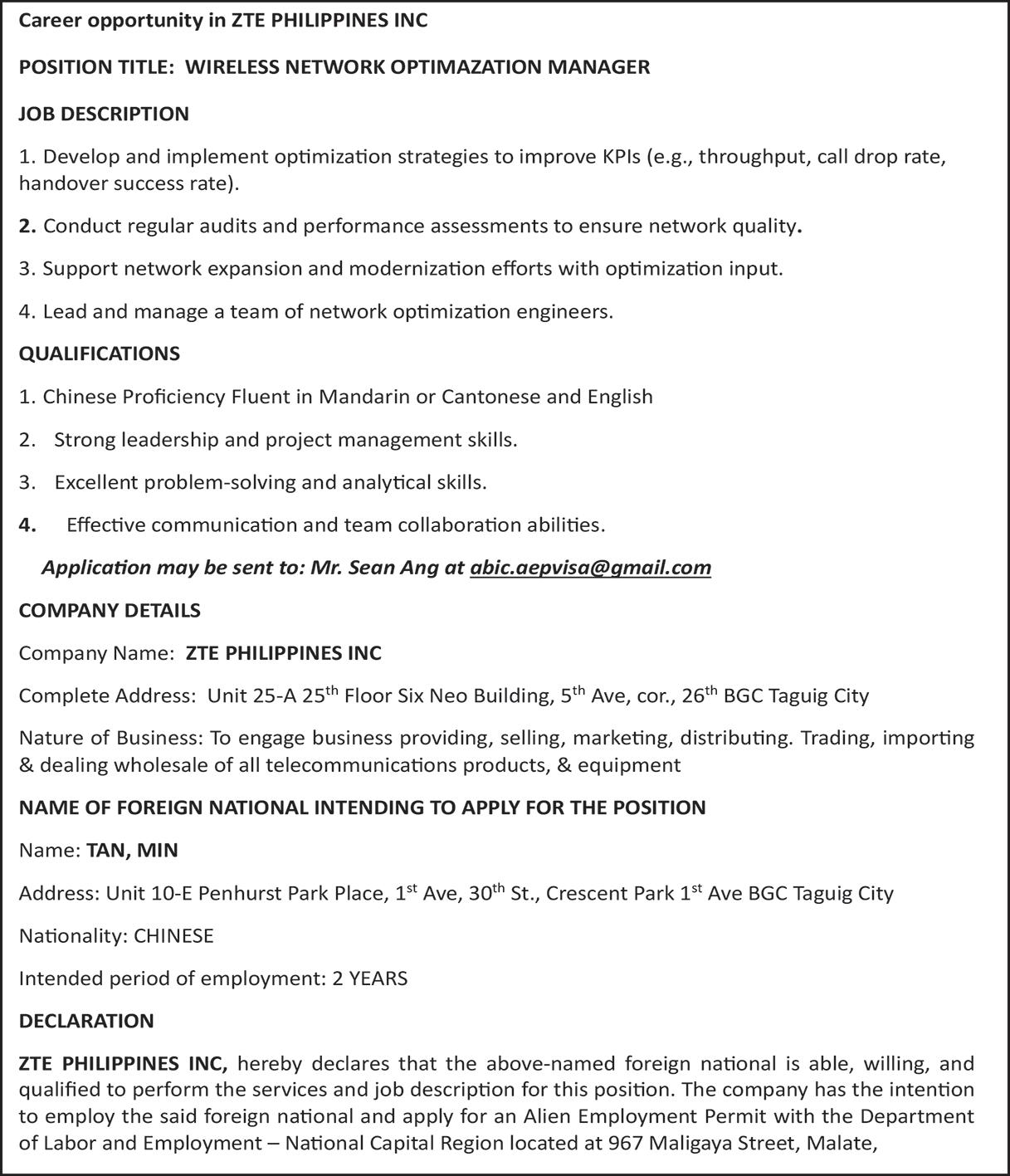
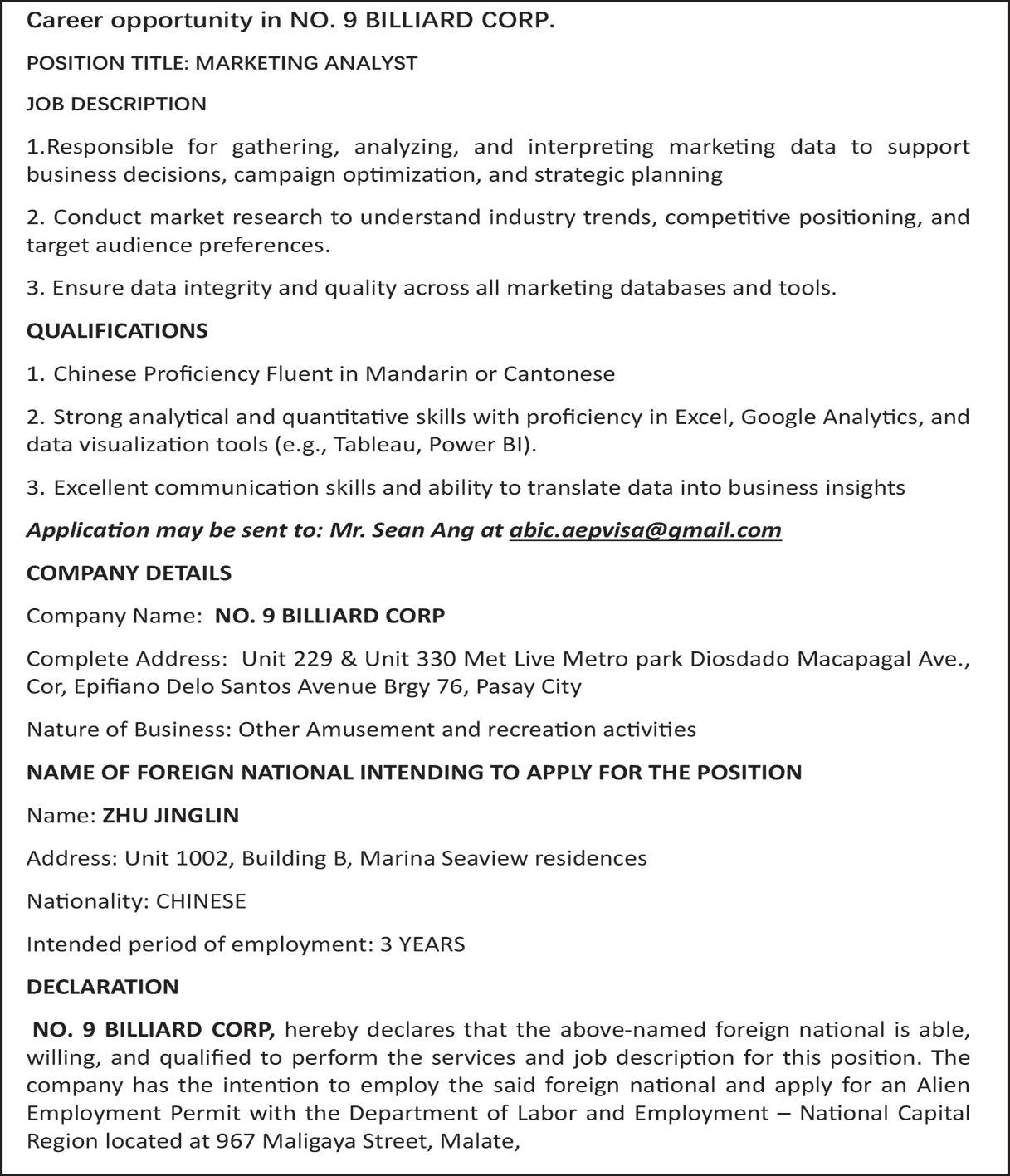
gathered across the street from the Omani Embassy in Rome’s Camilluccia neighborhood.
“As you can see, unlike the first round of talks where the presence of journalists was limited and the Omanis had special management in place to prevent a large and chaotic media presence from disrupting the negotiations, this time in Rome, Italy, that kind of control hasn’t been applied,” said Hosnieh Sadat Shobeiri, an Iranian state TV journalist dressed in gray, all-encompassing chador.
“Because of the crowd we’re seeing here, with media outlets from various countries—including some that are anti-Iran—it’s possible that we’ll hear more conflicting reports and news aimed at disrupting the talks coming out of Rome compared to Oman.”
‘Peaceful use of nuclear energy’
The Muscat talks come as Iran appears to have lined up Chinese and Russian support. Araghchi traveled to Moscow last week and this week visited Beijing.
On Thursday, Chinese, Iran and Russian representatives met the head of the International Atomic Energy Agency, the United Nations’ nuclear watchdog that likely will verify compliance with any accord like it did with Tehran’s 2015 nuclear deal with world powers. That deal included China and Russia, as well as France, Germany and the United Kingdom.
However, Iran has greatly restricted the IAEA’s inspections— leading to fears internationally that centrifuges and other nuclear material could be diverted.
The IAEA offered no readout from the talks, but China’s staterun Xinhua news agency on Friday described the three nations as saying the agency has “the necessary potential and expertise to contribute constructively to this process.”
“China, Russia and Iran emphasized that political and diplomatic engagement based on mutual respect remains the only viable and practical path for resolving the Iran nuclear issue,” the report said. It added that China respects Iran’s “right to the peaceful use of nuclear energy.”
The Trump administration has kept France, Germany and the U.K. out of its direct negotiations with Iran, something similarly reflected in Witkoff’s negotiations with Russia over ending its war on Ukraine. Witkoff traveled Friday to Moscow ahead of Saturday’s meeting in Muscat.
Araghchi meanwhile has said he’s open to visiting Berlin, London and Paris to discuss the negotiations.
“The ball is now in the E3’s court,” Araghchi wrote on the social platform X on Thursday, using an acronym for the countries. “They have an opportunity to do away with the grip of Special Interest groups and
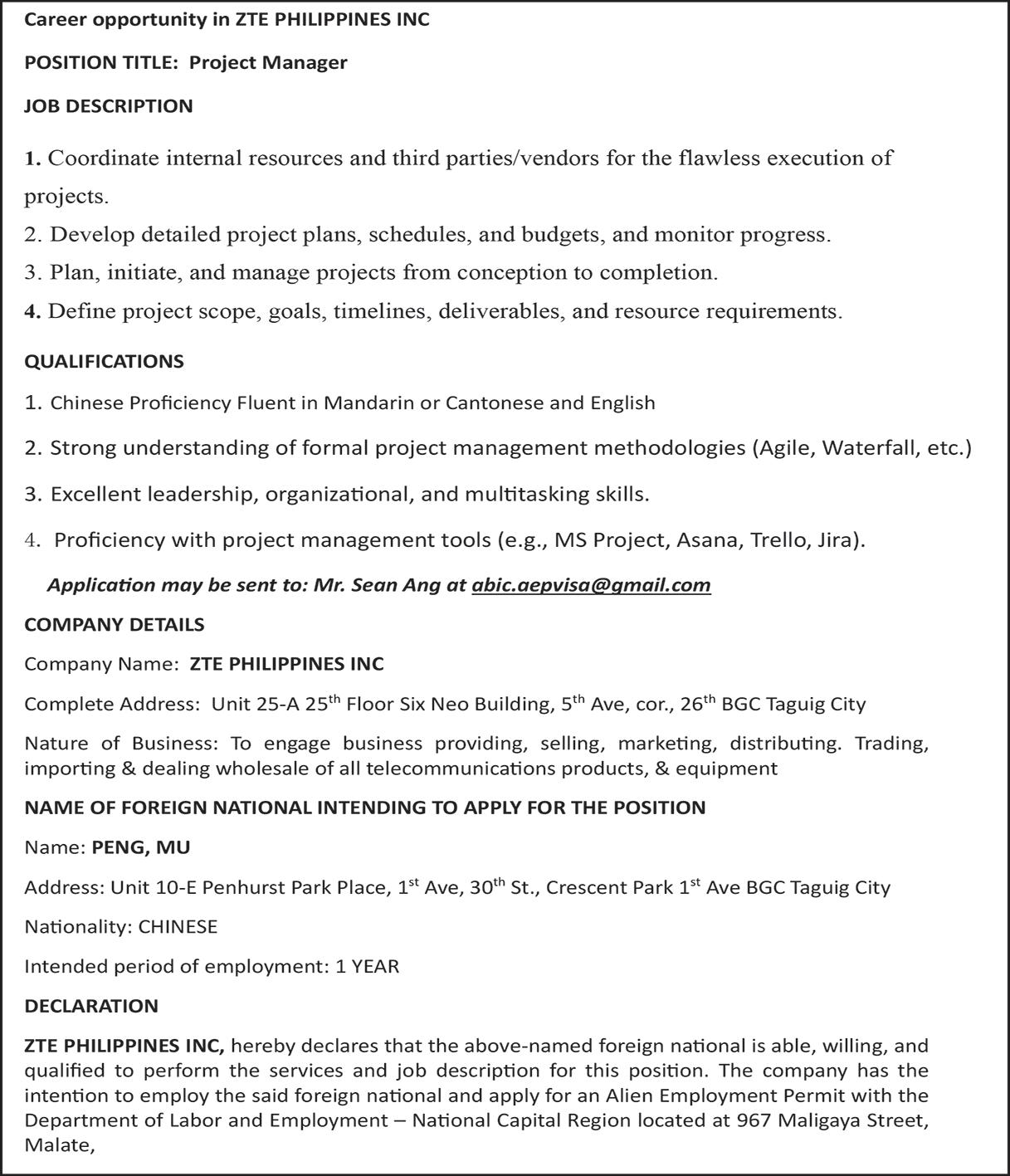

forge a different path. How we act at this critical junction is likely to define the foreseeable future.”
US stance on enrichment hardens
TWO Iranian deputy foreign ministers, Majid Takht-e Ravanchi and Kazem Gharibabadi, are expected to lead Tehran’s expert team, the semiofficial Tasnim news agency reported. Takht-e Ravanchi took part in the 2015 nuclear talks, while Gharibabadi as well as been involved in atomic negotiations.
The US technical team, which is expected to arrive in Oman on Friday, will be led by Michael Anton, the director of US Secretary of State Marco Rubio’s policy planning staff. Anton does not have the nuclear policy experience of those who led America’s efforts in the 2015 talks.
However, he was an early supporter of Trump, describing the 2016 election as a “charge the cockpit or you die” vote. “A Hillary Clinton presidency is Russian Roulette with a semi-auto,” Anton wrote. “With Trump, at least you can spin the cylinder and take your chances.” He also criticized “Iran sycophancy” in the same essay.
Rubio, speaking on a podcast released this week, also kept up a Trump line that Iran needed to stop its enrichment of uranium entirely.
“If Iran wants a civil nuclear program, they can have one just
like many other countries can have one, and that is they import enriched material,” Rubio said.
Iran ‘on high alert’ BUT Iran has insisted that keeping its enrichment is key. Witkoff also has muddied the issue by first suggesting in a television interview that Iran could enrich uranium at 3.67%, then later saying that all enrichment must stop.
Meanwhile, one more wildcard is Israel, whose devastating war on Hamas in the Gaza Strip grinds on. Trump initially announced the Iran talks with Prime Minister Benjamin Netanyahu at his side. But Israel, which for years has targeted Iran’s nuclear program with attacks on its facilities and scientists, has kept open the possibility of airstrikes to destroy Tehran’s enrichment sites.
On Monday, Israel’s military conducted drills preparing for possible new Iranian missile attacks, the country’s public broadcaster KAN reported.
“Our security services are on high alert given past instances of attempted sabotage and assassination operations designed to provoke a legitimate response,” Araghchi wrote on Wednesday in a post on X.
The Associated Press writer Amir Vahdat in Tehran, Iran, contributed to this report.
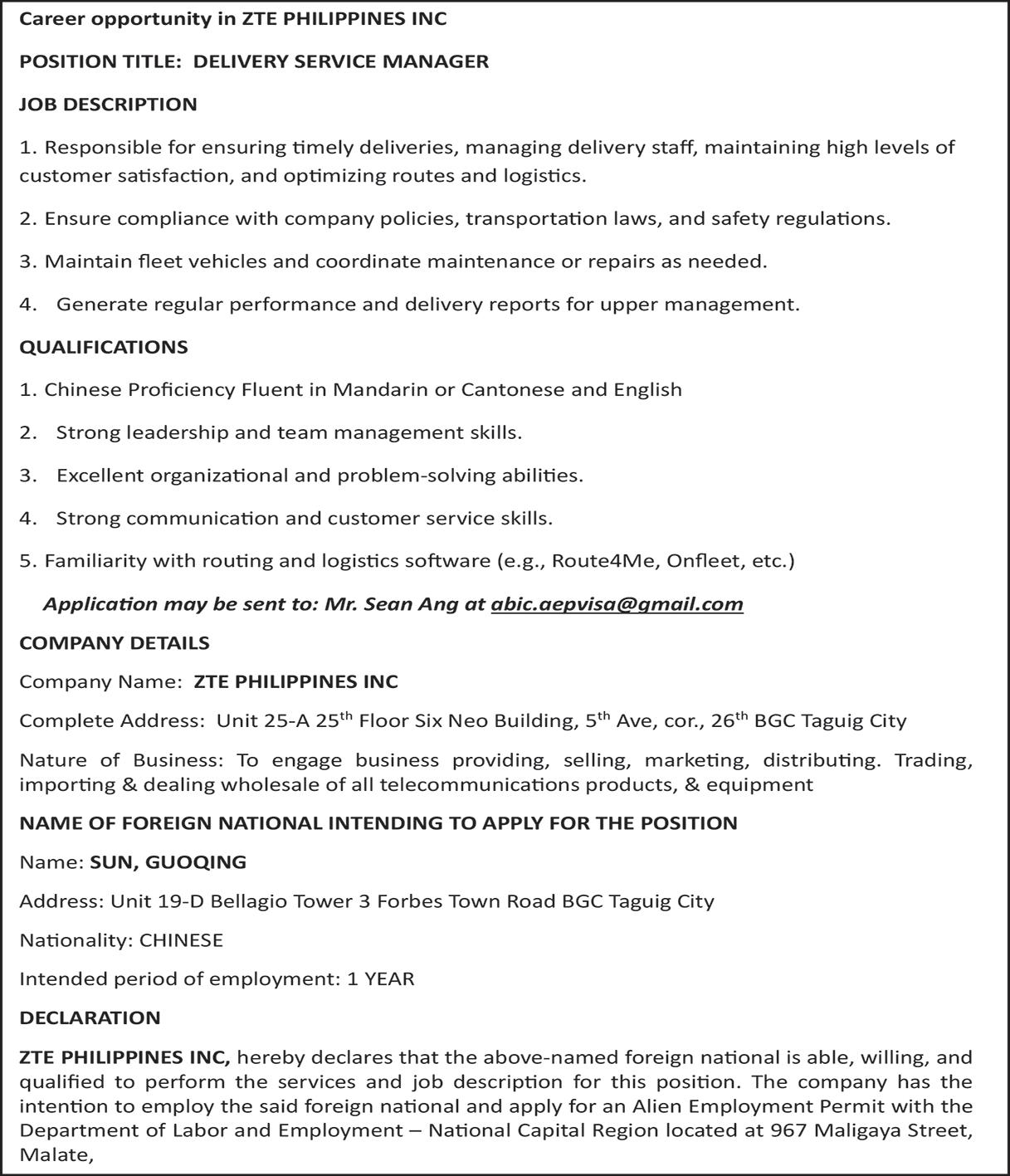
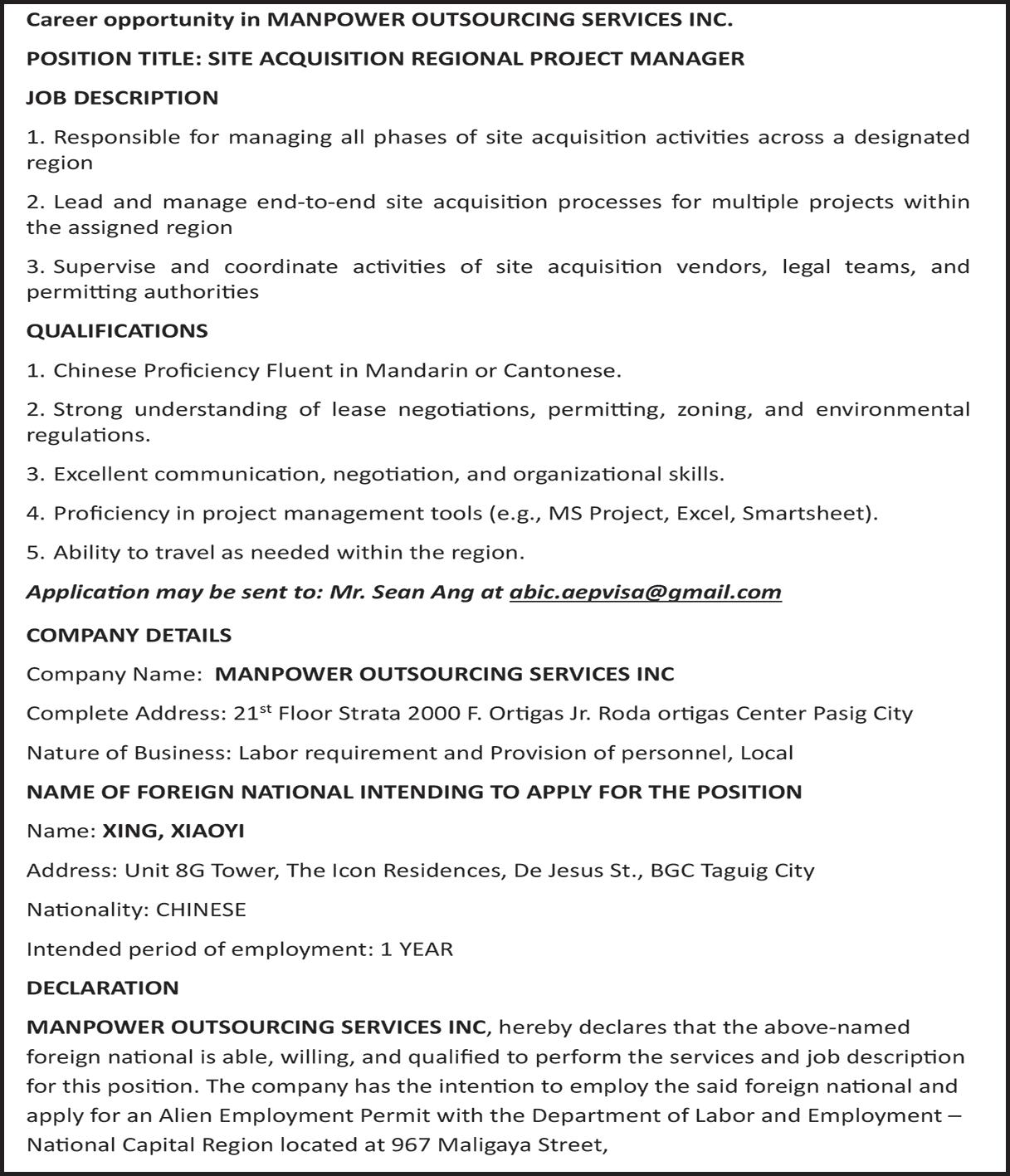
By Joshua Goodman & Gisela Salomon The Associated Press
MIAMI—As hundreds of migrants crowded into the Krome Detention Center in Miami on the edge of the Florida Everglades, a palpable fear of an uprising set in among its staff.
As President Donald J. Trump sought to make good on his campaign pledge of mass arrests and removals of migrants, Krome, the United States’ oldest immigration detention facility and one with a long history of abuse, saw its prisoner population recently swell to nearly three times its capacity of 600.
“There are 1700 people here at Krome!!!!,” one US Immigration and Customs Enforcement employee texted a co-worker last month, adding that even though it felt unsafe to walk around the facility nobody was willing to speak out. That tension—fearing reprisal for trying to ensure more humane conditions—comes amid a battle in federal courts and the halls of Congress over whether the president’s immigration crackdown has gone too far, too fast at the expense of fundamental rights.
At Krome, reports have poured in about a lack of water and food, unsanitary confinement and medical neglect. With the surge of complaints, the Trump administration shut down three Department of Homeland Security oversight offices charged with investigating such claims.
A copy of the text exchange and several
other documents were shared with The Associated Press by a federal employee on the condition of anonymity for fear of retaliation. Other documents include detainee complaints as well as an account of the arrival of 40 women at Krome, an all-male facility, in possible violation of a federal law to reduce the risk of prison rape.
There is a critical shortage of beds in detention facilities
Krome is hardly alone in a core challenge faced by other facilities: a lack of bed space. Nationwide, detentions have surged to nearly 48,000 as of March 23, a 21% increase from the already elevated levels at the end of the Biden administration. In recent weeks, they have mostly flatlined as efforts to deport many of those same migrants have been blocked by several lawsuits.
To address the shortage, ICE this month published a request for bids to operate detention centers for up to $45 billion as it seeks to expand to 100,000 beds from its current budget for about 41,000. As part of the build out, the federal government for the first time is looking to hold migrants on U.S. Army bases—testing the limits of a more than
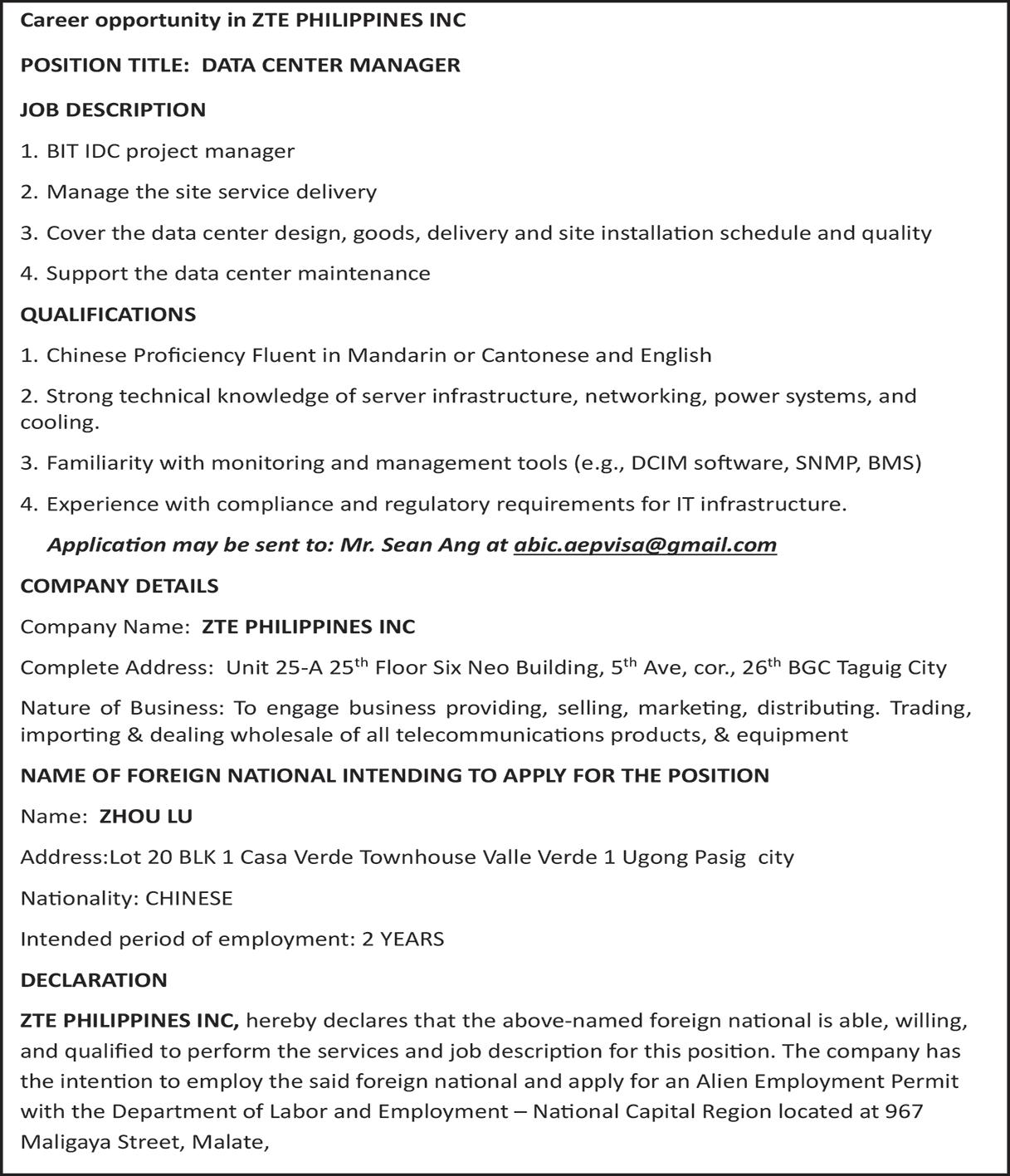
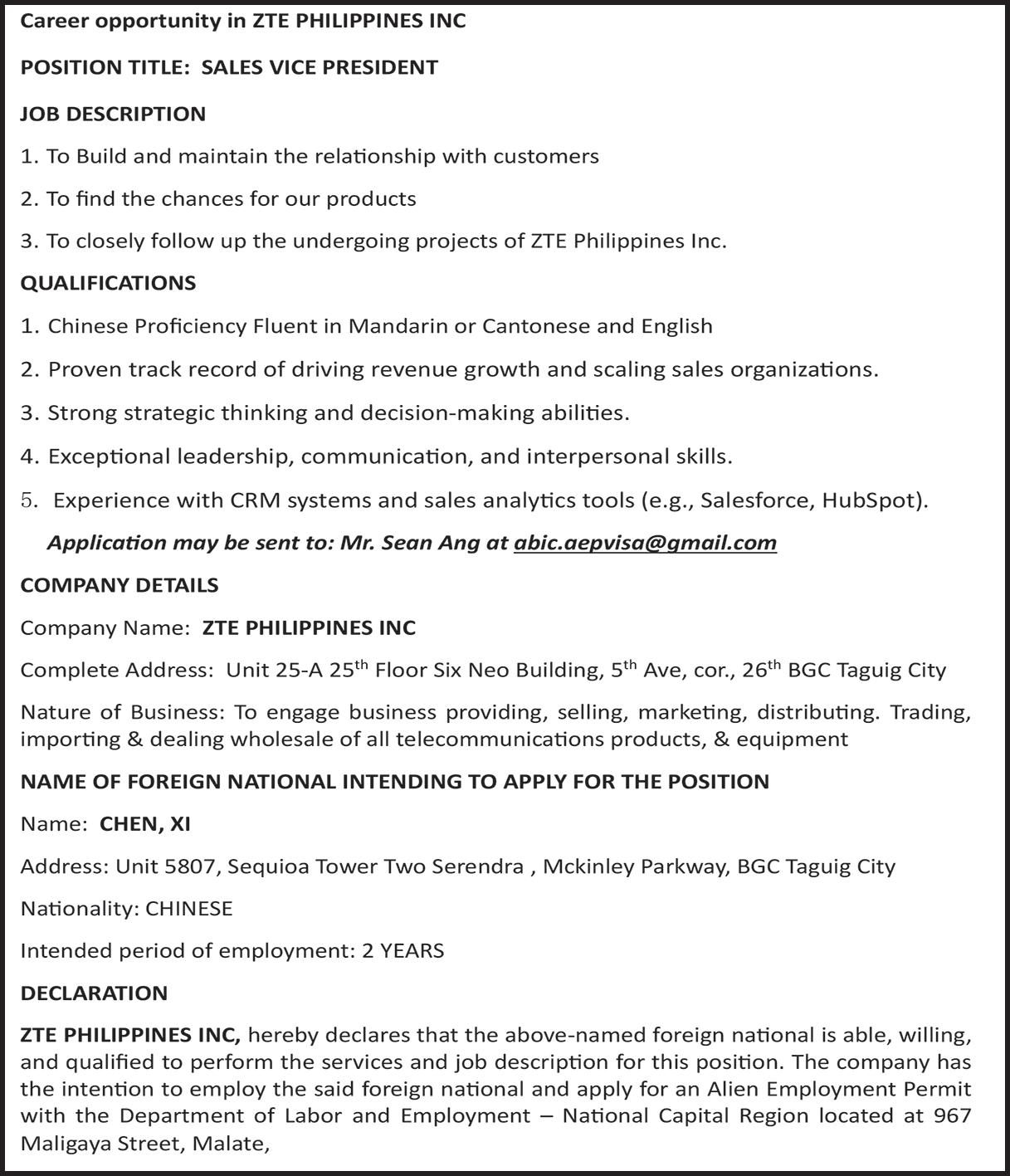
century-old ban on military involvement in civilian law enforcement.
By some measures, Trumps’ controversial approach is working. Barely 11,000 migrants were encountered at the US-Mexican border in March, their lowest level in at least a decade and down from 96,035 in December 2024, according to US Customs and Border Protection.
Other facilities have caps on the number of detainees
KROME is just one of five facilities that ICE directly runs—the others are in Buffalo, Arizona and two in Texas—and can house detainees for more than 16 hours. After Trump took office, ICE had orders to round up migrants with few options on where to send them. The vast majority of bed space is leased from local prisons, jails or privately run facilities that have strict limits on how many detainees they are contractually obligated to accept.
As its concrete cellblocks began filling up, federal workers started documenting the worsening conditions in weekly reports for the Department of Homeland Security’s leadership. They worked their way up the chain through DHS’ Office of Immigration & Detention Ombudsman, an independent watchdog established by Congress during the first Trump administration to blunt the fallout from a string of scandals about treatment at detention facilities.
The office went through four ombudsmen in two months as Trump officials surged arrests with no apparent plan on where to send them. The situation worsened in mid-March, when the office’s 100 staffers—including a case manager at Krome—were placed on administrative leave in what officials described as an effort to remove roadblocks to enforcement.
“Rather than supporting law enforcement efforts, they often function as internal adversaries that slow down operations,” DHS spokeswoman Tricia McLaughlin said.
Around the same time, Krome’s chaos spilled into public view. Images secretly shot on a cellphone and posted on TikTok showed a group of men sleeping on concrete floors and under tables with little more than their shoes as pillows.
“We are practically kidnapped,” Osiris Vázquez, his eyes bloodshot due to a lack of sleep, said in the grainy video, which garnered 4.4 million views. “We don’t want likes. We want help. Please!”
Vázquez, who was detained while driving home from a construction job near Miami, said he shared for two weeks a small room with some 80 men. Showers and phone calls weren’t allowed, the fetid-smelling bathrooms wre left unattended and food was restricted to peanut butter sandwiches.
“There was no clock, no window, no natural light,” recalled Vázquez in an interview. “You lost all notion of time, whether it’s day or night.”
Eventually, Vázquez decided to selfdeport. But his nightmare didn’t end. Once back in his hometown of Morelia, Mexico, where he hadn’t set foot in almost a decade, he had to be hospitalized twice for a respiratory infection he says he caught at Krome.
“Everyone I know got sick. We were so close together,” said Vázquez.
It could’ve been worse. Since Trump returned to the White House, three detainees have died while in ICE custody—two of them at Krome.
The latest, Maksym Chernyak, died after complaining to his wife about overcrowding and freezing conditions. The 44-year-old Ukrainian entered the U.S. legally with his wife
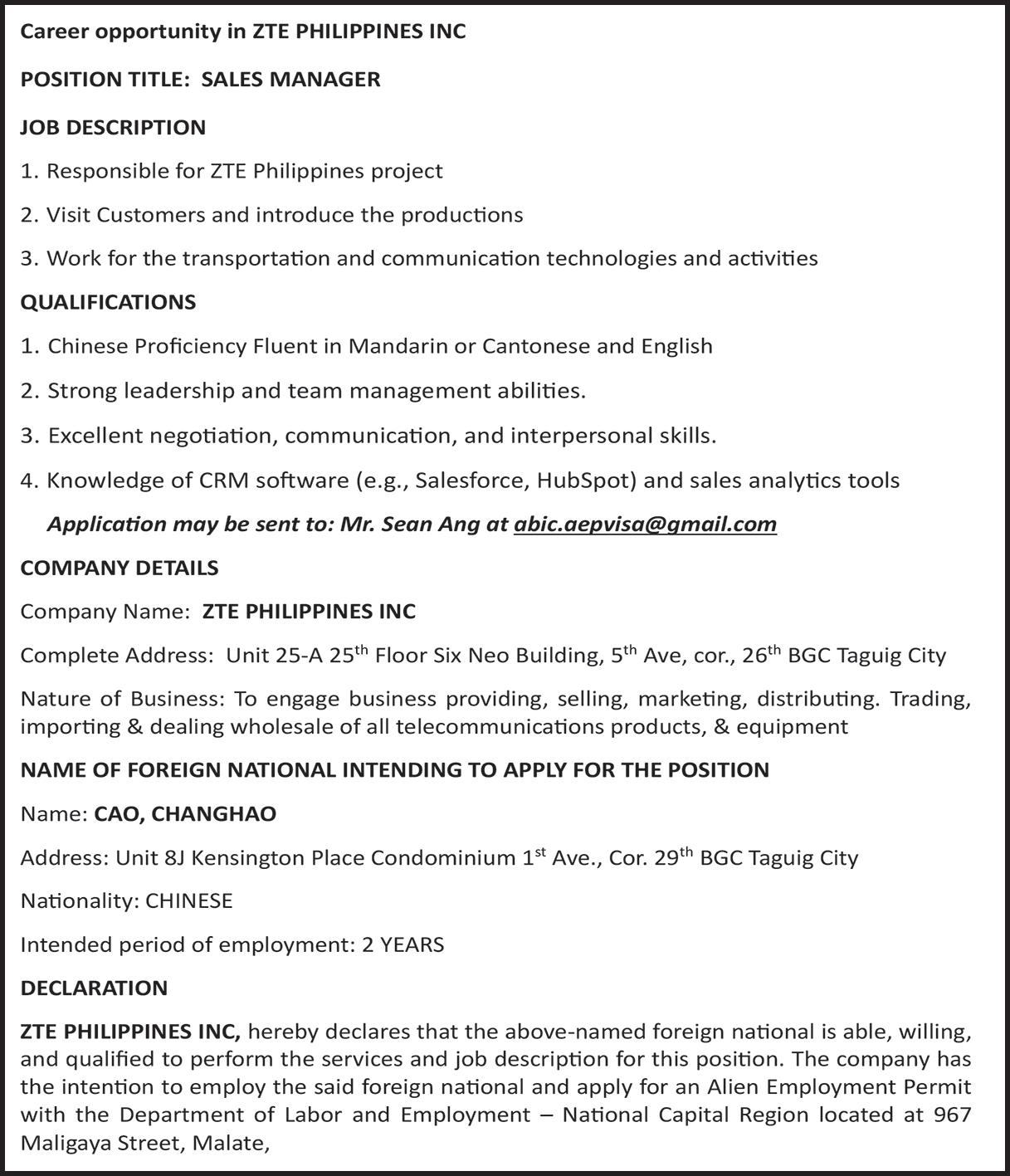
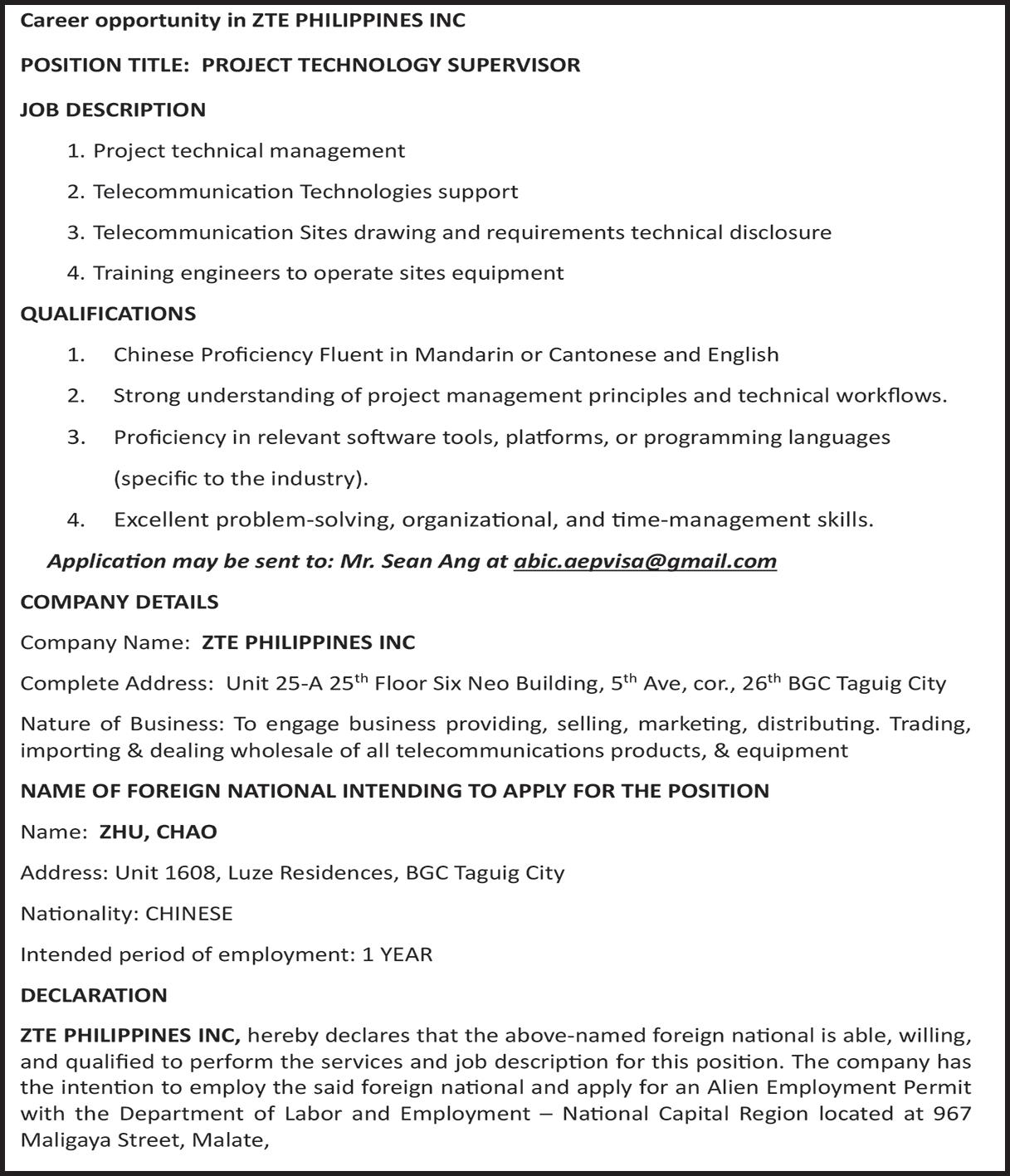
in August under a humanitarian program for people fleeing the country’s war with Russia.
He was sent to Krome after an arrest in south Florida for domestic violence and immediately got sick with a chest cold. After being monitored for a week with high blood pressure, on Feb. 18, at 2:33 a.m., he was taken to a hospital for seizure-like vomiting and shaking. An ICE report said he appeared intoxicated and unresponsive at times. Two days later, he died.
Other than acetaminophen, he received no medication to treat the blood pressure, according to a two-page ICE report about Chernyak’s death. An autopsy listed the cause of death as complications from a stroke aggravated by obesity.
Chernyak’s widow said that before her husband’s detention he was a “strong, healthy man.” Without a translator, she said, her husband struggled to communicate with guards about his deteriorating health.
“They saw his condition, but they ignored him,” said Oksana Tarasiuk in an interview. “If he wasn’t put in Krome, I’m sure that he would still be alive.”
ICE, in a statement, didn’t comment on specific allegations of mistreatment but said it adjusts its operations as needed to uphold its duty to treat individuals with dignity and respect.
“These allegations are not in keeping with ICE policies, practices and standards of care,” the agency said. “ICE takes its commitment to promoting safe, secure, humane environments for those in our custody very seriously.”
Attorneys said that in recent days, Krome has transferred out a number of detainees and conditions have improved. But that could just be shifting problems elsewhere in the migration detention system, immigration attorneys and advocates say.
Some 20 miles east of Krome, at the
Federal Detention Center in downtown Miami, correctional officers last week had to deploy flash bang grenades, pepper spray paint balls and stun rounds to quell an uprising by detainees, two people familiar with the matter told the AP.
The incident occurred as a group of some 40 detainees waited almost eight hours to be admitted into the facility as jail officers miscounted the number of individuals handed over by ICE, according to the people, who spoke on the condition of anonymity because they are not authorized to speak publicly. As confusion reigned, the arriving detainees, some from Jamaica, ripped a fire sprinkler from a ceiling, flooding a holding cell, and took correctional officers’ batons, according to the people.
The federal Bureau of Prisons, which runs the facility, would not confirm details of the incident but said that at no time was the public at risk.
“That has put a massive strain over our staff,” said Kenny X. Castillo, the president of the union representing workers at FDC Miami. “We are doing the job of two agencies in one building.”
Detentions drive profits TRUMP’S administration has yet to reveal his plans for mass deportations even as he seeks to eliminate legal status for 1 million migrants previously granted humanitarian parole or some other form of temporary protection. The latest ICE data suggests so-called removal of migrants is actually below levels at the end of the Biden administration.
That means detentions are likely to rise and, with facilities at capacity, the need to house all the detainees will get more urgent. Spending on new facilities is a boon for federal
See “Arrests,” A17
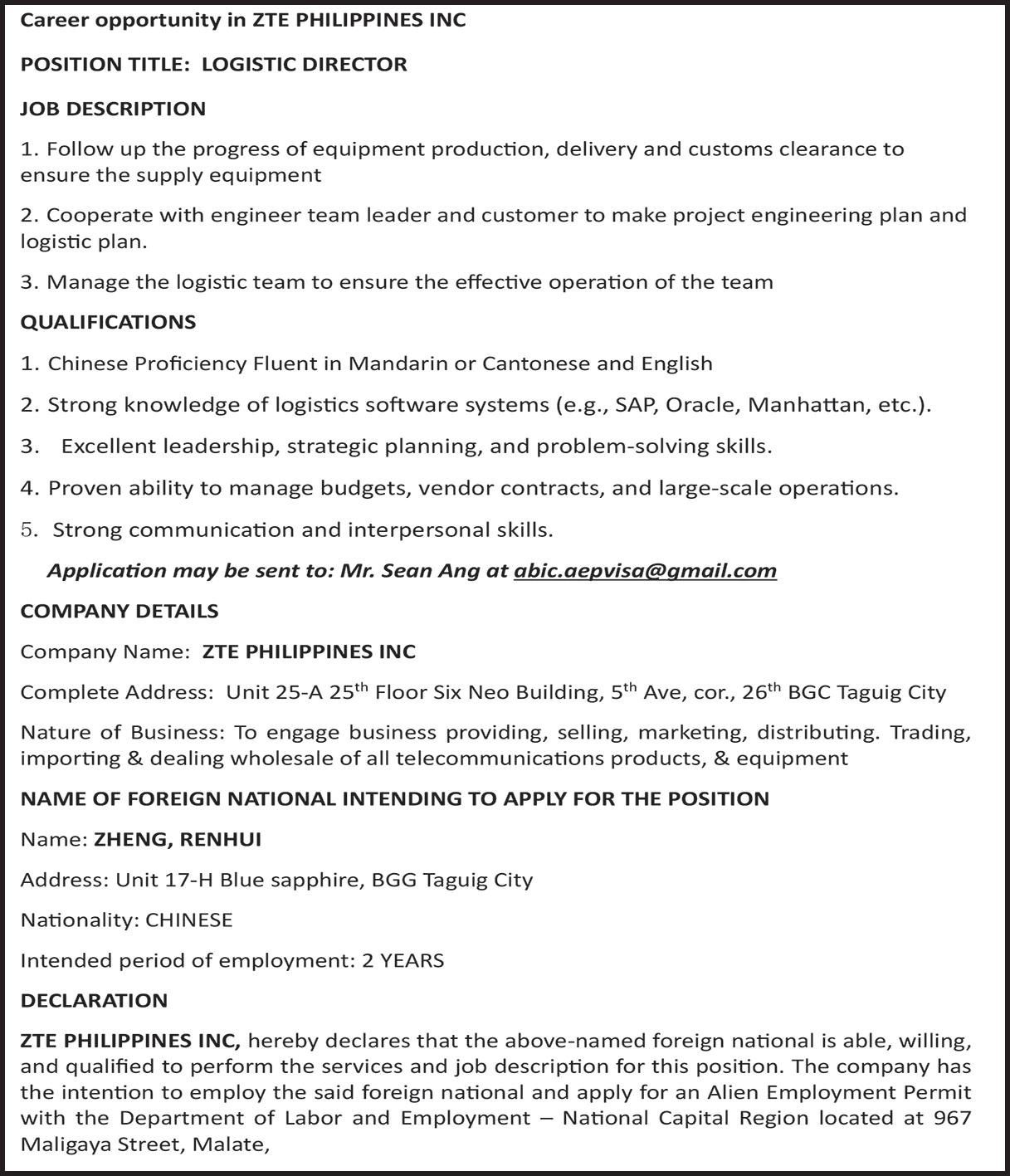
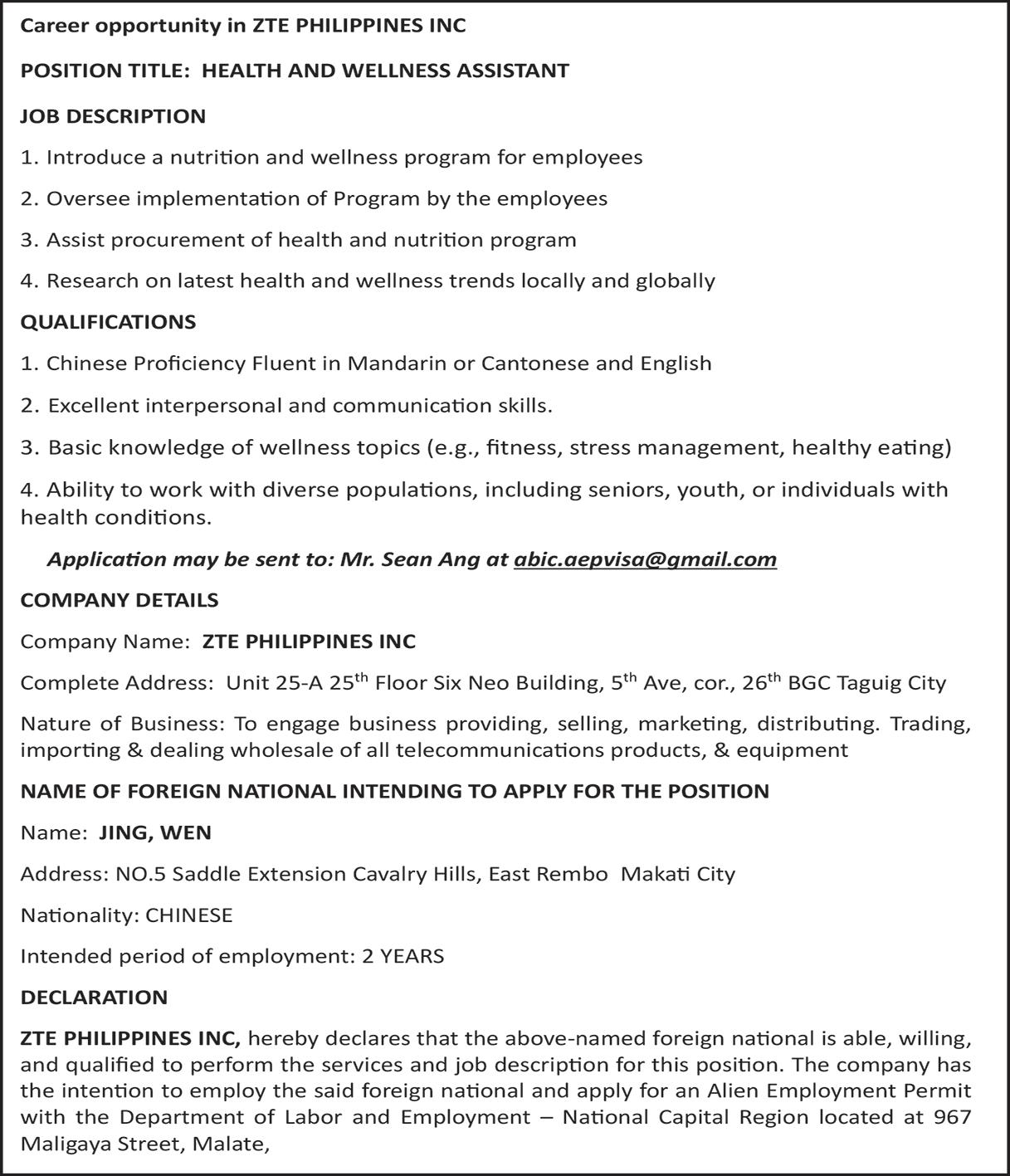
contractors, whose stock prices have surged since Trump’s election. But finding workers willing to carry out Trump’s policy remains a major challenge.
Only a handful of applicants showed up at a recent hiring fair in Miami organized by Akima Global Services, a $2 billion federal contractor that staffs several immigrant detention centers, including Krome.
“Many of these facilities have been chronically understaffed for years,” said Michelle Brané, an immigration attorney and the last ombudsman during the Biden administration. “These are not easy jobs and they aren’t pleasant places to work.”
On Thursday, advocates led by the Robert F. Kennedy Human Rights organization filed a lawsuit against DHS seeking to challenge the Trump administration’s decision to shutter the oversight offices.
Krome has a history of substandard conditions
ALLEGATIONS of substandard conditions are nothing new at Krome.
The facility was set up as essentially the nation’s first migrant detention center in the 1970s to process the large number of boat refugees fleeing Haiti. Before that, almost no migrants were detained for more than a few days.
In the early 2000s, the facility was wracked by harrowing accounts of guards sexually assaulting or coercing sexual favors from female prisoners. Several guards were criminally charged.
But more recently, the facility appeared to have turned a corner, with ICE even inviting the media to tour a first-of-its-kind mental health facility.
Then it changed abruptly.
The facility housed 740 men and one woman on March 31, according to the latest ICE data, which reflects only the midnight count on the last day of the month. That’s up 31% from just before Trump took office. ICE refused to disclose Krome’s current capacity because of security concerns.
So far this year, the ombudsman’s office has received more than 2,000 inmate complaints, according to the federal employee.
Brané said she worries that detainee deaths, which started to rise during the Biden administration as arrests surged, could spike without anyone on the ground to investigate complaints of mistreatment.
“To my knowledge, everything was just frozen and people were told to go home,” said Brané. “If you’re ramping up, you’re taking away the oversight and you’re increasing the number of people you’re detaining, it’s a recipe for disaster.”
Following Chernyak’s death, a grassroots coalition of immigration activists and farleft groups organized a demonstration on the highway leading to Krome’s entrance calling for the closure of the center. A few hundred protesters showed up, some holding pictures of migrants “kidnapped” by ICE and signs that read “American Gulag, American Shame” and “Immigrants Make America Great.”
AP writers Michael Sisak in New York and Rebecca Santana in Washington contributed to this report.
By Vasilisa Stepanenko & Samya Kullab The Associated Press
KYIV, Ukraine—Russia pounded Kyiv with an hourslong barrage of missiles and drones Thursday, killing at least 12 people in its deadliest assault on the Ukrainian capital since July and drawing a rare rebuke of Moscow from US President Donald Trump just as peace efforts were coming to a head.
The attack kept residents on edge for about 11 hours, with many staying awake all night while loud explosions reverberated around the city and flashes of light punctuated the sky. Families gathered in public air-raid shelters, some of them bringing cats and dogs. The strikes that began around 1 a.m. hit at least five neighborhoods and heavily damaged multiple residential buildings. Around 90 people were wounded.
Ukrainian President Volodymyr Zelenskyy said he would cut short his official trip to South Africa and return home as the city reeled. The bombardment appeared to be Russia’s biggest attack on Kyiv in nine months, and Zelenskyy called it one of Russia’s “most outrageous.”
Trump, who has long been reluctant to criticize the Kremlin, said he was “not happy” with the assault. He implored Russian President Vladimir Putin to cease the devastating strikes.
“Not necessary, and very bad timing. Vladimir, STOP!” Trump wrote on his Truth Social media platform, adding “Lets get the Peace Deal DONE!”
Senior US officials have warned that the Trump administration could soon give up its efforts to stop the war if the two sides do not come to agreement to halt the fighting.
The Ukrainian air force said Russia fired 66 ballistic and cruise missiles, four plane-launched airto-surface missiles and 145 Shahed and decoy drones at Kyiv and four other regions of Ukraine. Rescue workers with flashlights searched the charred rubble of partly collapsed homes as the blue lights of emergency vehicles lit up the dark city streets.
The attack came as weeks of peace negotiations appeared to be
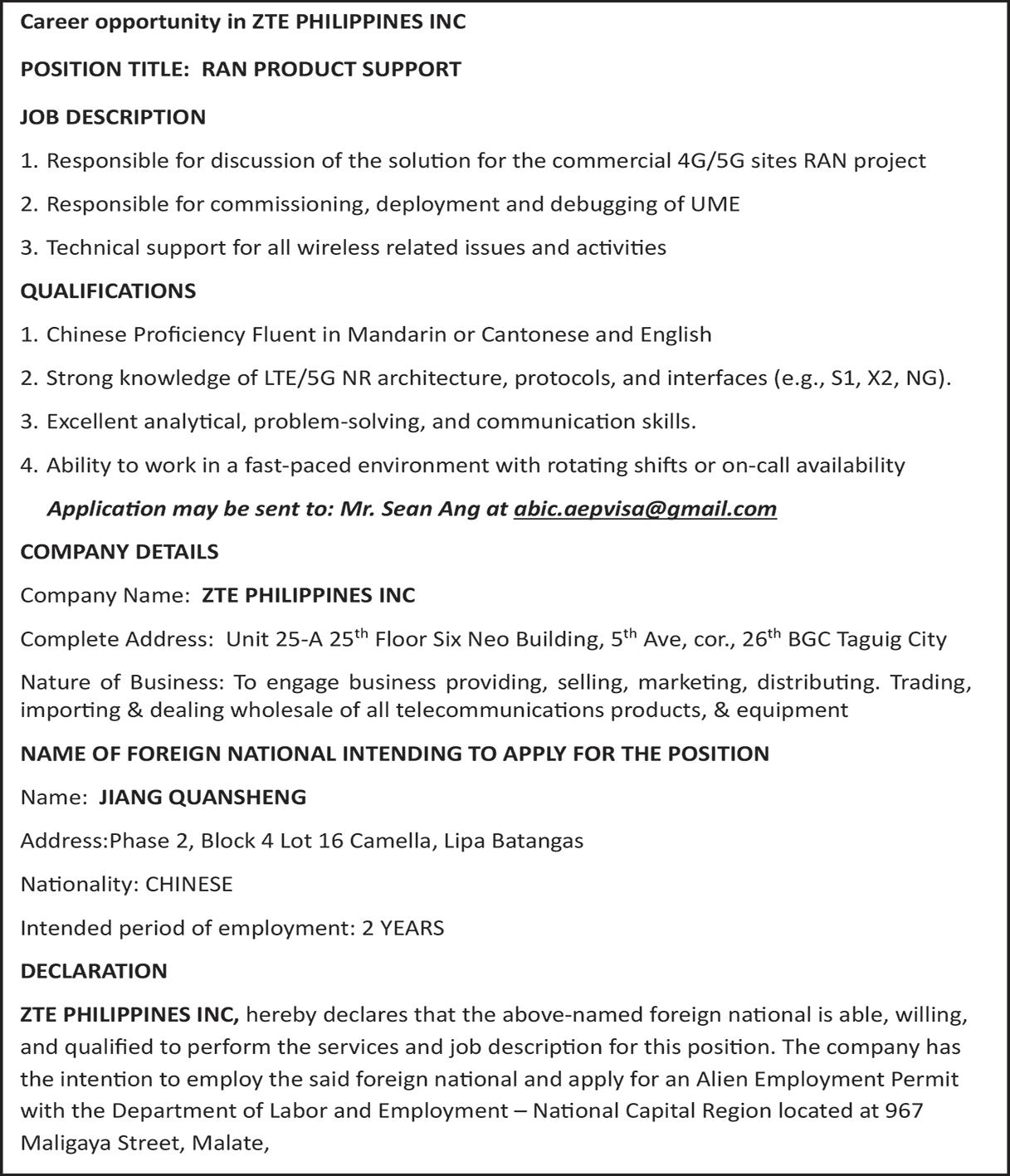
culminating without an agreement in sight and hours after Trump lashed out at Zelenskyy. Trump accused him of prolonging the “killing field” by refusing to surrender the Russia-occupied Crimea Peninsula as part of a possible deal.
Later Thursday during an Oval Office meeting with Norwegian Prime Minister Jonas Gahr Støre, Trump said that Crimea was taken from Ukraine without a fight. He also noted that the annexation of the Ukrainian peninsula happened under President Barack Obama’s watch.
Asked what Putin is doing now to help forge a peace deal, Trump responded, “stopping taking the whole country, pretty big concession.”
Zelenskyy says future of negotiations depends on Moscow
ZELENSKYY has repeated many times during the war, now in its fouth year, that recognizing occupied territory as Russian is a red line for his country. He noted Thursday that Ukraine agreed to a US ceasefire proposal 44 days ago, as a first step to a negotiated peace, but that Russian attacks continued.
He said in South Africa that the latest attack meant the future of negotiations “depends on Russia’s intention because it is in Moscow where they have to make a decision.”
During recent talks, Russia hit the city of Sumy, killing more than 30 civilians gathered to celebrate Palm Sunday, battered Odesa with drones and blasted Zaporizhzhia with powerful glide bombs.
The European Union’s foreign policy chief, Kaja Kallas, said the latest attack underscored that the main obstacle to ending the war is Russia.
“While claiming to seek peace,
Russia launched a deadly airstrike on Kyiv,” she wrote on social media. “This isn’t a pursuit of peace, it’s a mockery of it.”
French President Emmanuel Macron said Putin should “stop lying” when he claims to want peace while continuing to bomb Ukraine.
“There is only one answer we are waiting for: Does President Putin agree to an unconditional ceasefire?” Macron said during a visit to Madagascar. He added that American “anger should focus on just one person: President Putin.”
Ukrainian Foreign Minister Andrii Sybiha said the attack showed that Putin is determined to press his bigger army’s advantage on the roughly 1,000-kilometer (620mile) front line, where it currently holds the momentum.
“Putin demonstrates through his actions, not words, that he does not respect any peace efforts and only wants to continue the war,” Sybiha said on X. “Weakness and concessions will not stop his terror and aggression. Only strength and pressure will.”
Since Russia’s February 2022 full-scale invasion of its neighbor, Russian attacks have killed some 13,000 civilians, including 618 children, Ukrainian Prime Minister Denys Shmyhal noted.
Kyiv residents spent the night in shelters
AT least 42 people were hospitalized following the attack on residential suburbs of Kyiv, Ukraine’s State Emergency Service said.
The dead included a brother and sister, ages 21 and 19, according to Zelenskyy.
At a Kyiv residential building that was almost entirely destroyed, emergency workers removed rubble with their hands, rescuing a trapped woman who emerged from the wreckage covered in white dust and moaning in pain.
An elderly woman sat against a brick wall, her face smeared with blood and her eyes fixed on the ground in shock as medics tended to her wounds.
Fires were reported in several residential buildings, said Tymur Tkachenko, the head of the city military administration.
Oksana Bilozir, a student, suffered a head injury in the attack. With blood seeping from her bandaged head, she said that she heard a loud explosion after the air alarm blared and began to grab her things to flee to a shelter when another blast caused her home’s walls to crumble and the lights to go off.
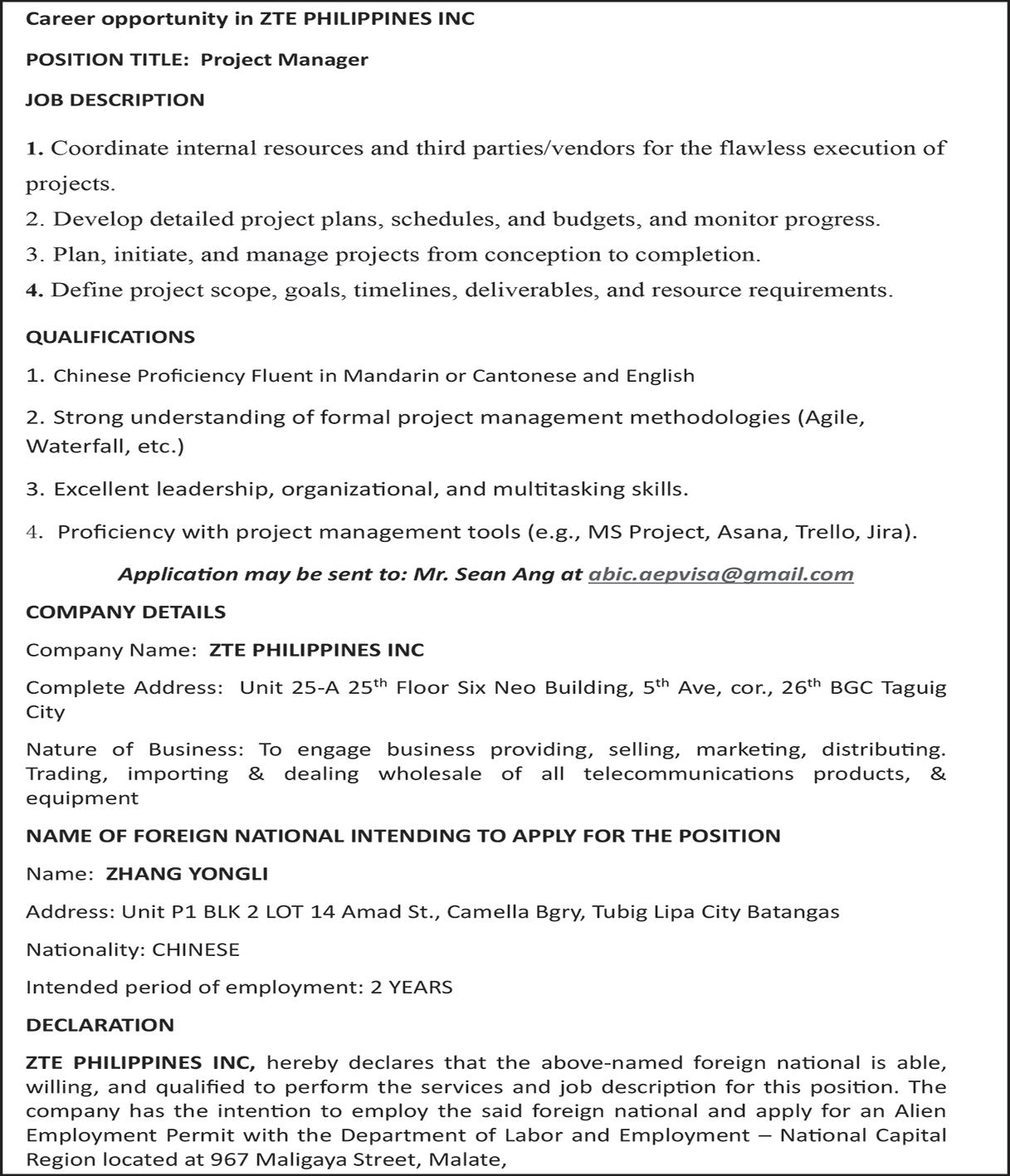

“I honestly don’t even know how this will all end, it’s very scary,” Bilozir said, referring to the war.
“I only believe that if we can stop them on the battlefield, then that’s it. No diplomacy works here.”
Zelenskyy to return from South Africa
Zelenskyy said in a Telegram post that he would fly back to Kyiv after meeting with South African President Cyril Ramaphosa.
The Ukrainian leader had hoped to recruit further South African support in efforts to end the war with Russia.
“After that, we came to the shelter because it was scary and dangerous at home,” she said.
In Kyiv’s Sviatoshynskyi district, the attack flattened a twostory residential building and heavily damaged nearby multistory buildings. At a nearby school-turned-relief center, children helped parents cover blown-out windows with plastic while others queued for government compensation. Many stood in blood-stained clothes, still shaken.
The Associated Press journalist Michelle Gumede in Pretoria, South Africa, contributed to this report.
Anastasiia Zhuravlova, 33, a mother of two, was sheltering in a basement after multiple blasts damaged her home. Her family was sleeping when the first explosion shattered their windows and sent kitchen appliances flying in the air. Shards of glass rained down on them as they rushed to take cover in a corridor.
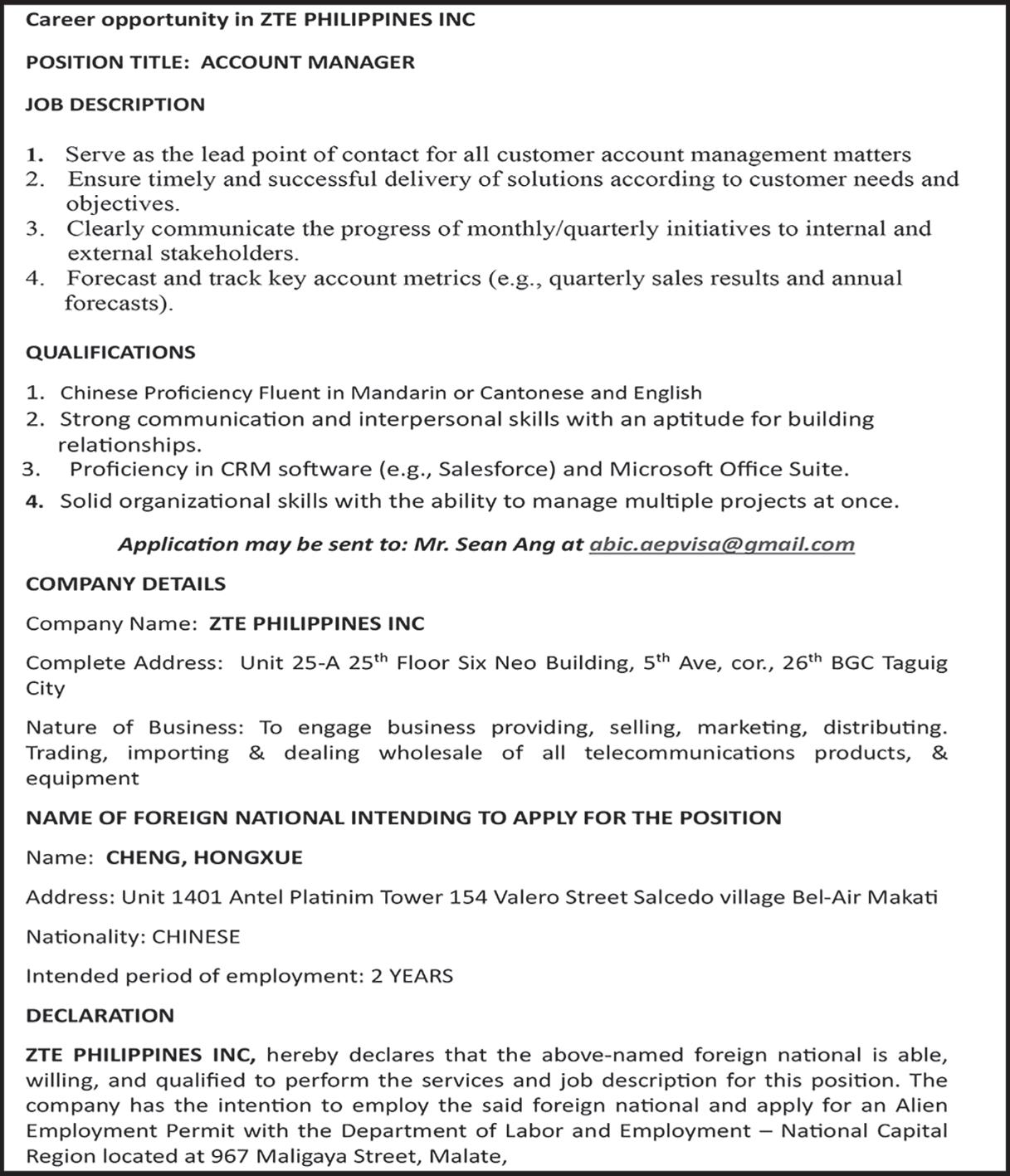
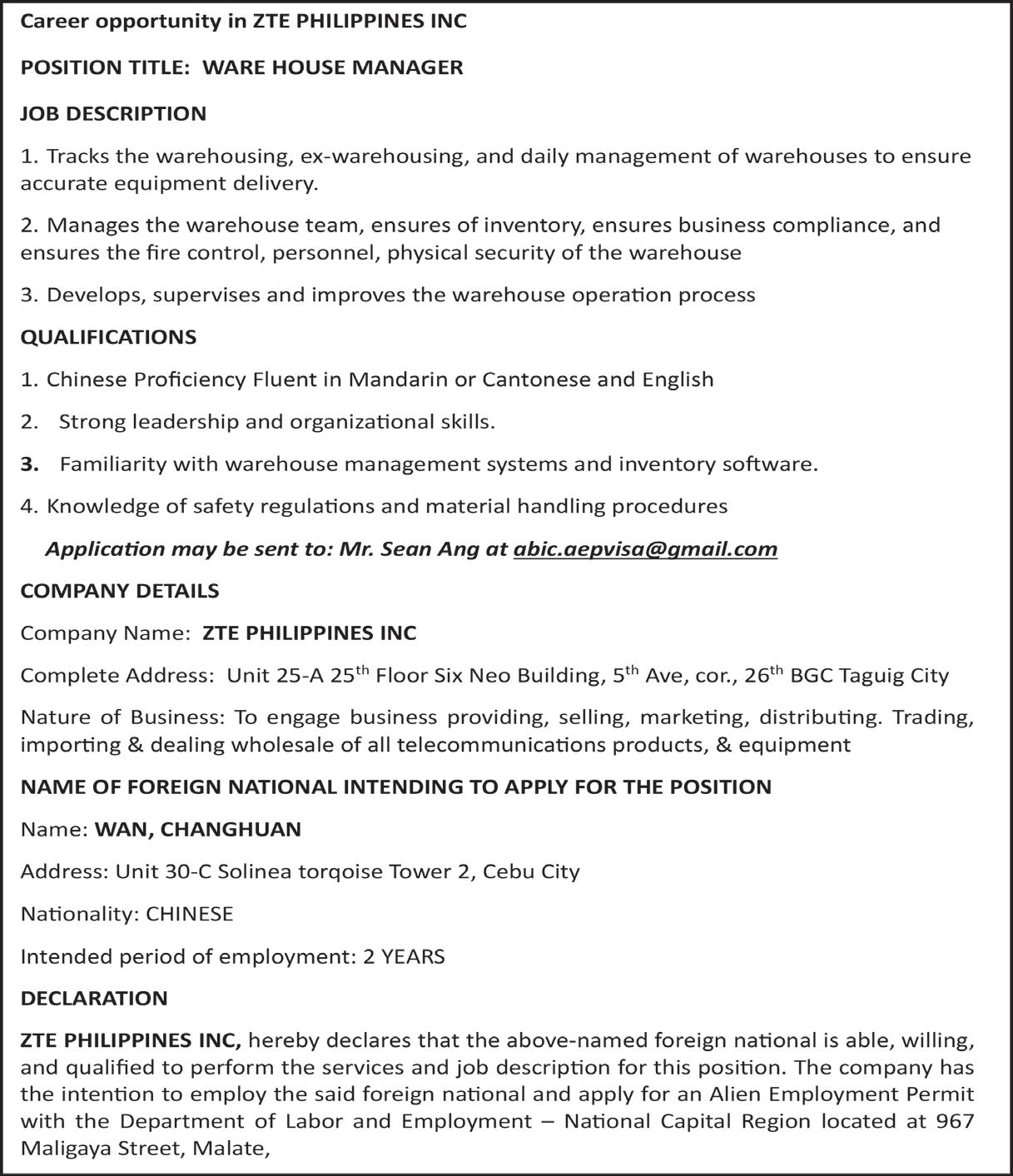
MADRID—This time, Iga Swiatek had the answers against teenage sensation Alexandra Eala.
After a quarterfinal loss to the rising star from the Philippines last month in Miami, Swiatek rallied to a 4-6, 6-4, 6-2 victory in the second round of the Madrid Open on Thursday.
The second-ranked Swiatek, who is the defending Madrid champion, is trying to reach her first final of the season.
“On clay I feel like I have a little bit more advantage sometimes in the situations, where Alexandra could take more advantage on faster hard courts,” the four-time French Open champion said. “I understand that there’s hype about these young players, but you got to be focused on yourself.”

The 19-year-old Eala, a product of Rafael Nadal’s academy, defeated Swiatek in straight sets during her breakthrough run in Miami.
Eala broke Swiatek’s serve early and cruised to victory in the first set at the Caja Magica center court, but the former No. 1 regained her control for the rest of the match, taking advantage of a letdown by her young opponent.
“From the beginning I didn’t play smoothly, but I managed to solve some problems,” said the 23-year-old Swiatek, who was a set and a break down before rallying to victory. Swiatek has made three semifinal appearances this year, including at the Australian Open and in Indian Wells. She lost her second match in Stuttgart last week, falling against Jelena Ostapenko in three sets.
Before beating Swiatek in Miami, the left-handed Eala had also defeated two other Grand Slam winners—Ostapenko and Madison Keys. Her run ended in the semifinals after a loss to Jessica Pegula.
The last-four appearance in Miami allowed Eala to become the first Filipina to be ranked inside the top 100. She is currently the No. 72. Gauff recovers from 0-6 start COCO GAUFF got off to a poor start but came back to defeat Dayana Yastremska 0-6, 6-2, 7-5 in a secondround match.
It was only the second time Gauff won after losing the first set 6-0 in WTA-level events. She had done it
LA SALLE faces Far Eastern University in a crucial match as the battle for semifinal rankings comes down to the final weekend of the University Athletic Association of the Philippines Season 87 women’s volleyball eliminations.
The Lady Spikers gun for their 10th win in the 3 p.m. clash with the Lady Tamaraws on Saturday at the Araneta Coliseum and hope for a Lady Bulldogs victory over the Tigresses Sunday to avoid complications.
La Salle and University of Santo Tomas are in joint second with 9-4 records. If both teams hurdle their final elimination-round assignments,
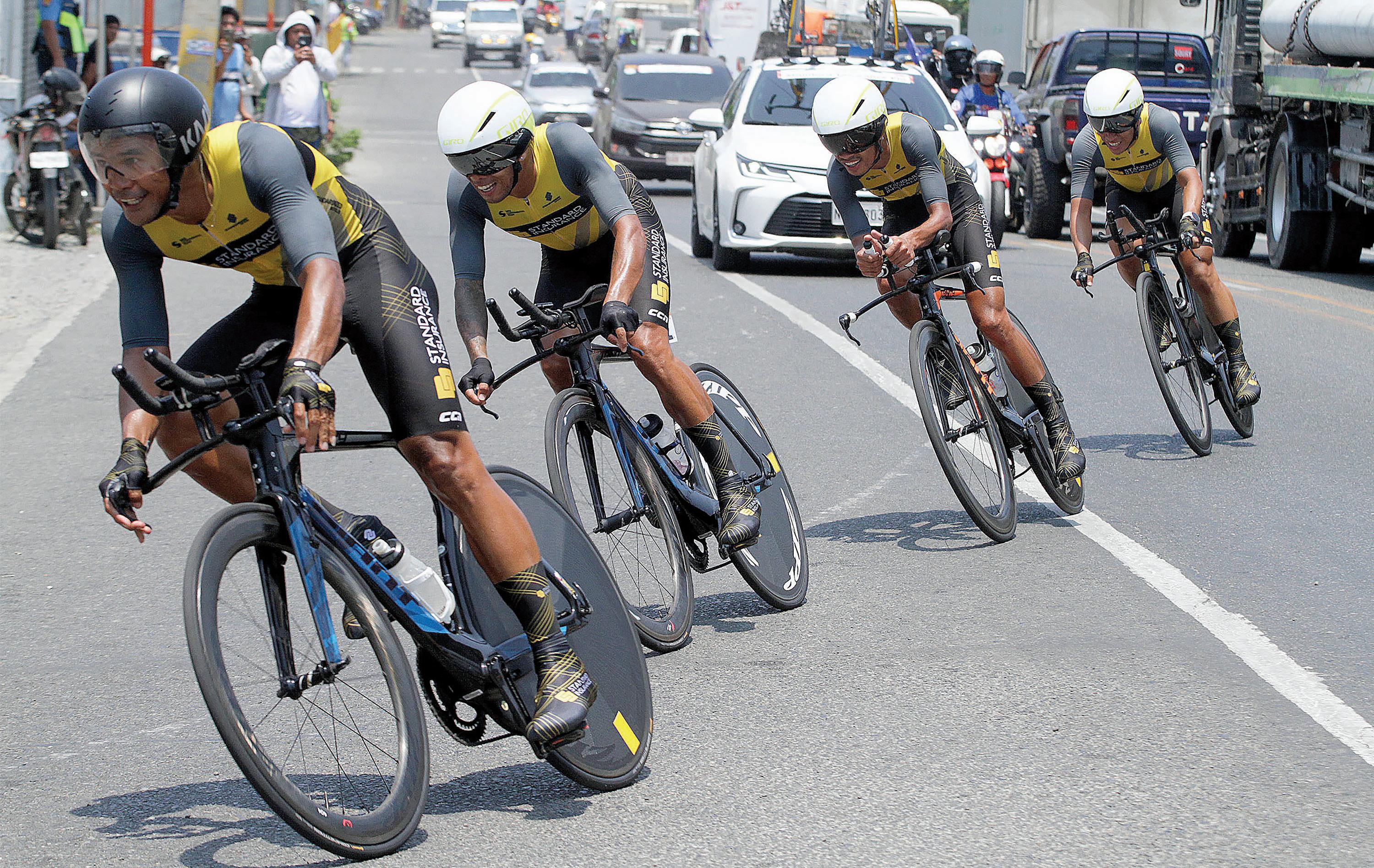
ago. The fourth-ranked Gauff needs two more victories to reach the quarterfinals for her best appearance in five outings in Madrid. She will next face fellow American Ann Li, who defeated Leylah Fernandez 6-4, 3-6, 6-4.
Other results
EARLIER Thursday, world No. 7 Mirra Andreeva, who will turn 18 on Tuesday, reached the third round by defeating Marie Bouzkova 6-3, 6-4, while Brazil’s Bia Haddad Maia rallied to beat Bernard Pera 2-6, 6-3, 6-1. American Katie Volynets lost 6-1, 6-2 to Diana Shnaider, and countrywoman Emma Navarro won 7-5, 7-5 against Maya Joint.
Nishikori’s 450th win IN the men’s side, former world No. 4 Kei Nishikori defeated Alexsandar Vukic 6-4, 3-6, 6-3 for his 450th tourlevel win. The 64th-ranked Japanese was a 2014 finalist in Madrid. “I had no idea,” the 35-year-old Nishikori said about his milestone. “I just try to play one match at a time. It’s a lot, yes...I have played for 18 years now, hopefully I can reach 500 [wins].” He will play 29th-seed Denis Shapovalov in the second round. Teenager Fonseca advances Joao Fonseca, the 18-year-old Brazilian who has become a sensation on tour this year, defeated Elmer Moller 6-2, 6-3 on center court to set up a second-round meeting against 11th-seeded
By Josef T. Ramos
IGAN, Ilocos Sur—
VRonald Oranza was pleased to lead the local charge again, this time earning the top spot on the podium with his team Standard Insurance Philippines ruling Stage Two, a Team Time Trial, on Friday in the 2025 Tour of Luzon: Great Revival from San Agustin Church in Paoay to Ilocos Sur Capitol here.
Outraced by his South Korea’s Joo Dae-Yeong in the opening stage, Oranza, 32, anchored the powerhouse continental team that submitted a time of one hour, 22 minutes and 31 seconds over the the 68.5-kilometer course.
“We are all glad to hear our name as champion,” Oranza, who finished second in Stage One, said. “We will try to get back in contention in Stage three. We will do our best, but we will still talk about our strategy later in the next stage.”
Oranza’s team title win has
boosted his desire to chase early
leader Joo.
“We are hoping we recover. As I said, we will try our best,” Oranza added.
Joining Oranza were George Oconer, Junrey Navarra, Jeremy Lizardo, Dave Cangayao, and Jan Paul Morales, who still managed to join the race despite some bruises and wounds after crashing in Paoay during the opening stage mass start race.
“I am fine and feel good although I can still feel some pain,” Morales said. They will take home the P70,000 cash prize for winning the Team Time Trial although Stage two will not be counted in the overall team standings.
Go for Gold Philippines riders Jerico Lucero, Aidan James Mendoza, Marc Lago, and Jaypee Olarte came in second, trailing by two minutes and eight seconds, and bagged P40,000.
7Eleven Cliqq Roadbike Philippines was third, also 2:08 behind.
MPT Drivehub Cycling Team actually finished 1:47 off the pace,

they will duke it out in a playoff for the twice-to-beat advantage in the semifinals.
“That’s what we reminded them after we lost to UP—these last two games are extremely important and must-win matches for us. They need to work for every point, one step at a time, until we get there. We just have to hold on to that desire within ourselves— that we really want to win,” La Salle assistant coach Noel Orcullo said after La Salle nipped Adamson University in five sets last Sunday. FEU sits in fourth place with an 8-5 record, and a loss will seal a semfinal rematch with NU, which at 11-2 has
already clinched the No. 1 ranking and the twice-to-beat incentive.
Even with a win over the Lady Spikers, the Lady Tamaraws will stay in the No. 4 spot if the Tigresses beat the Lady Bulldogs.
A triple tie among La Salle, UST and FEU at 9-5 will necessitate a tiebreak by ranking points. The Lady Spikers and the Tigresses currently have 27 points, while the Lady Tamaraws are at 24.
Ateneo and University of the East seek to close out their campaigns on a winning note in the other women’s match at 1 p.m.
In the men’s division, FEU and La Salle clash at 11 a.m.
As they wind up the eliminations, the Tamaraws, who are already assured of the No. 1 ranking and the twice-to-beat bonus, are working to improve their game as they brace for the Final Four.
The Green Spikers, sporting a 9-4 record, are hoping to close out the elims strong. A win by La Salle, coupled with a NU victory over UST on Sunday will give the Taft-based side the No. 3 slot.
“We’re still adjusting to what we want in preparation for the Final Four. Of course, it doesn’t happen right away, but I’m confident that my team will understand what we really want in our system,” Green Spikers coach Jose Roque said.

but wound up fourth because of an infraction.
Oranza and the squad managed to keep the pace up even after an early mishap when Cangayao’s bike chain broke.
Rounding out the top 10 were
Excellent Noodles Cycling Team (2:25 behind), Exodus Army Cycling Team (2:36), Malaysia Pro Cycling (2:48), D’ Reyna Orion Cement (3:21), Victoria Sports Cycling Team (3:23) and Bryton Racing Team (4:42).
The clocking of each of the 16 teams in the TTT was determined by the fourth rider of the squad who crossed the line in front of the Ilocos Sur provincial capitol within the city.
All 111 riders finished the stage.
Hong Kong’s CCN Team had dropped out of the team race after its cyclists got decimated to just three during the opening stage Thursday.
The individual champion will earn P500,000 while the team champion of the race organized by DuckWorld PH and presented by Metro Pacific Tollways Corporation brings home P1 million.
The eight-day race was also supported by Pilipinas Live, Meralco, Maynilad, Metro Pacific Health, Megaworld, Landco, PLDT and Smart. Stage Three of the race endorsed by the POC, Philippine Sports Commission, Games and Amusements Board, BCDA and MVP Sports Foundation is a largely flat 133.30-kilometer ride going to San Juan, La Union, the nation’s surfing capital. The champion will be crowned in Baguio City on May 1. Meanwhile, DuckWorld PH Chairman Patrick Gregorio thanked people of Ilocos Norte headed by Governor Matthew Manotoc for being a great partner in the race.
“As we leave Paoay, Ilocos Norte, we leave behind beautiful memories of the 2025 Tour of Luzon. We could not have chosen a better place or better partners to kick off this Great Revival. Very thankful to Governor Matt and the people of Ilocos Norte,” Gregorio said.

VTV Binh Dien Long An thus joined Zhetysu VC of Kazakhstan and Nakhon Ratchasima of Thailand, both of whom swept PLDT and Creamline in Thursday’s quarterfinals, in the semis set for Saturday with the winners disputing the championship on Sunday.
The Vietnamese will take on the winner of the Beijing Baic Motor–Petro Gazz quarterfinal in the continental tournament organized by Sports Vision and backed by Mikasa, Mizuno and Grand Sport.
Taipower pushed the Vietnamese to the limit in the fourth set, knotting the score at 24. After Vi Thi Nhu Quynh launched a powerful hit, Wan-Yun Hsu responded with her own clutch attack to extend the frame.
A Kaohsiung error gave Vietnam match point, but Hsu struck again to tie it at 26. Vi, however, would not be denied, delivering the go-ahead spike before the controversial net violation ended the Taiwanese squad’s run.
“Taipower played really well in the fourth set—they worked as a team, and we struggled to build
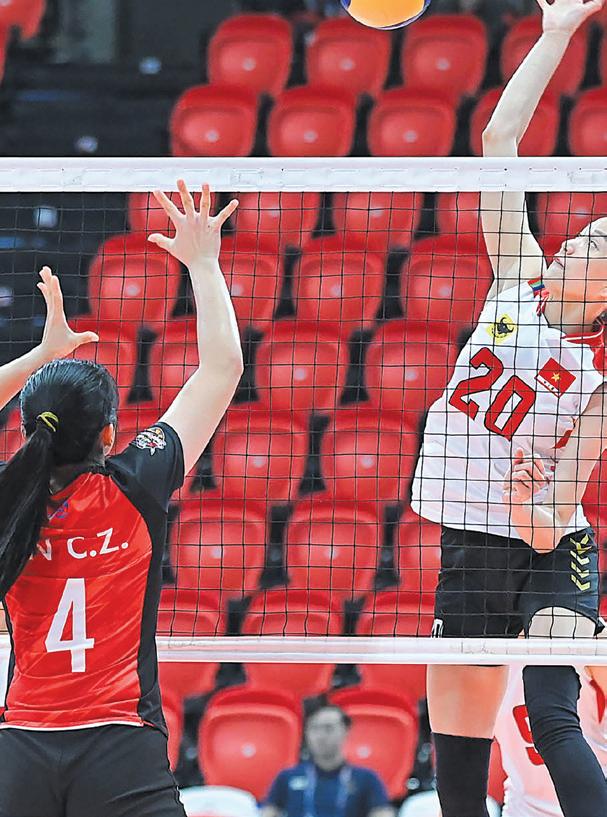
THI
and the reigning Vietnamese League champions Binh Dien Long An march on to the round of
in the continental club competition.
momentum. They kept catching up. In the end, we’re fortunate to win the match,” said Tran, who finished with 14 points, 11 excellent digs, and 16 excellent receptions in another superb all-around performance.
Lu Thi Phuong led Vietnam with 19 points on 17 attacks and two blocks, while Vi Thi Nhu Quynh added 18 points and seven excellent digs as VTV Binh Dien Long An geared up for a potential semis rematch against Pool C tormentor Beijing Baic Motor. Nguyen Khanh Dang anchored the floor defense with 20 excellent digs and eight receptions. Meanwhile, Taipower, which topped Pool B with an unblemished record, bowed out of the tournament supported by local partners PLDT, MWell, Eagle Cement, Rebisco, Akari, Gameville, PNVF, PSC, Cignal and The Look Group.